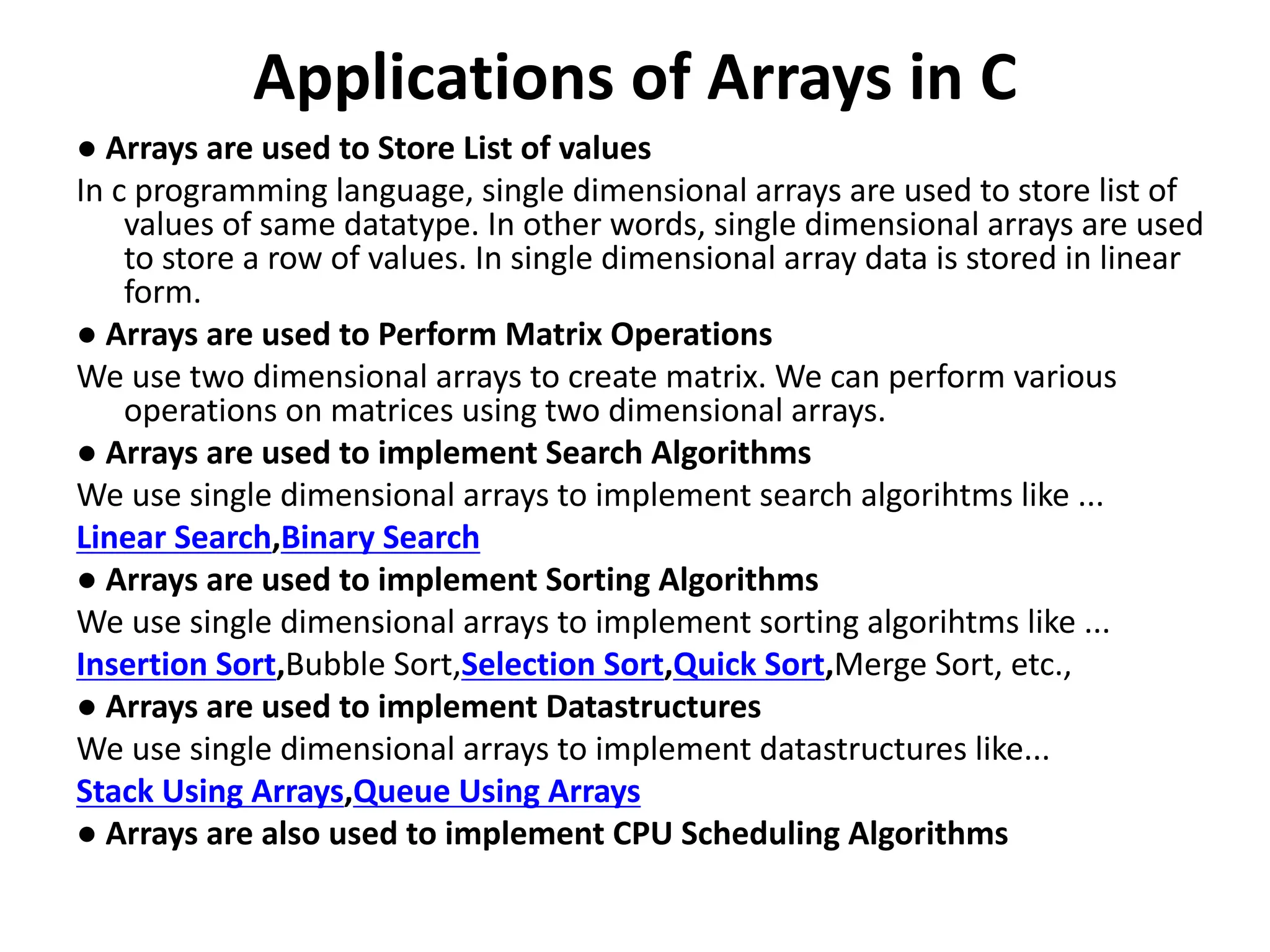The document provides a comprehensive overview of the C programming language, including its history, structure, and key concepts such as data types, variables, constants, operators, and control statements. It details how to create, compile, and execute C programs, along with the syntax and rules for writing C code. Additionally, it covers built-in input/output functions and decision-making structures like if statements and switch statements.
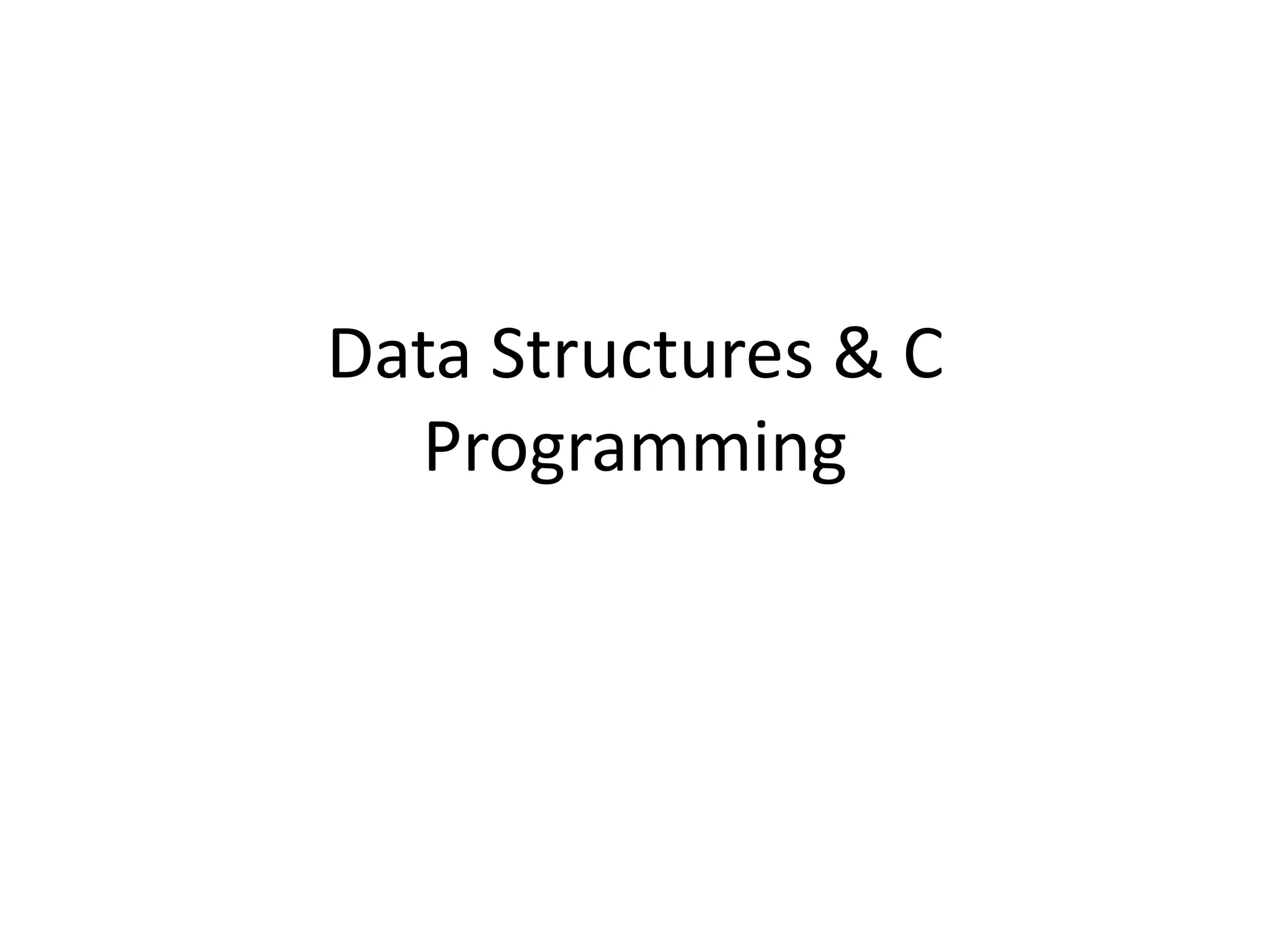
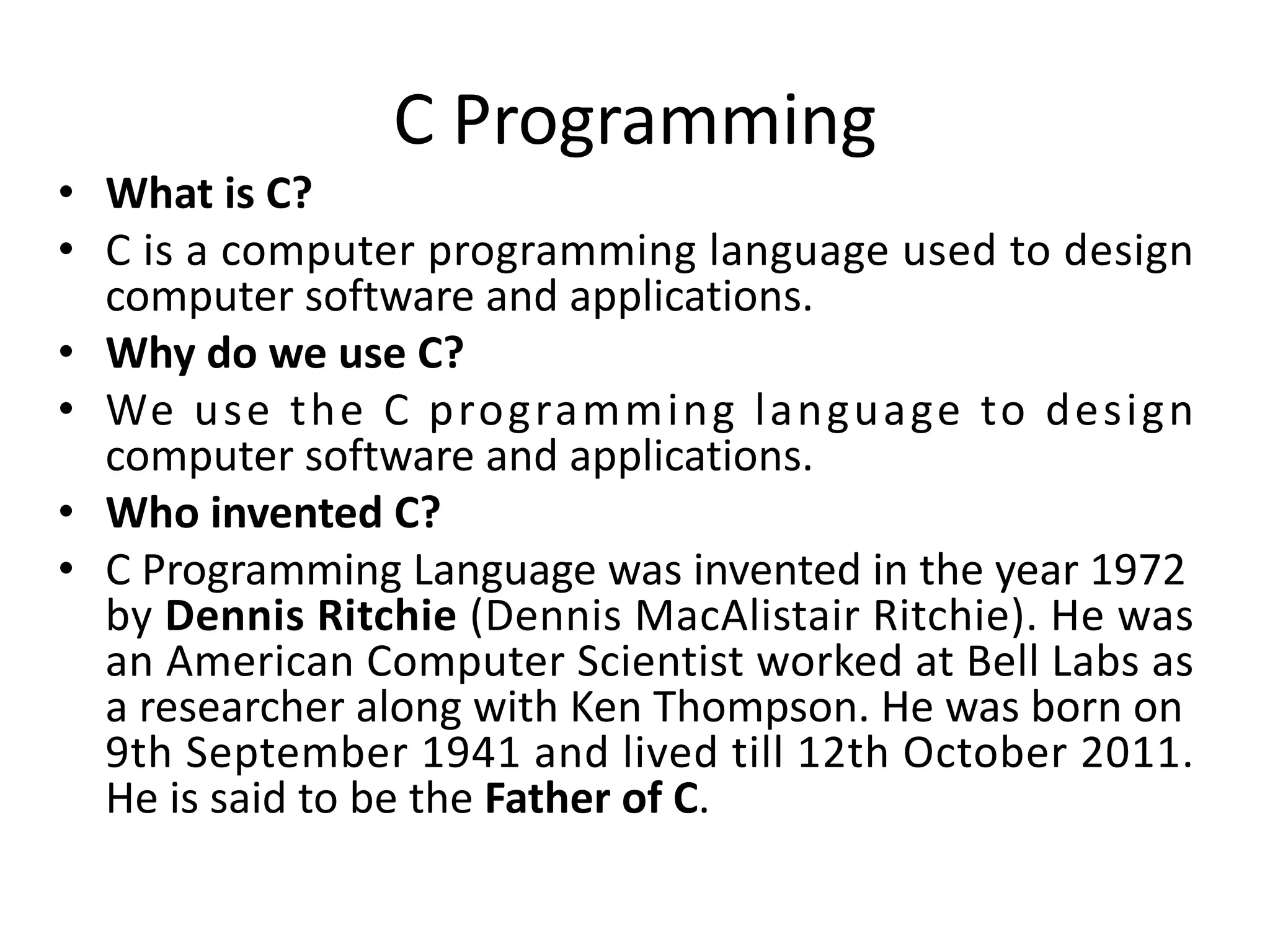
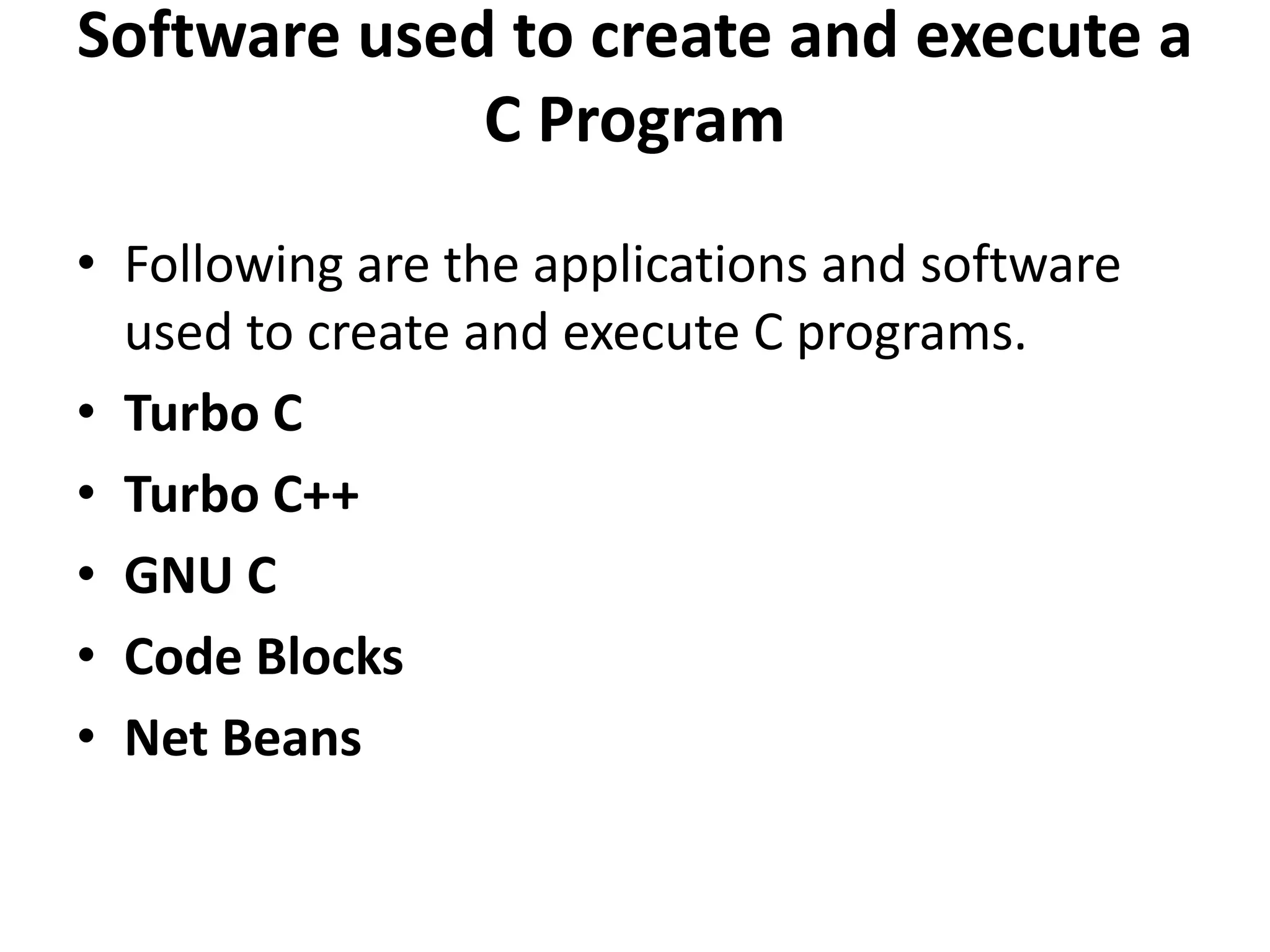
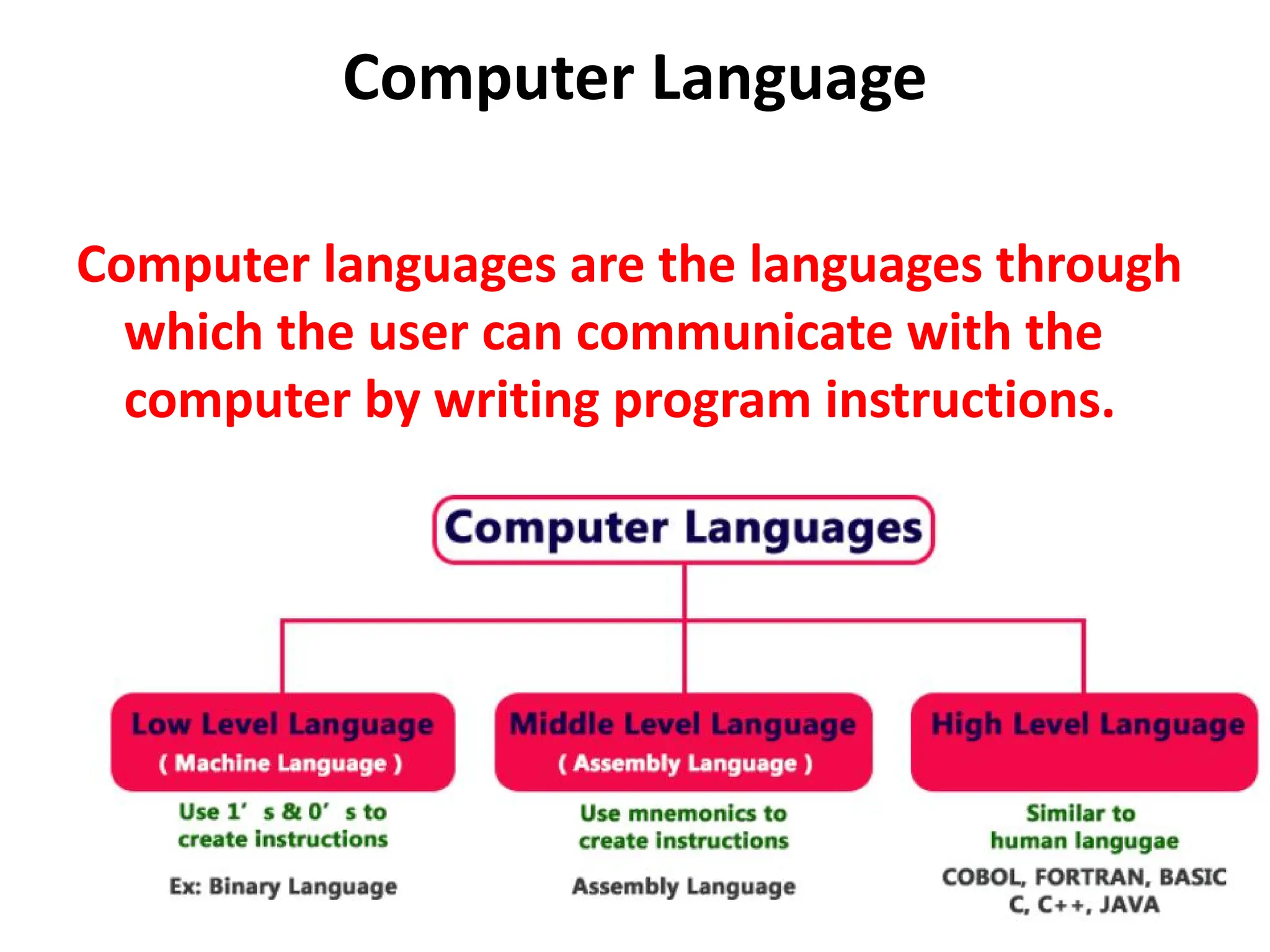
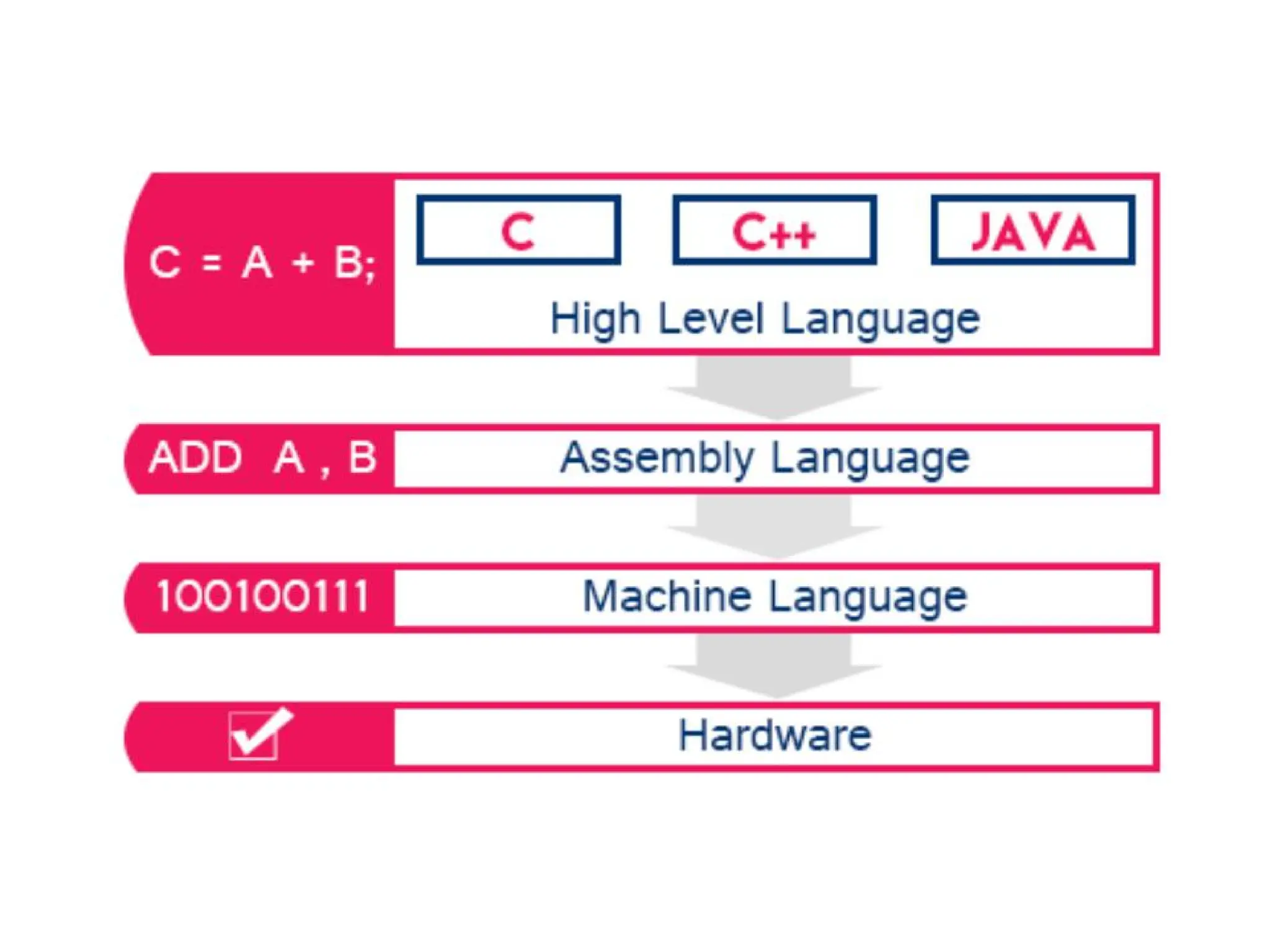
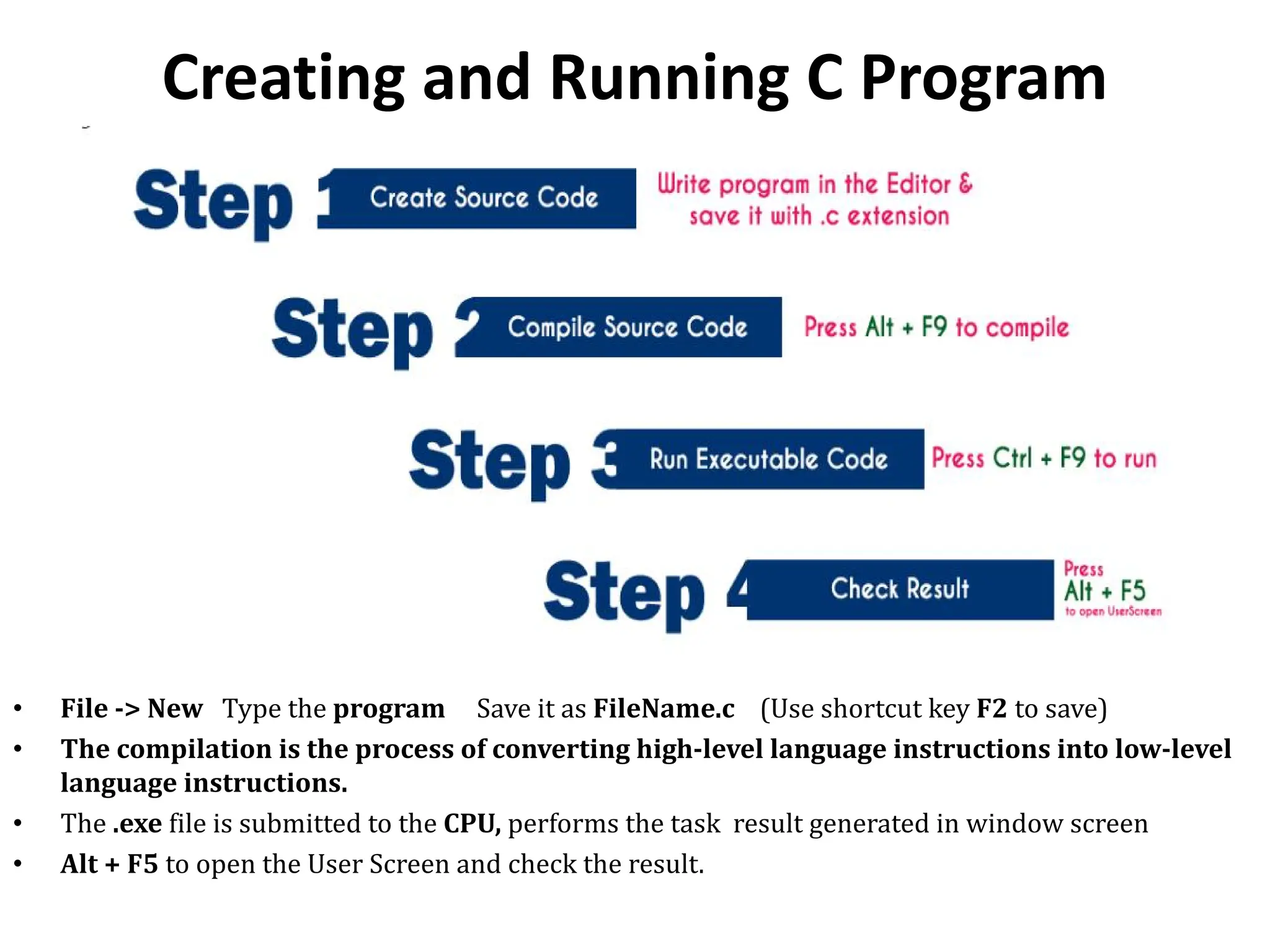
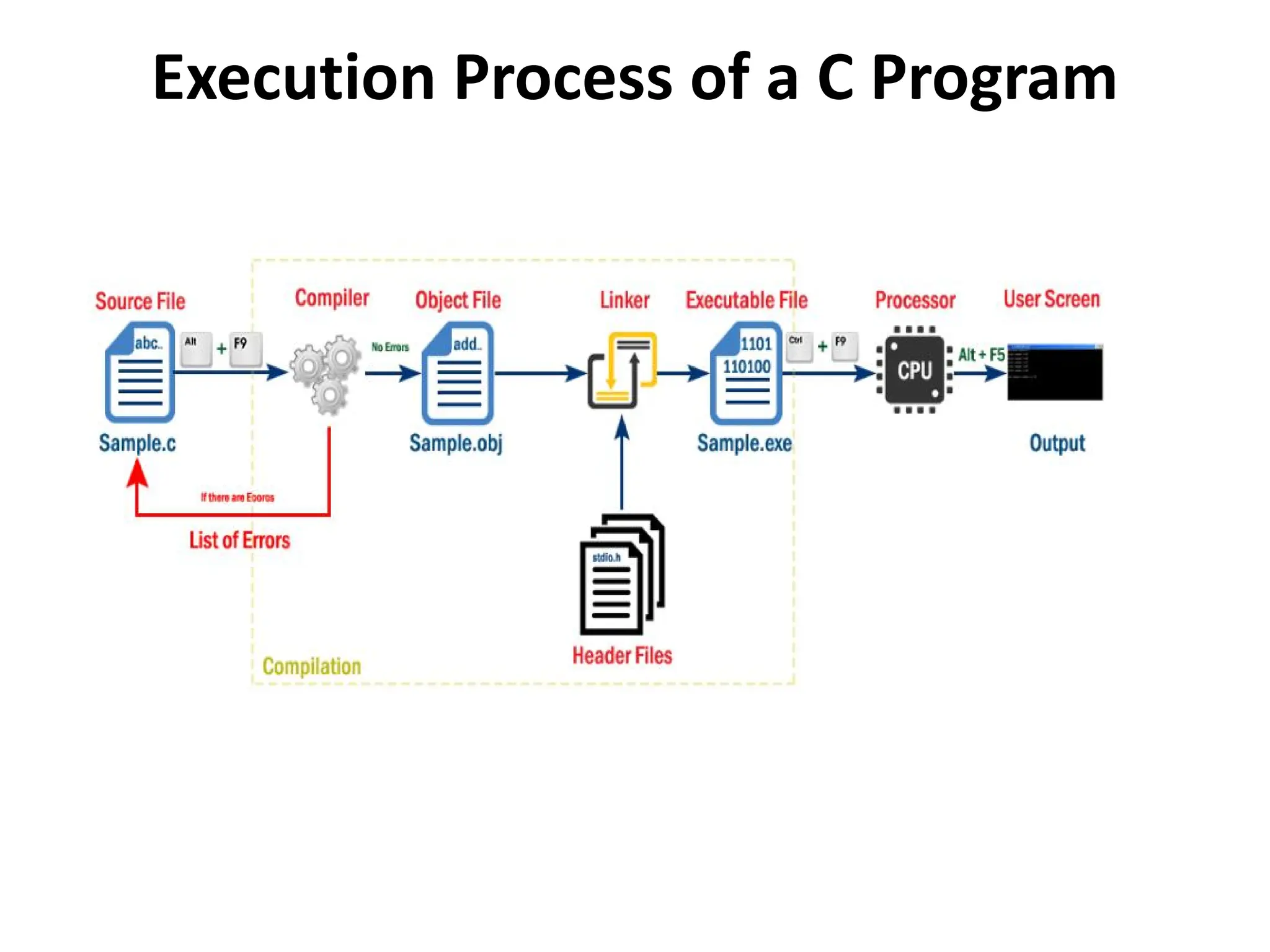
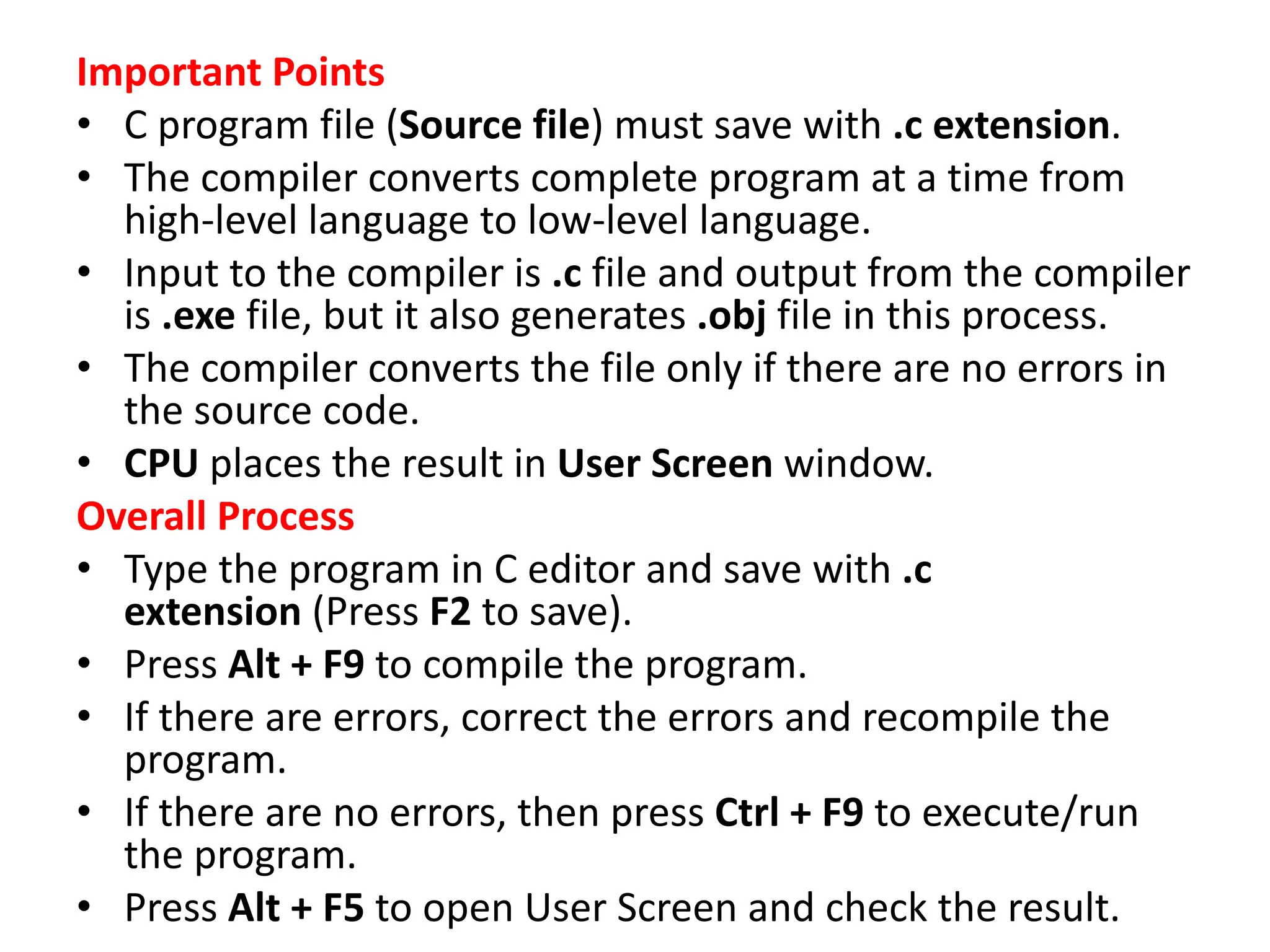
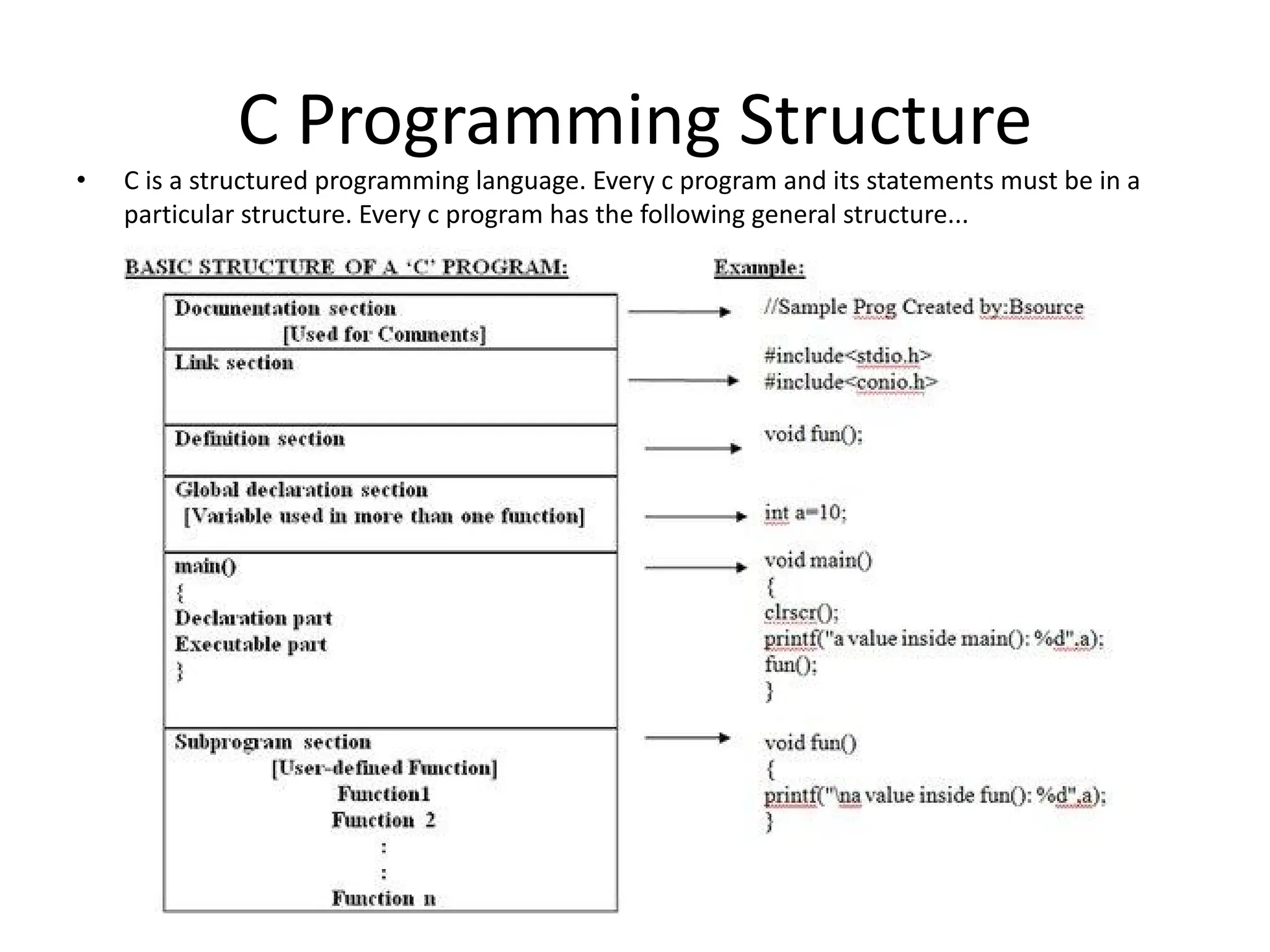
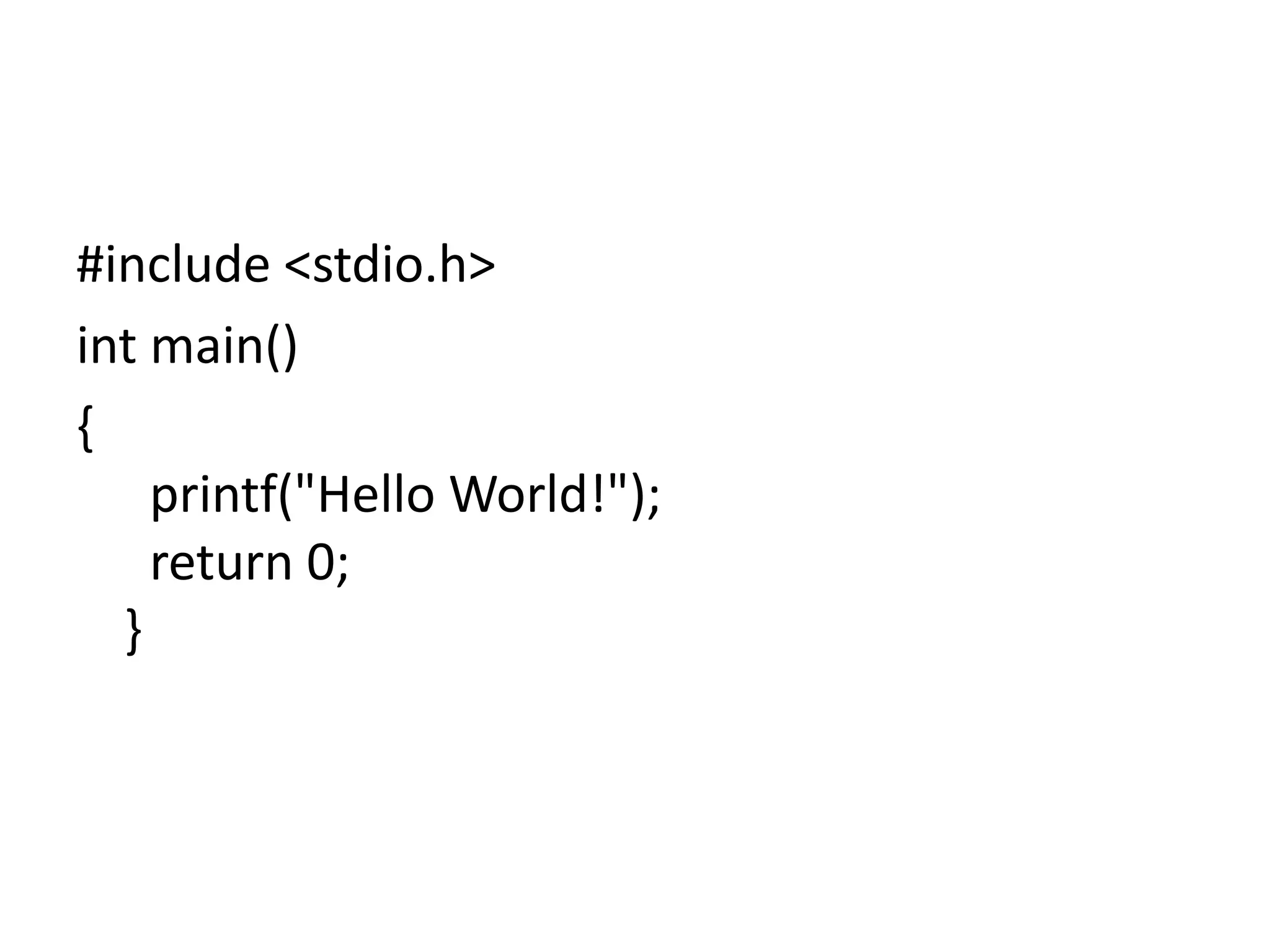
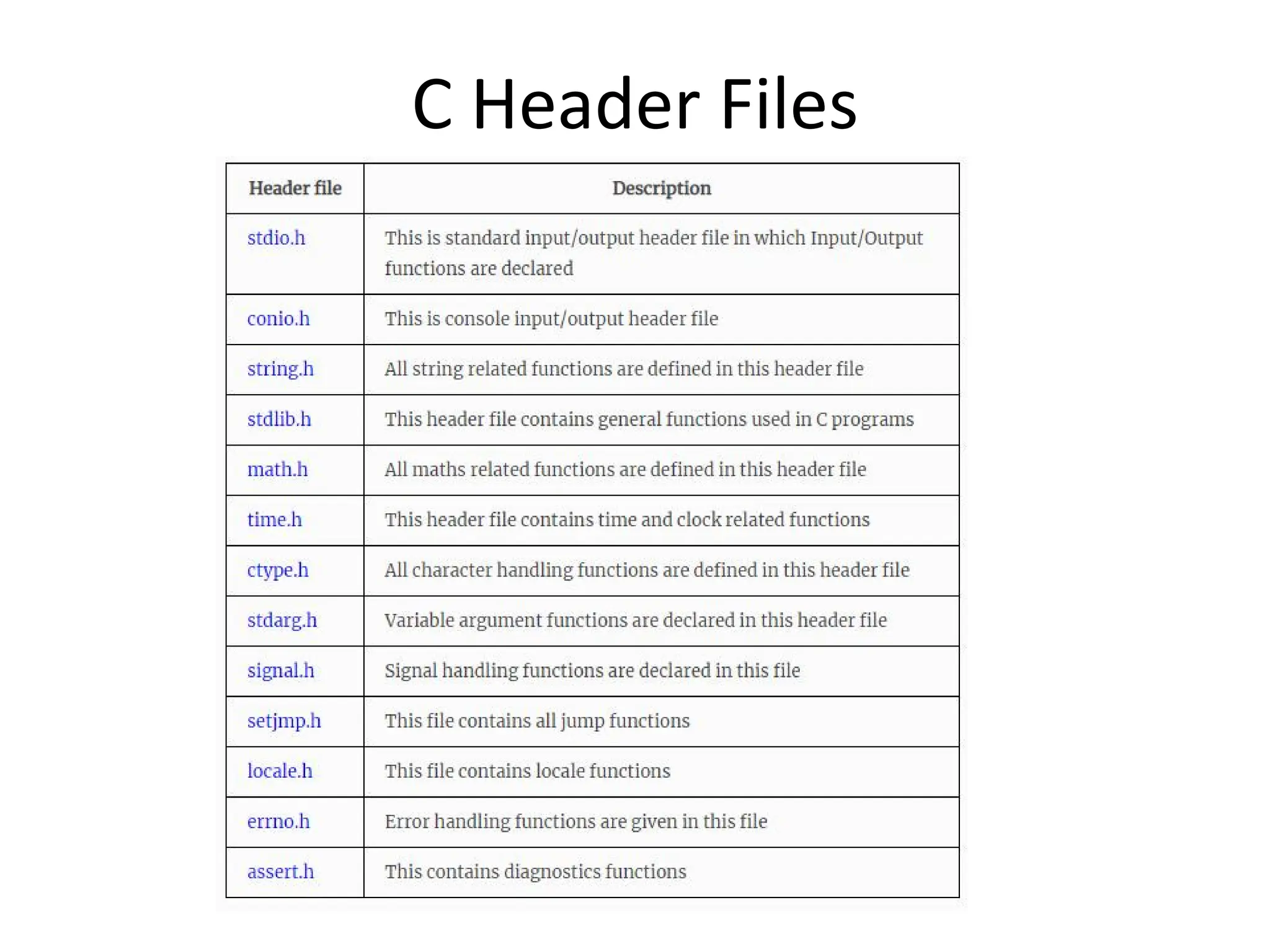
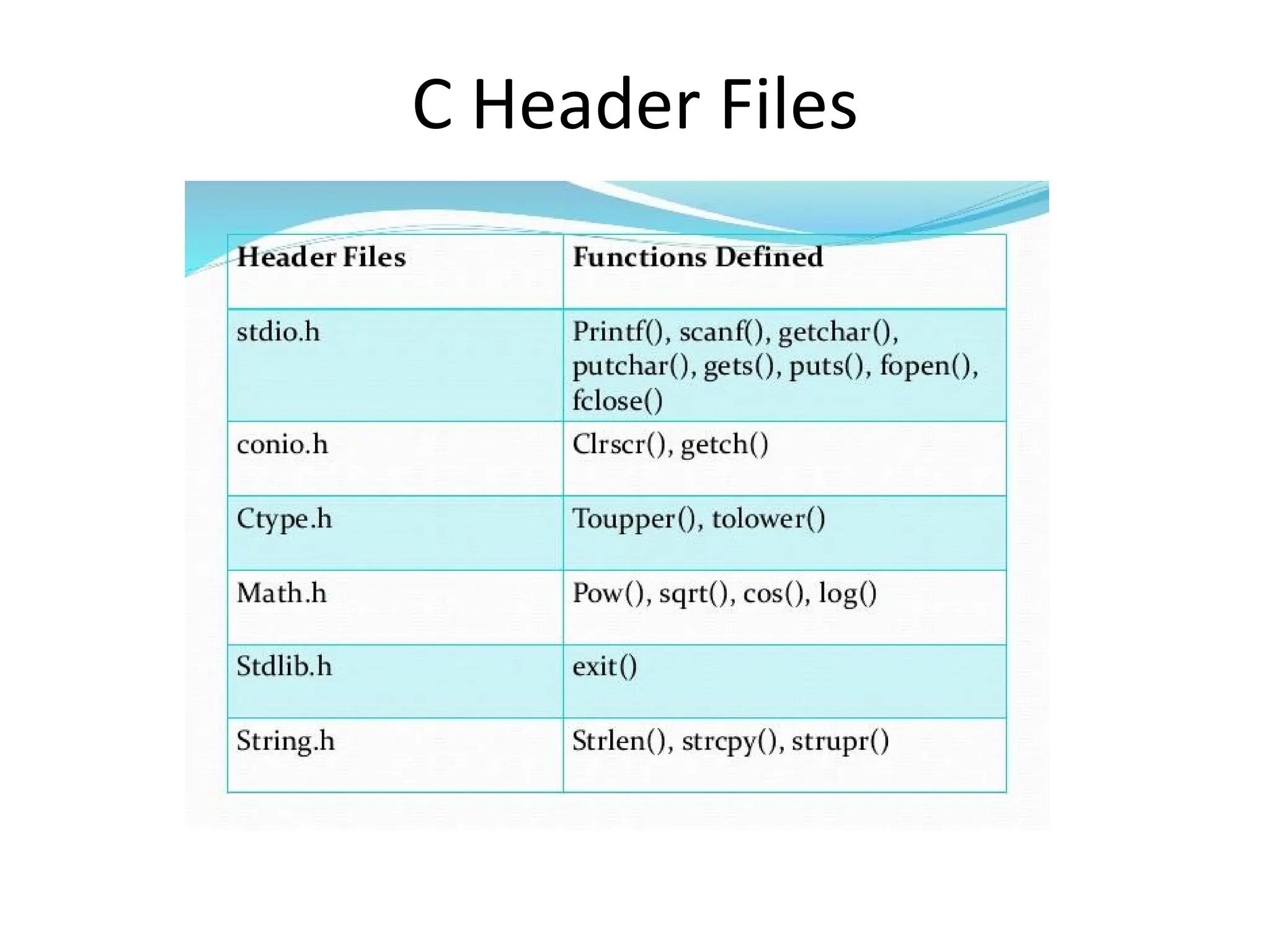
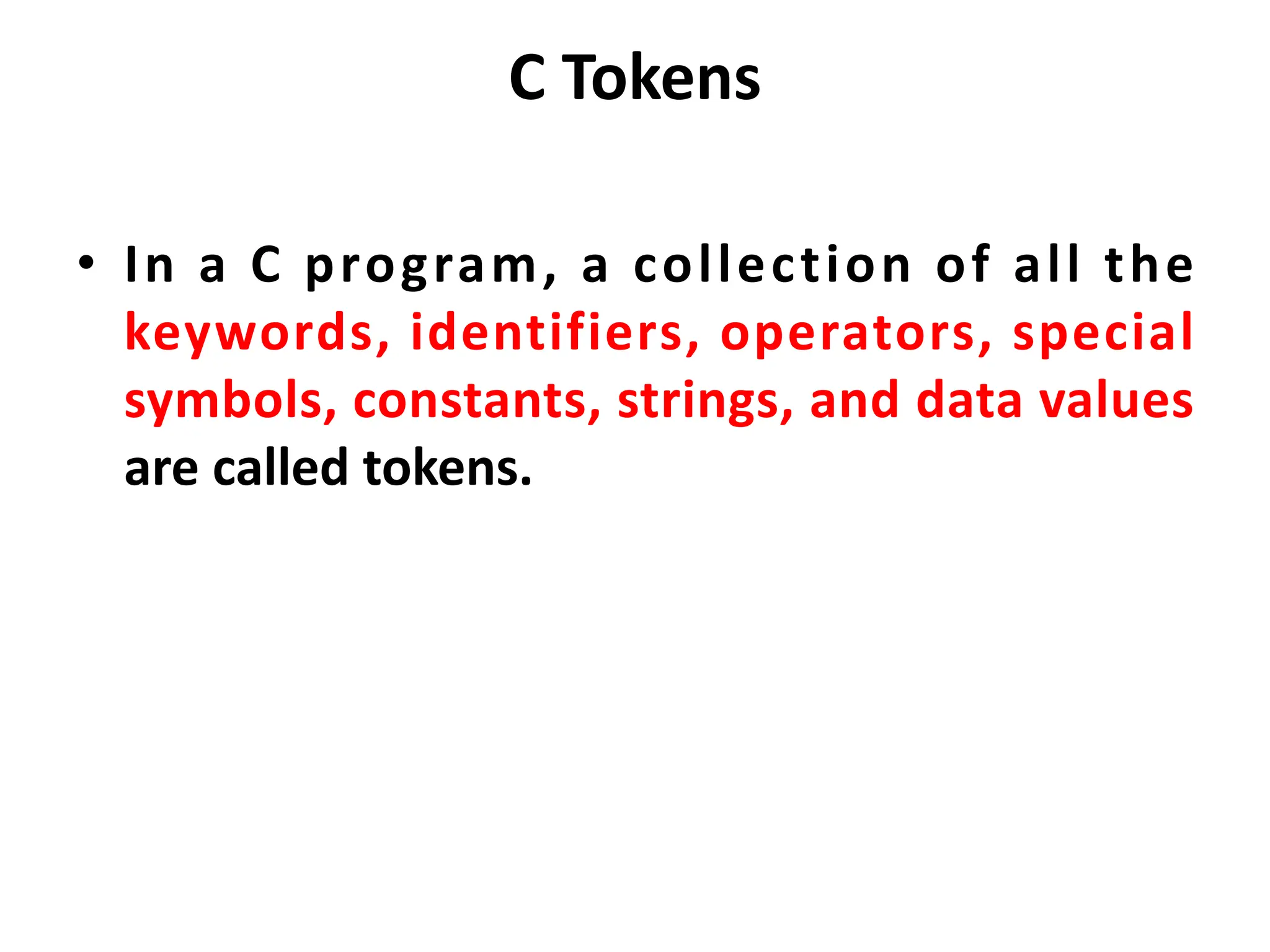
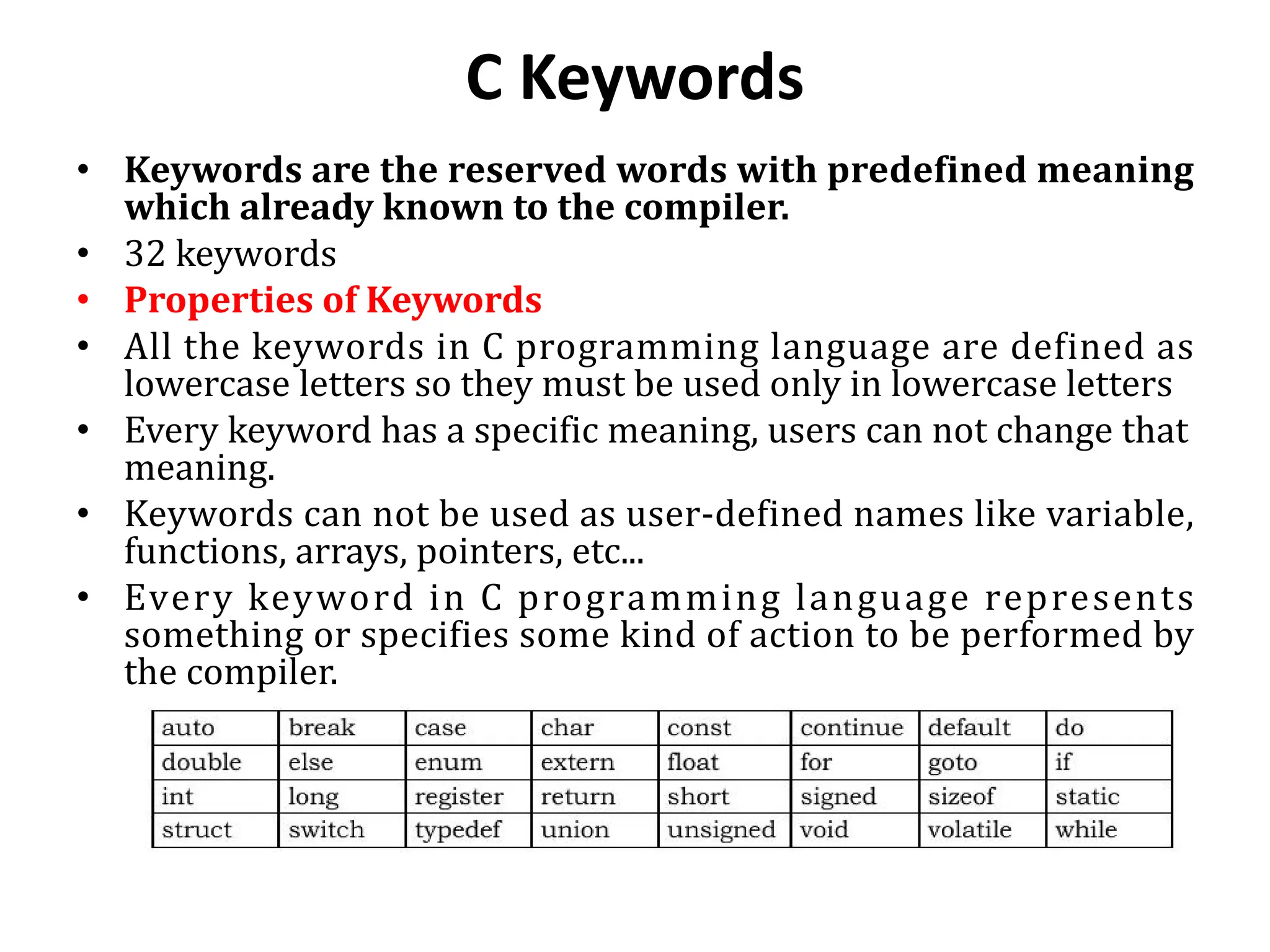
![C Identifiers The identifier is a user-defined name of an entity to identify it uniquely during the program execution Example int marks; char studentName[30]; Here, marks and studentName are identifiers. • Rules for Creating Identifiers • A n i d e n t i f i e r c a n c o n t a i n l e t t e r s ( U P P E R C A S E a n d lowercase), numerics & underscore symbol only. • An identifier should not start with a numerical value. It can start with a letter or an underscore. • We should not use any special symbols in between the identifier even whitespace. However, the only underscore symbol is allowed. • Keywords should not be used as identifiers. • There is no limit for the length of an identifier. However, the compiler considers the first 31 characters only. • An identifier must be unique in its scope.](https://image.slidesharecdn.com/unit-1ppt-240920141620-6890aa2b/75/EC2311-Data-Structures-and-C-Programming-15-2048.jpg)
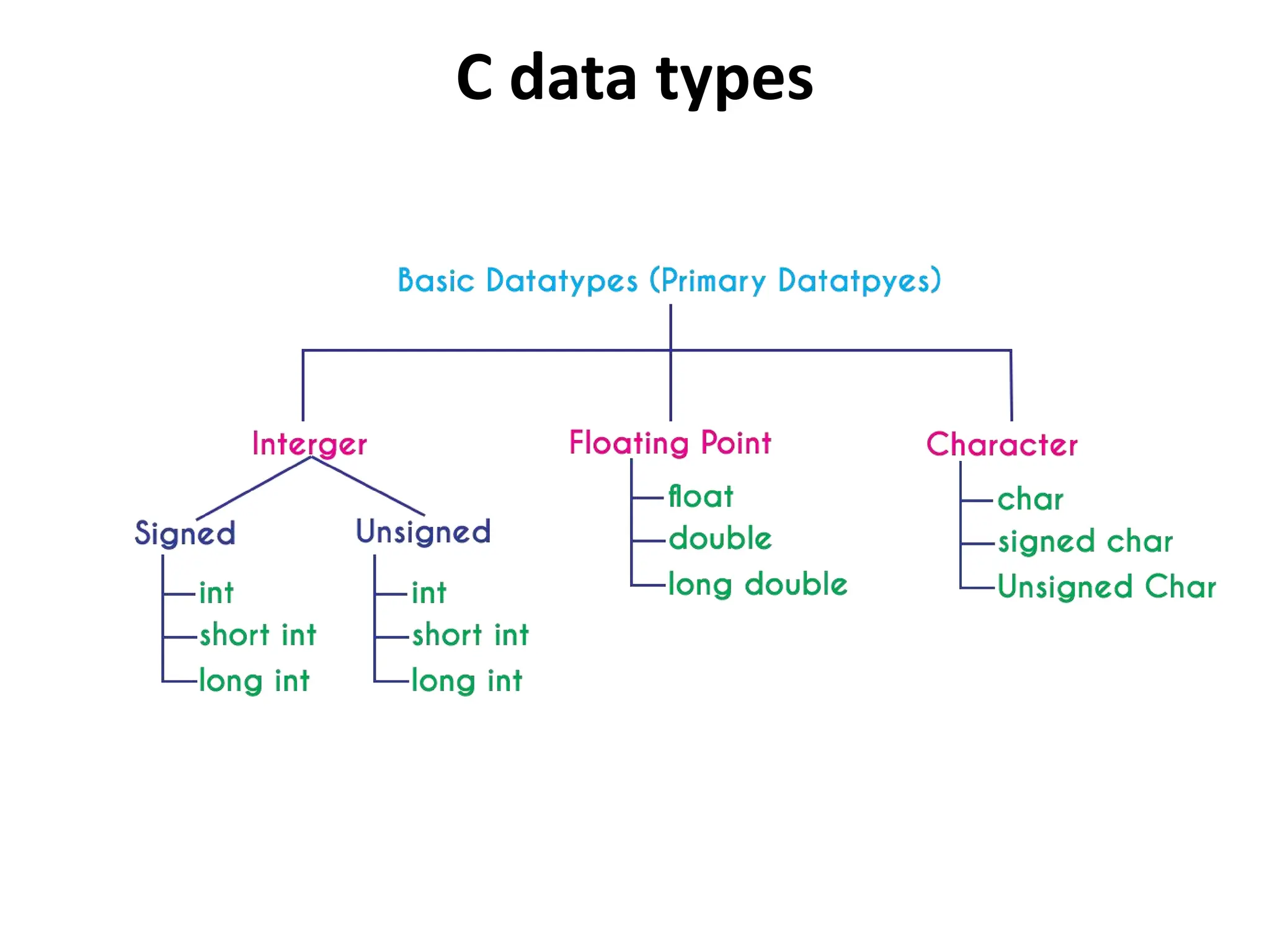
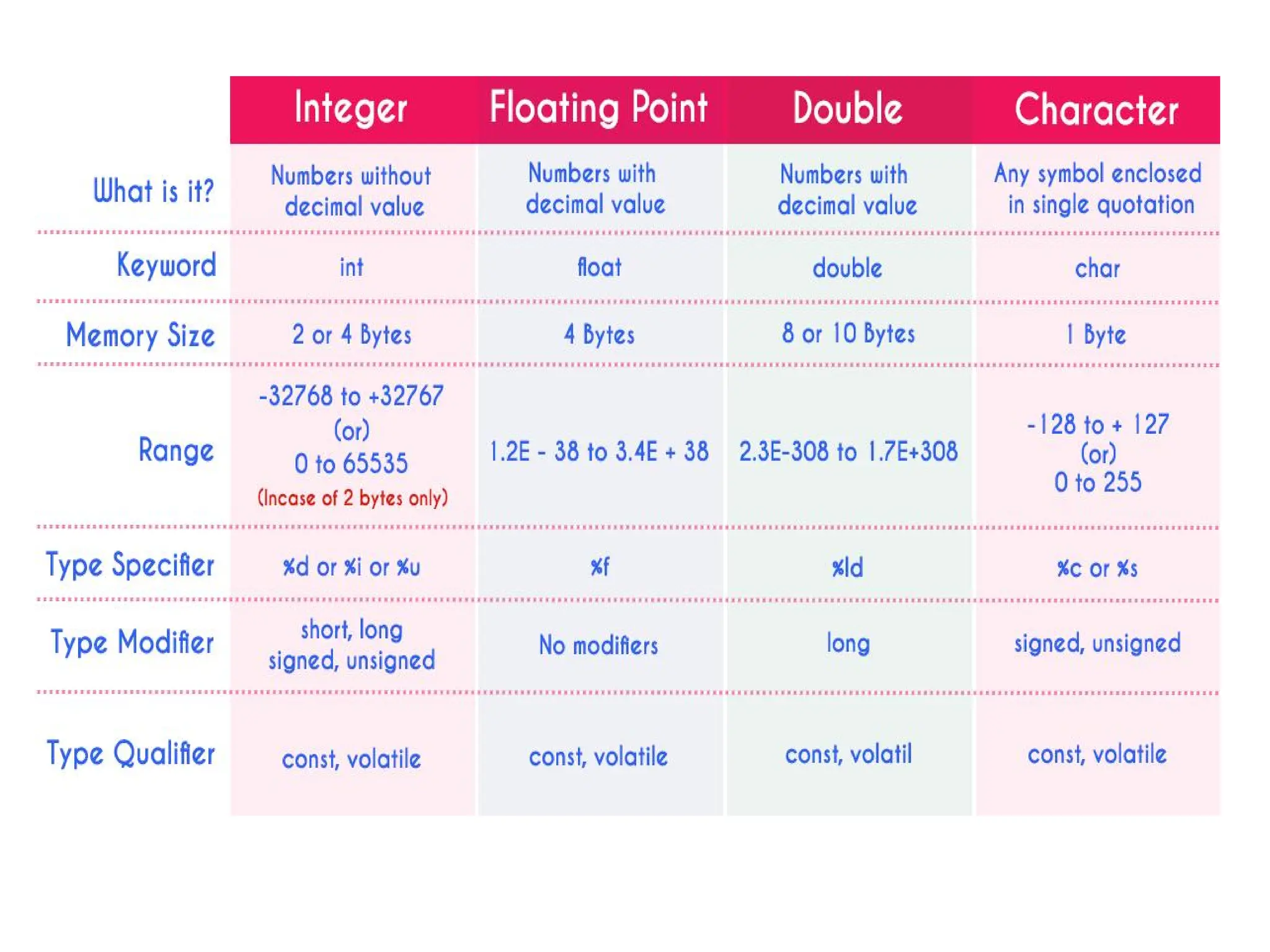
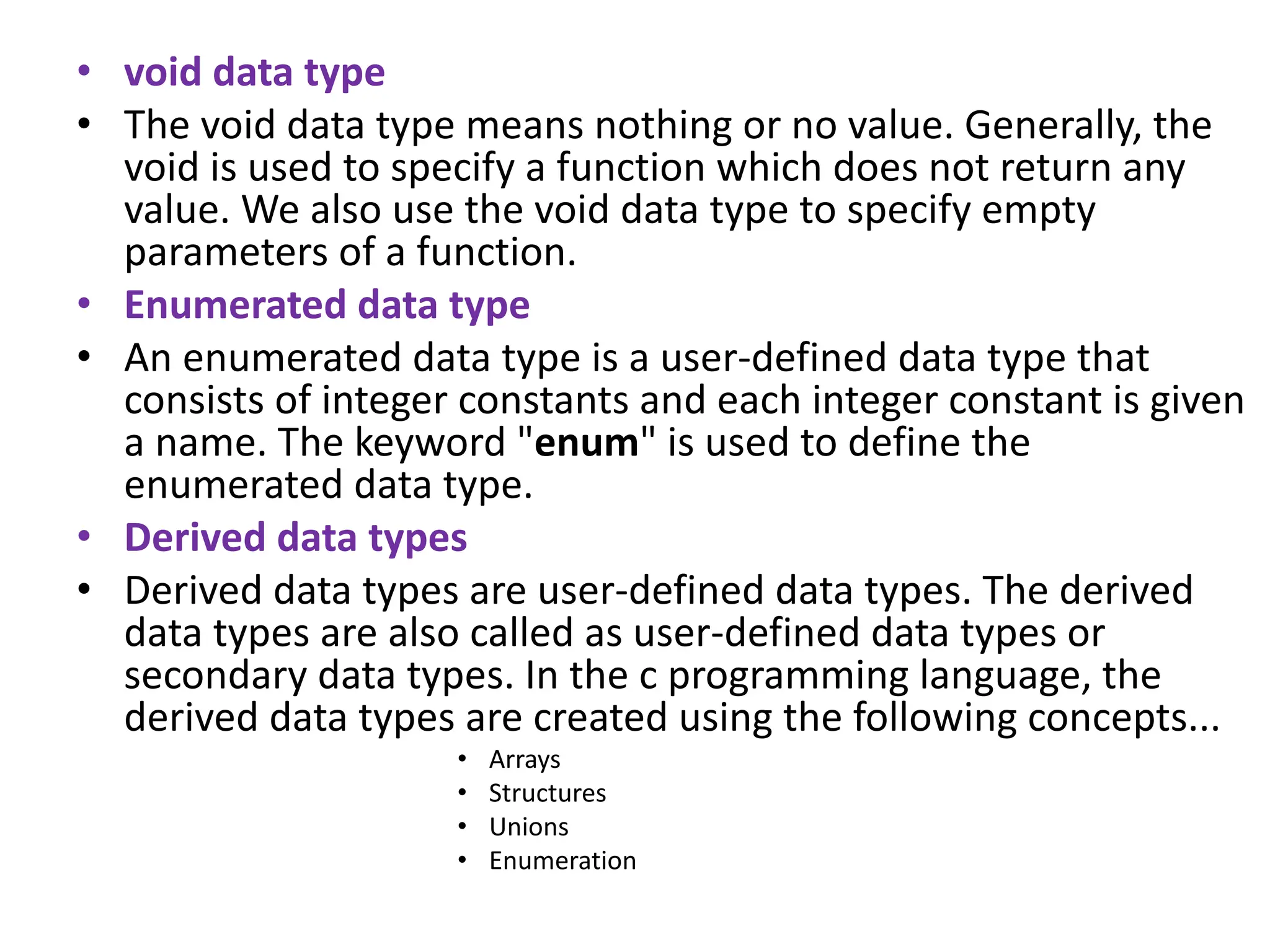
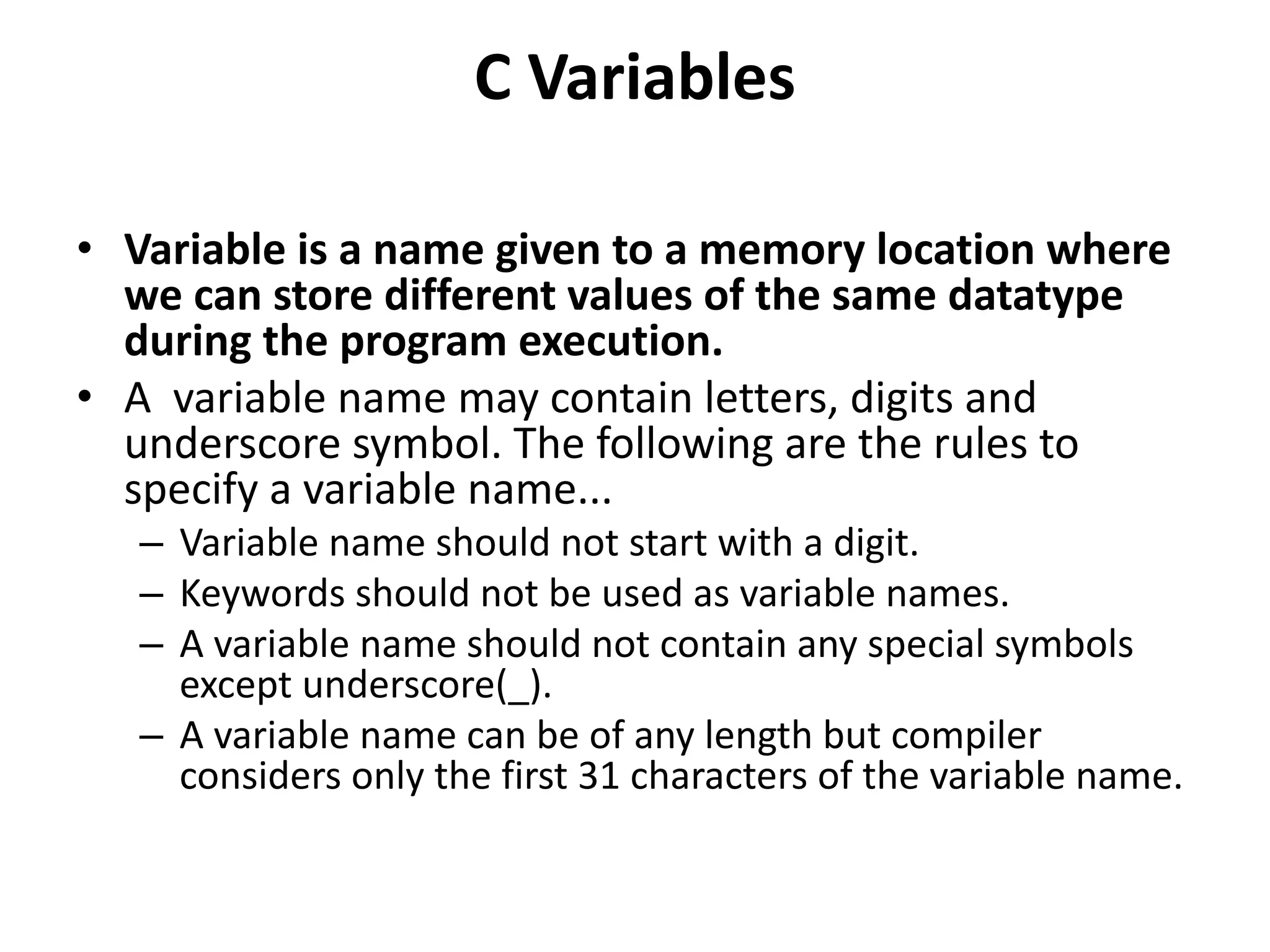
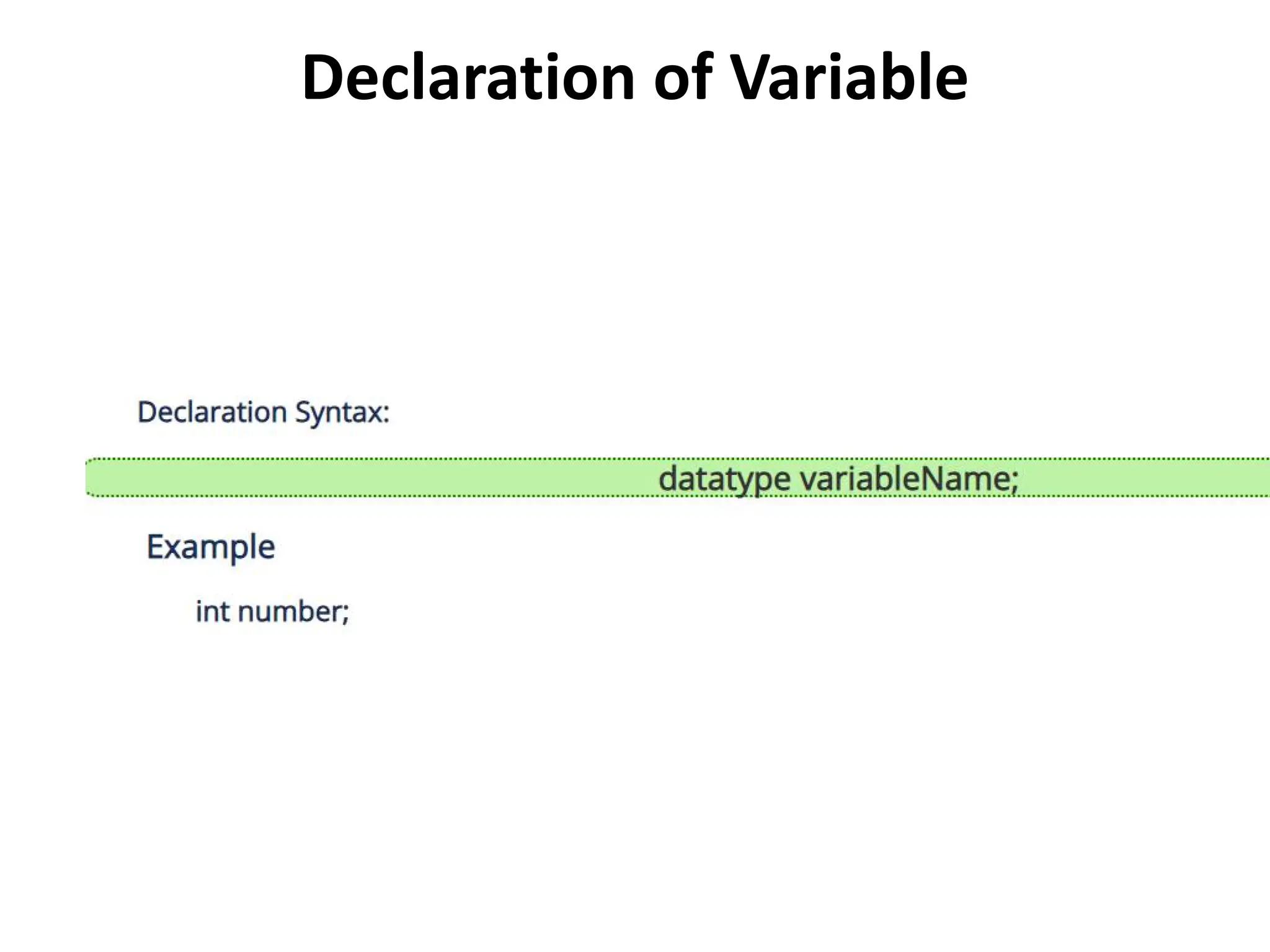
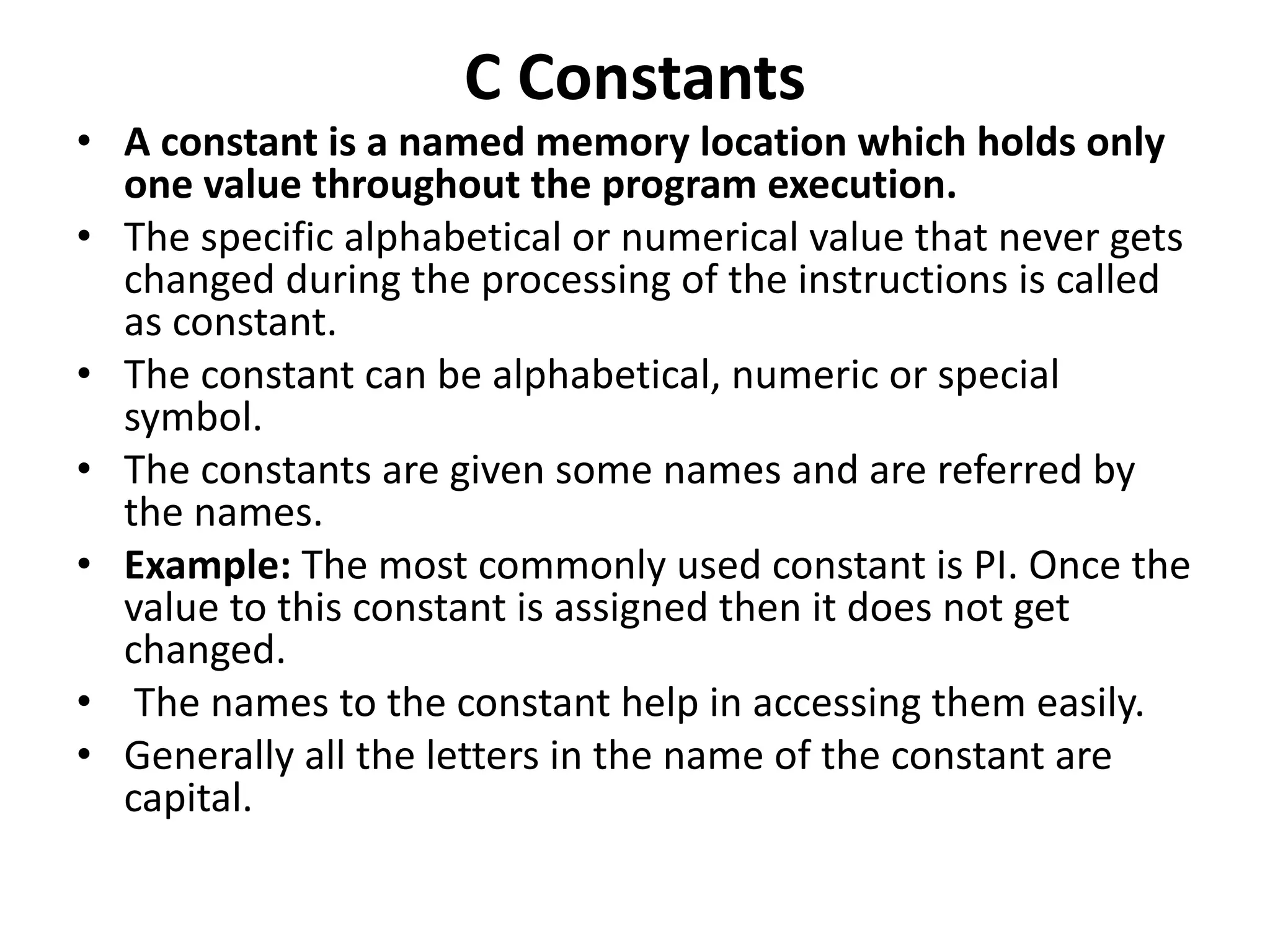
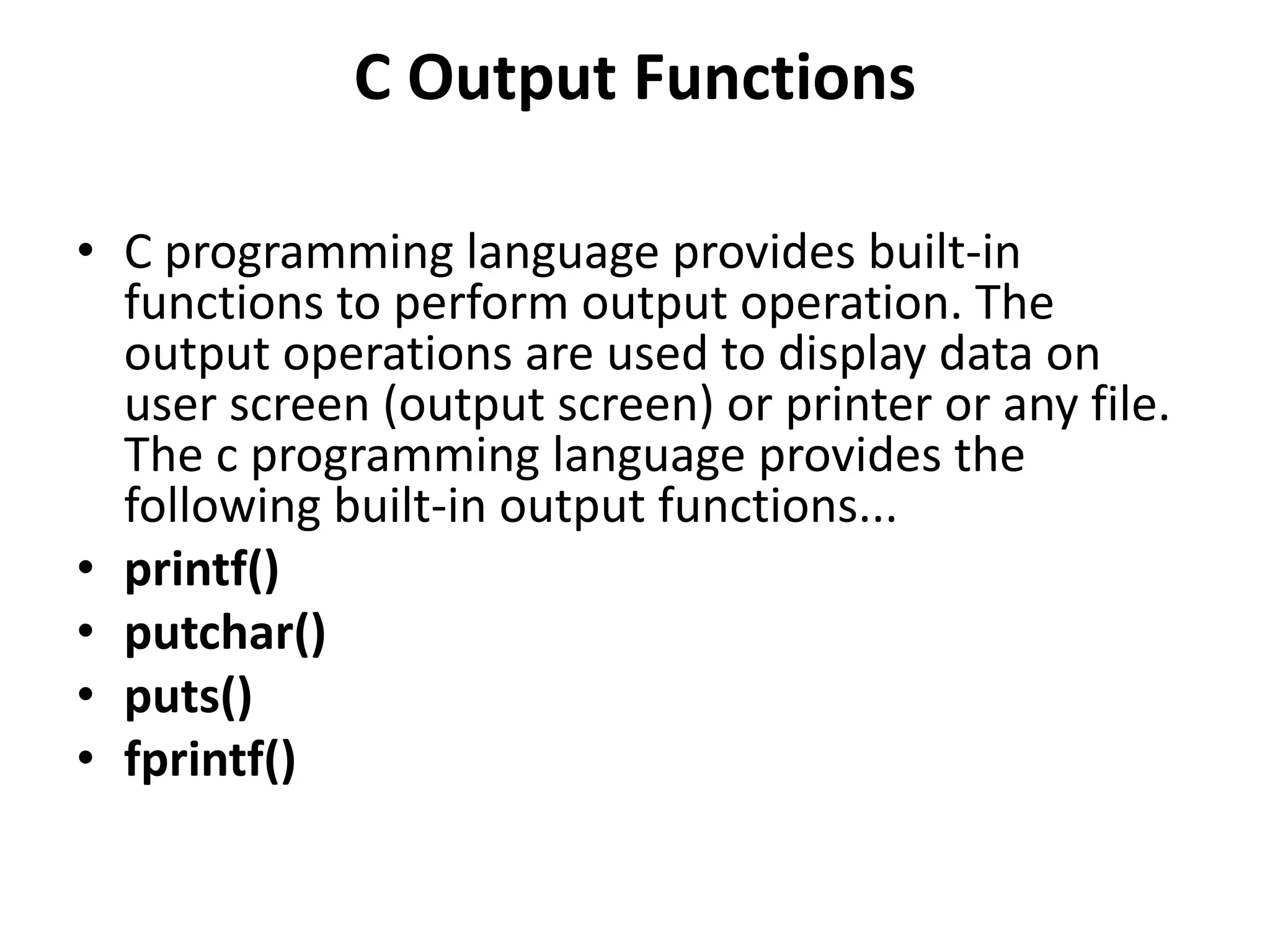
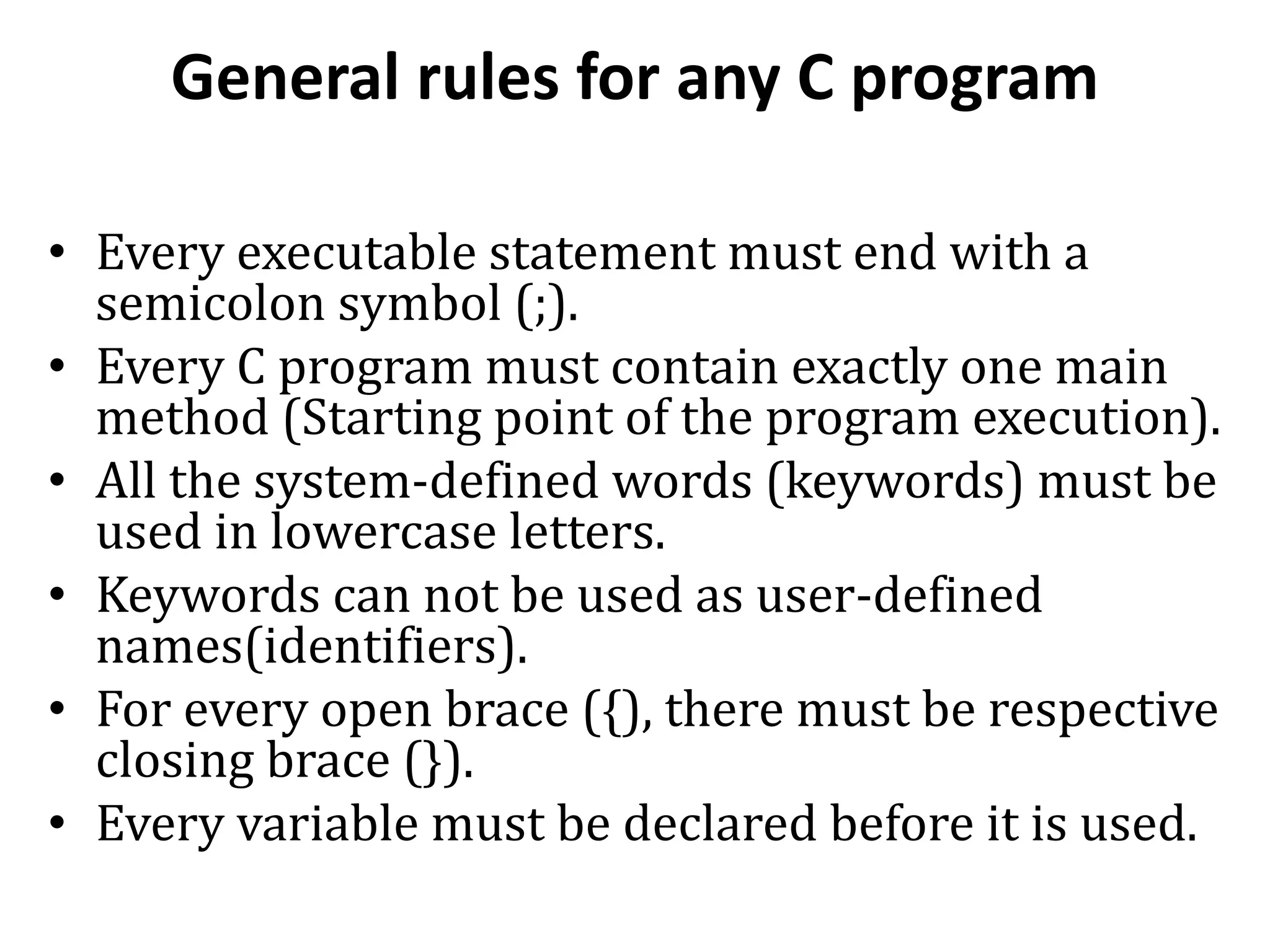
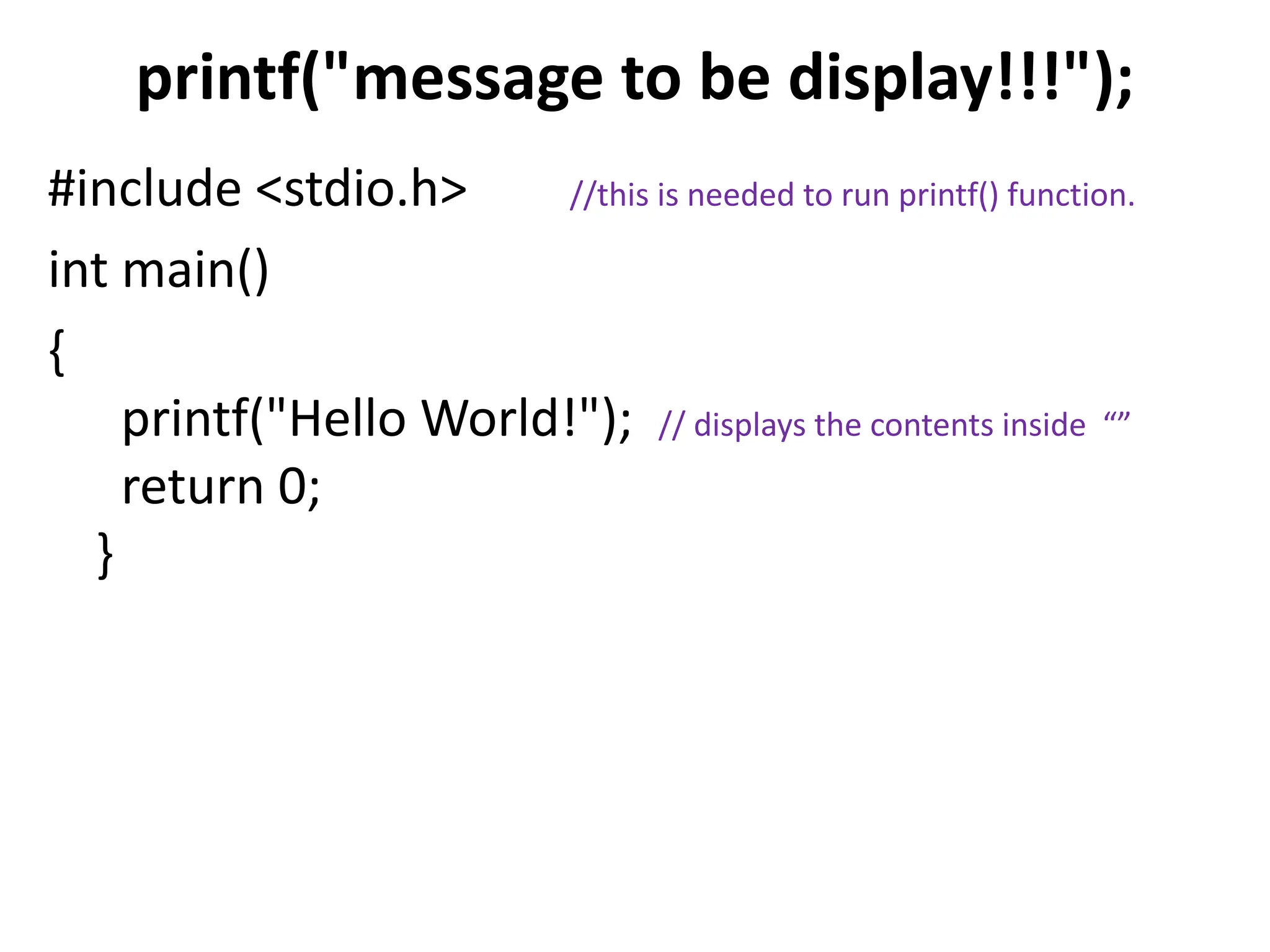
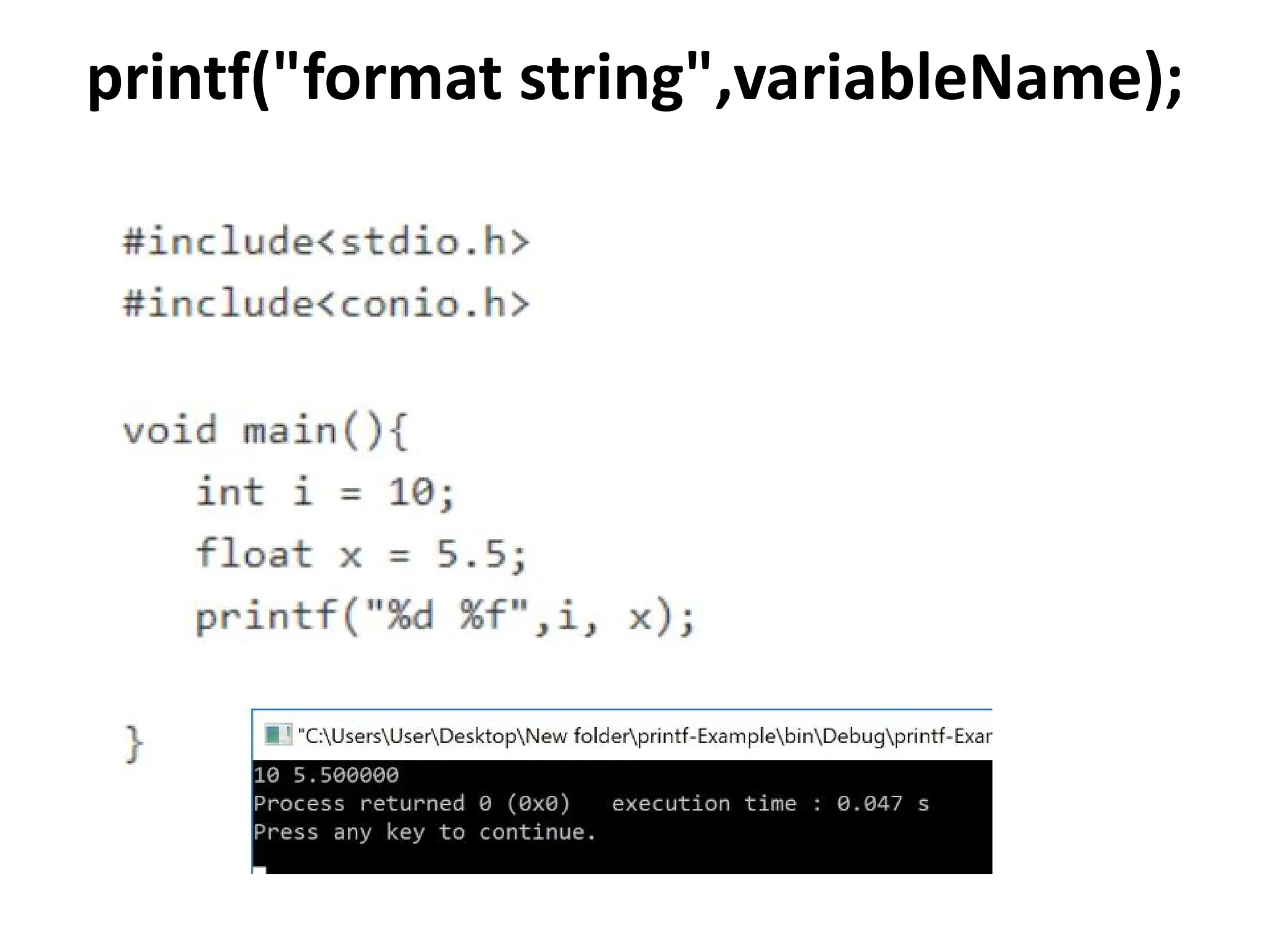
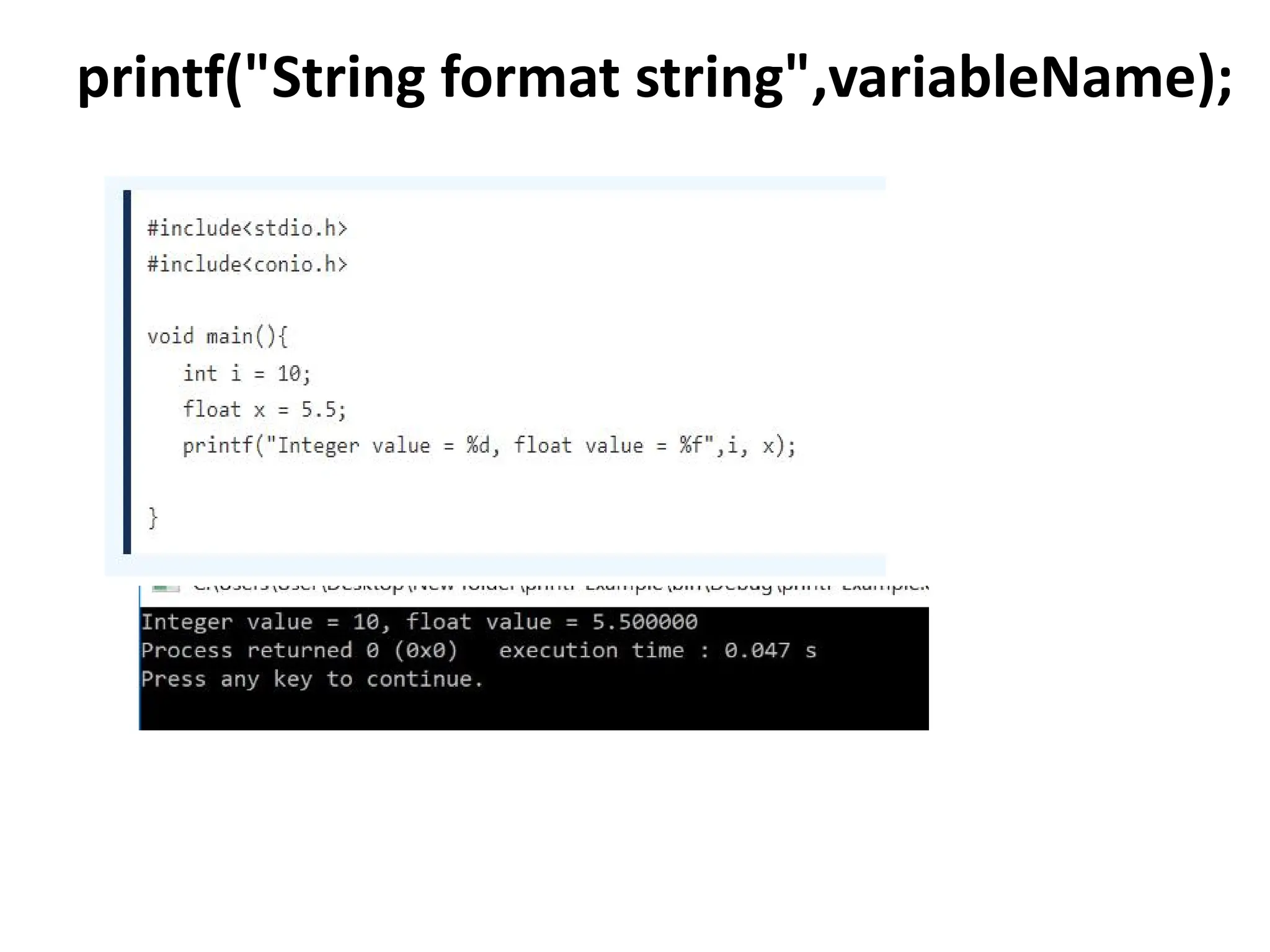
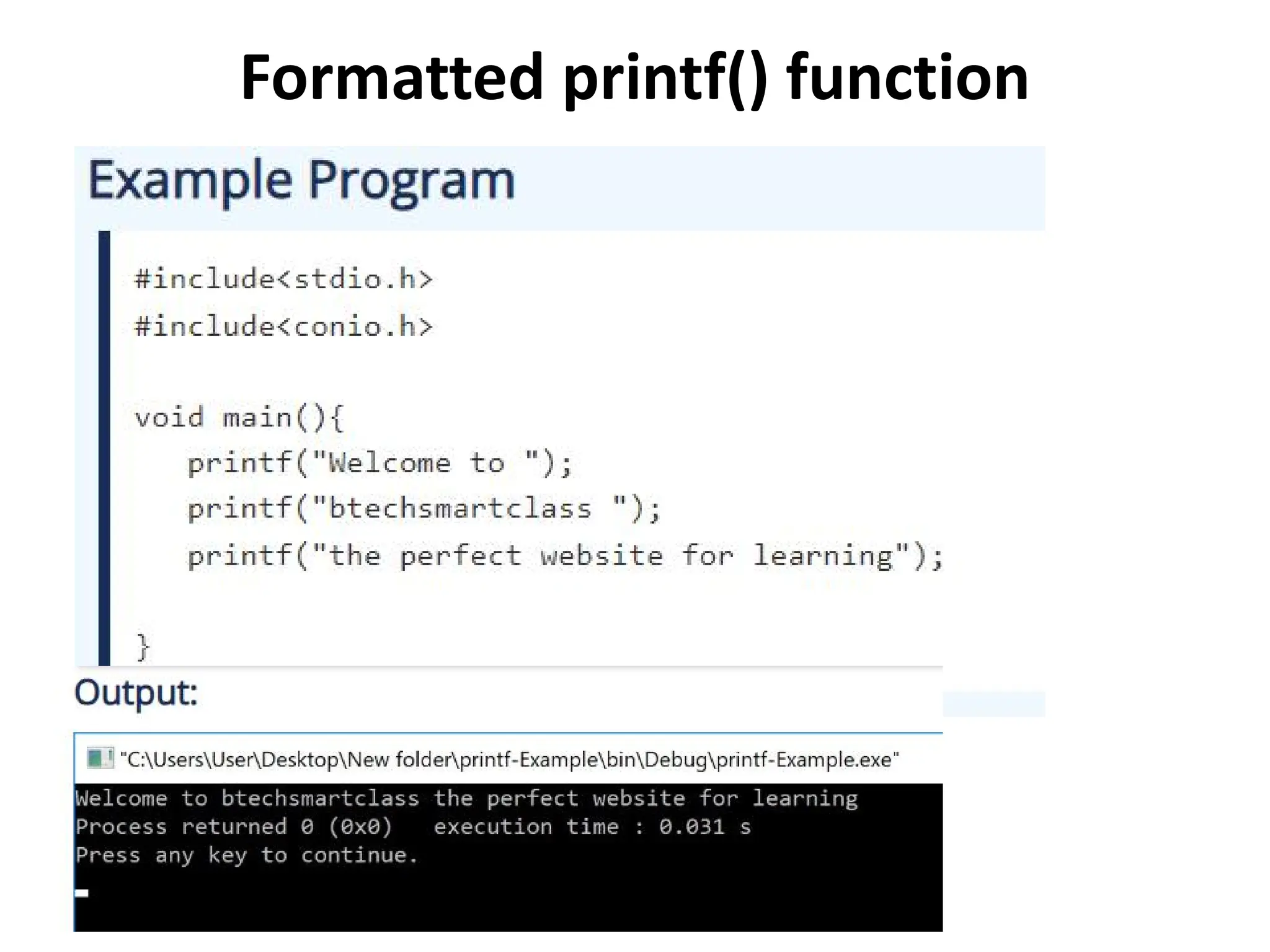
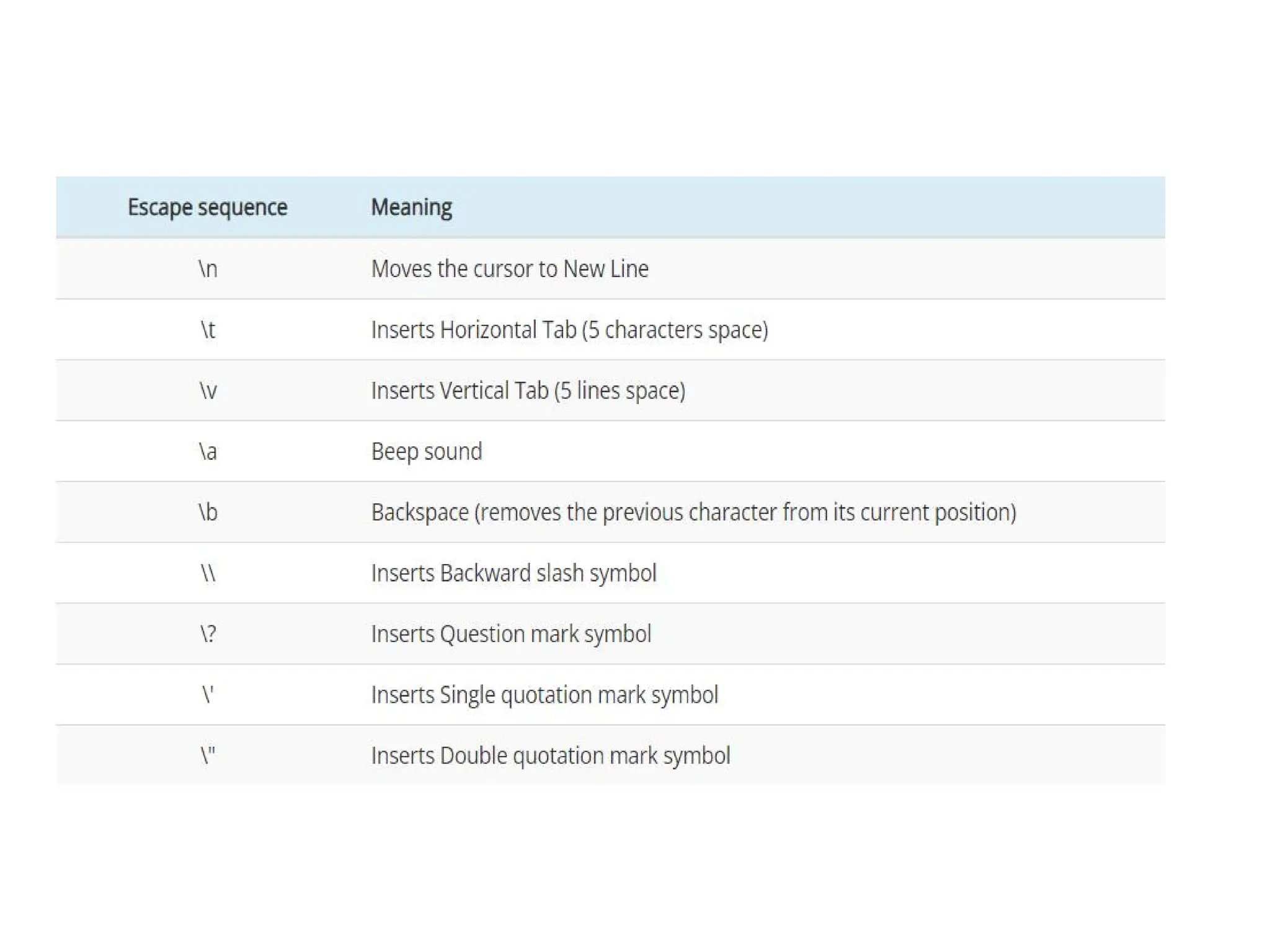
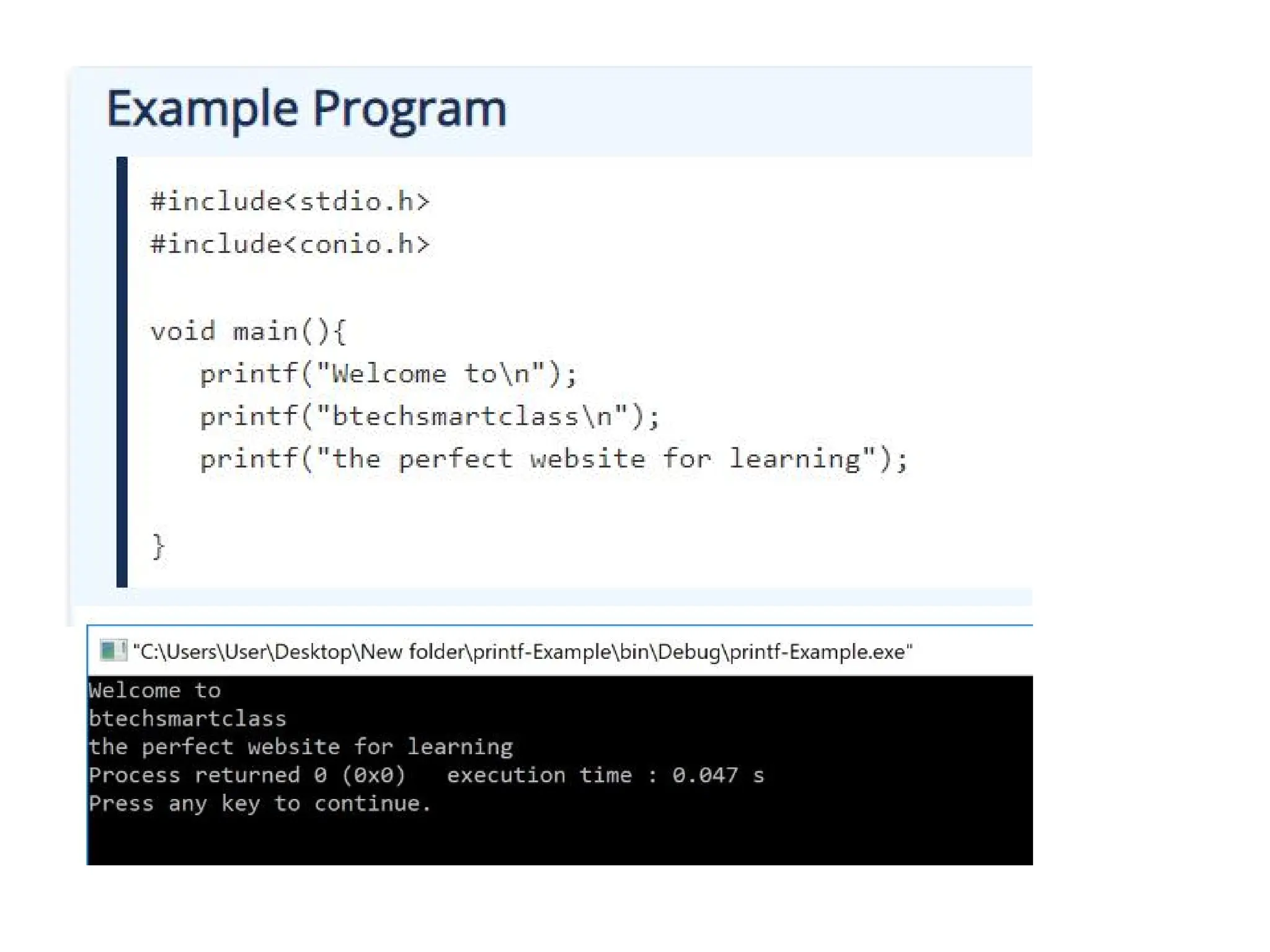
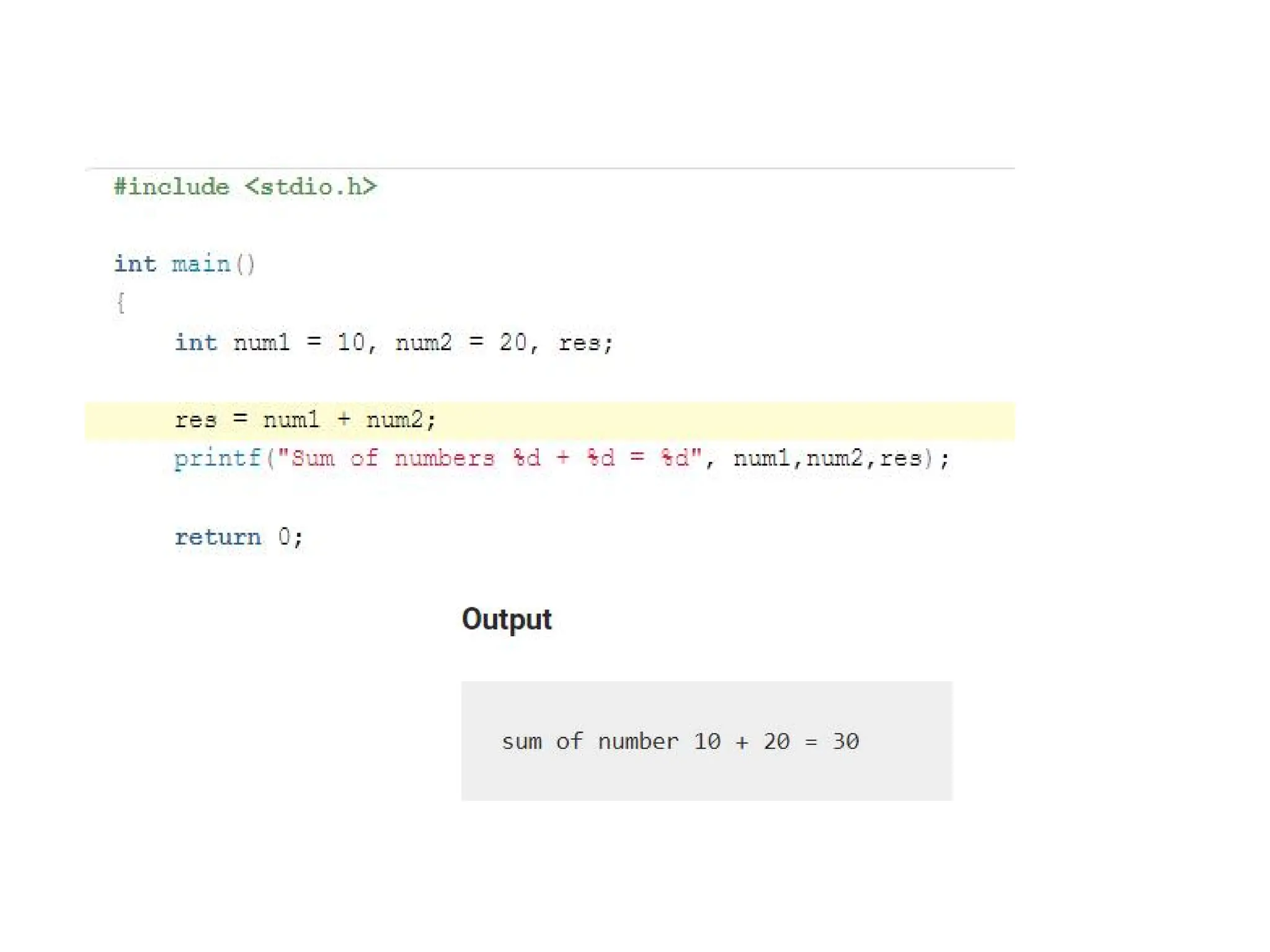
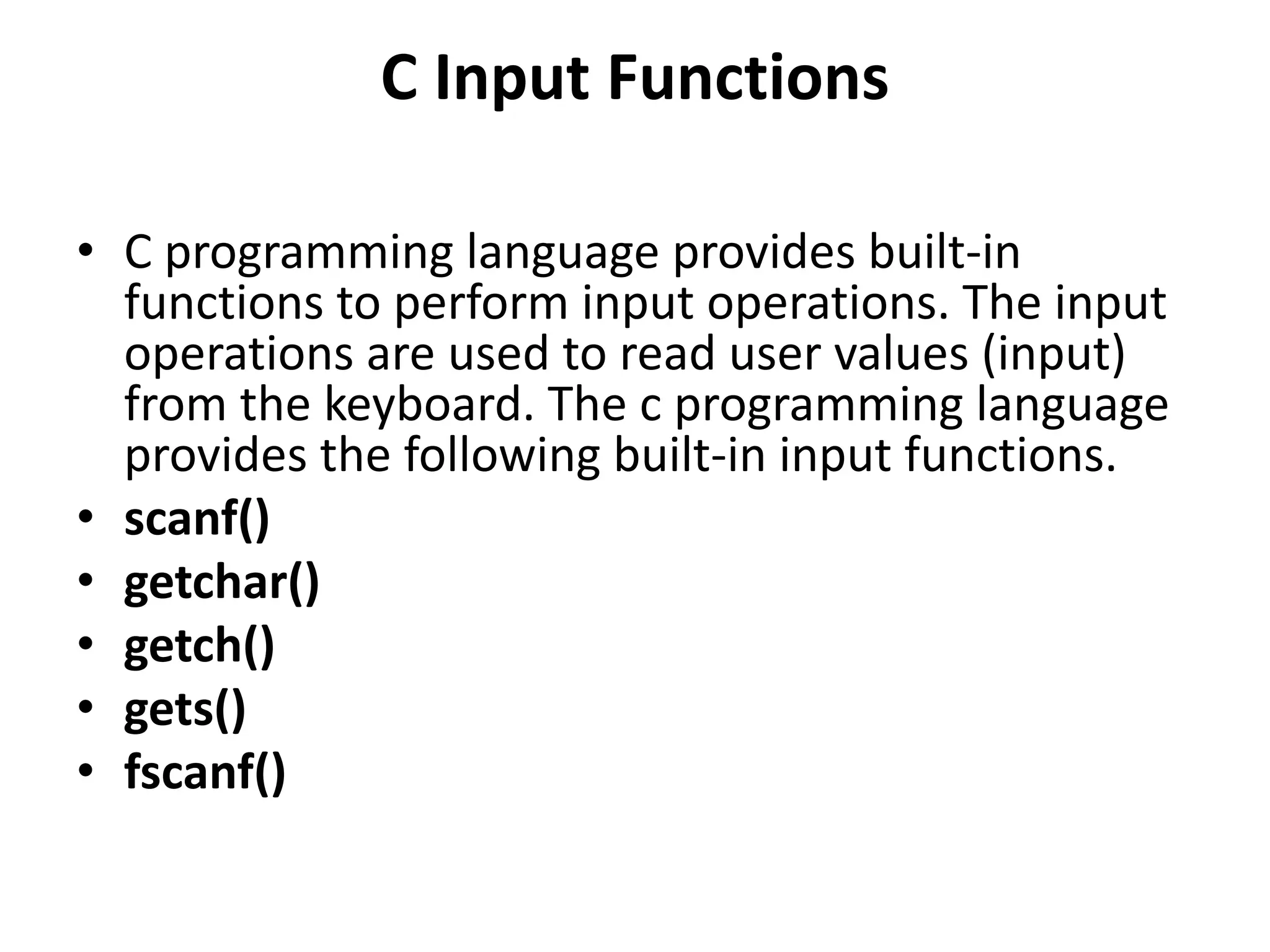
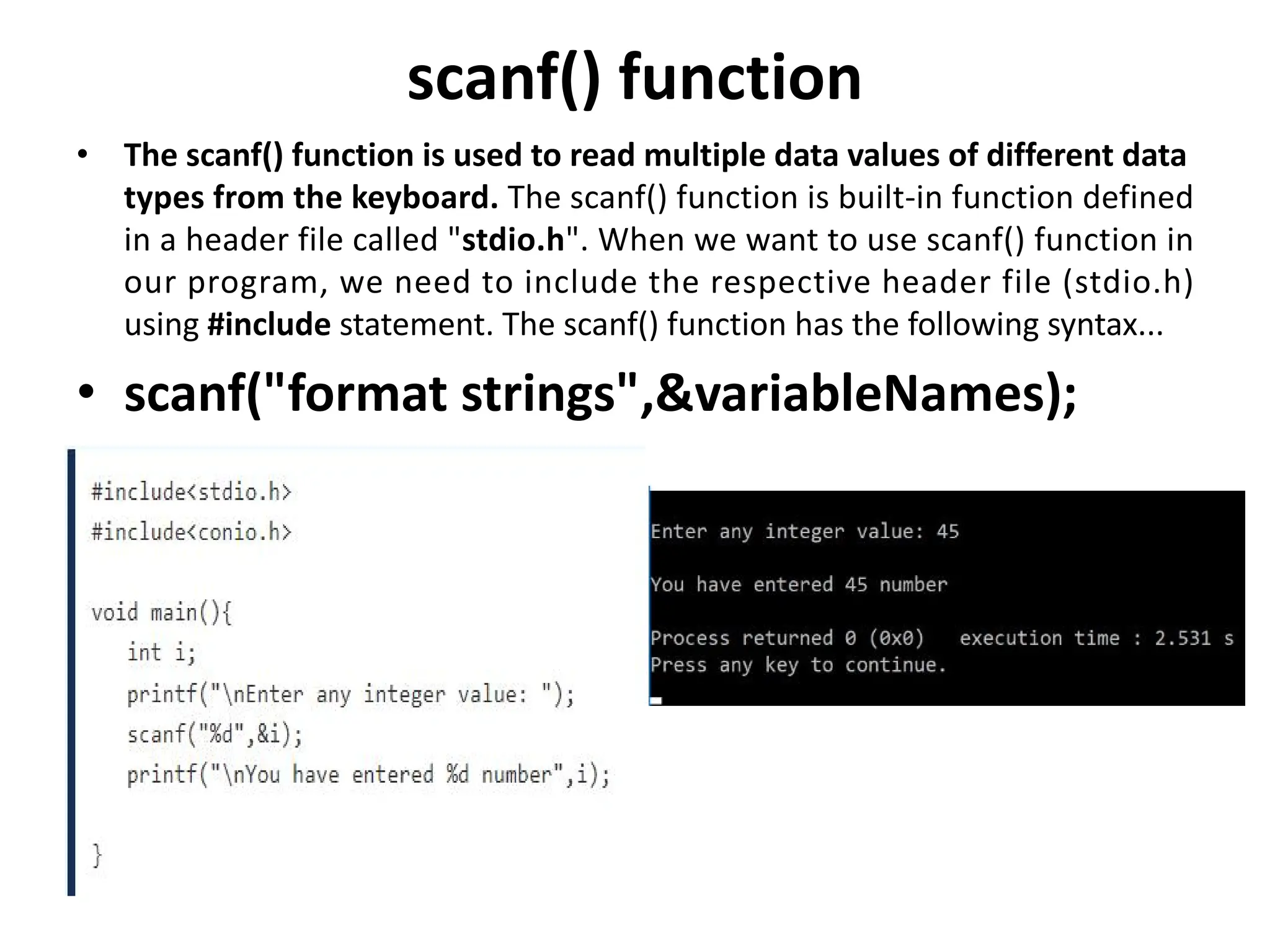
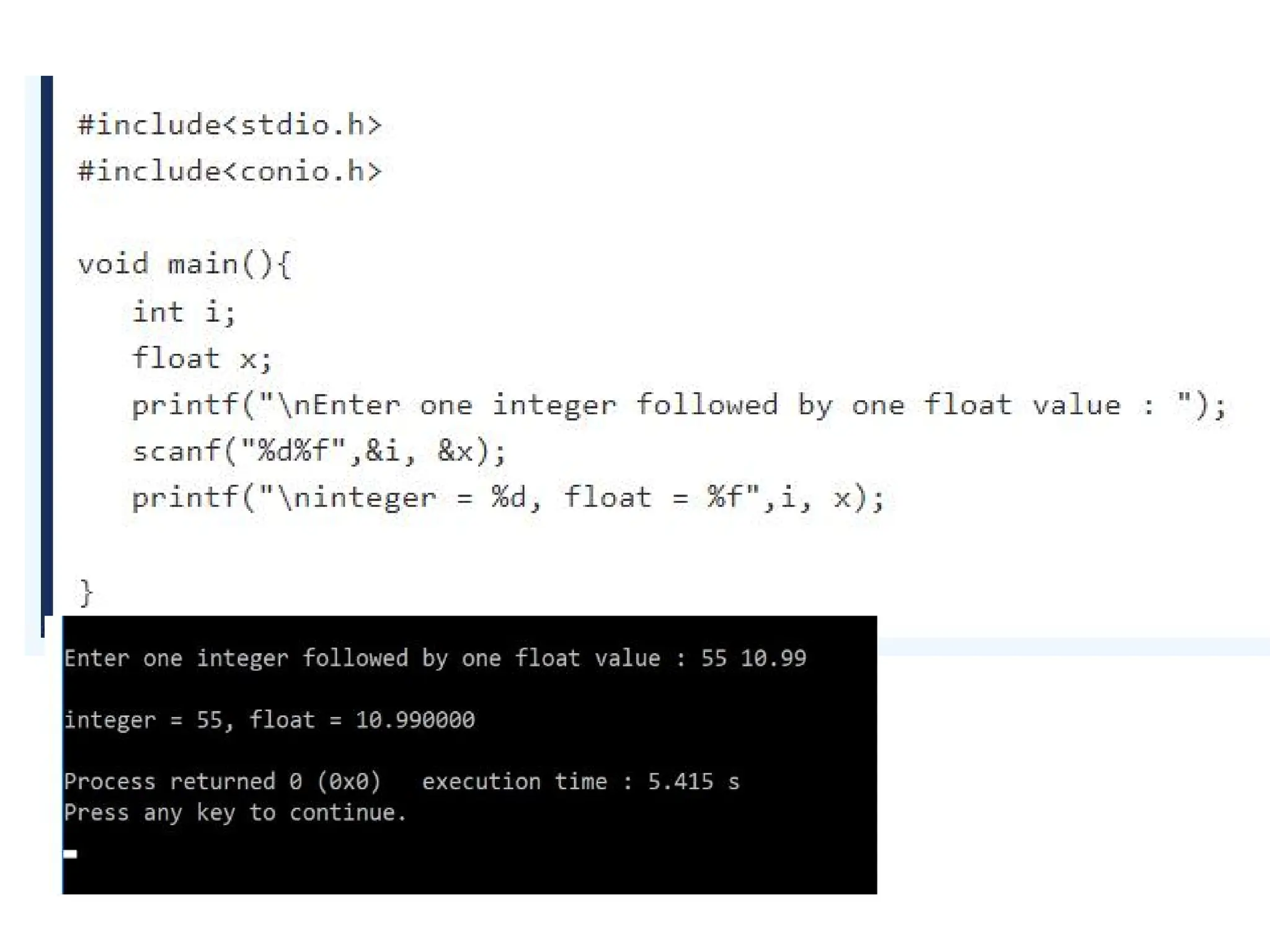
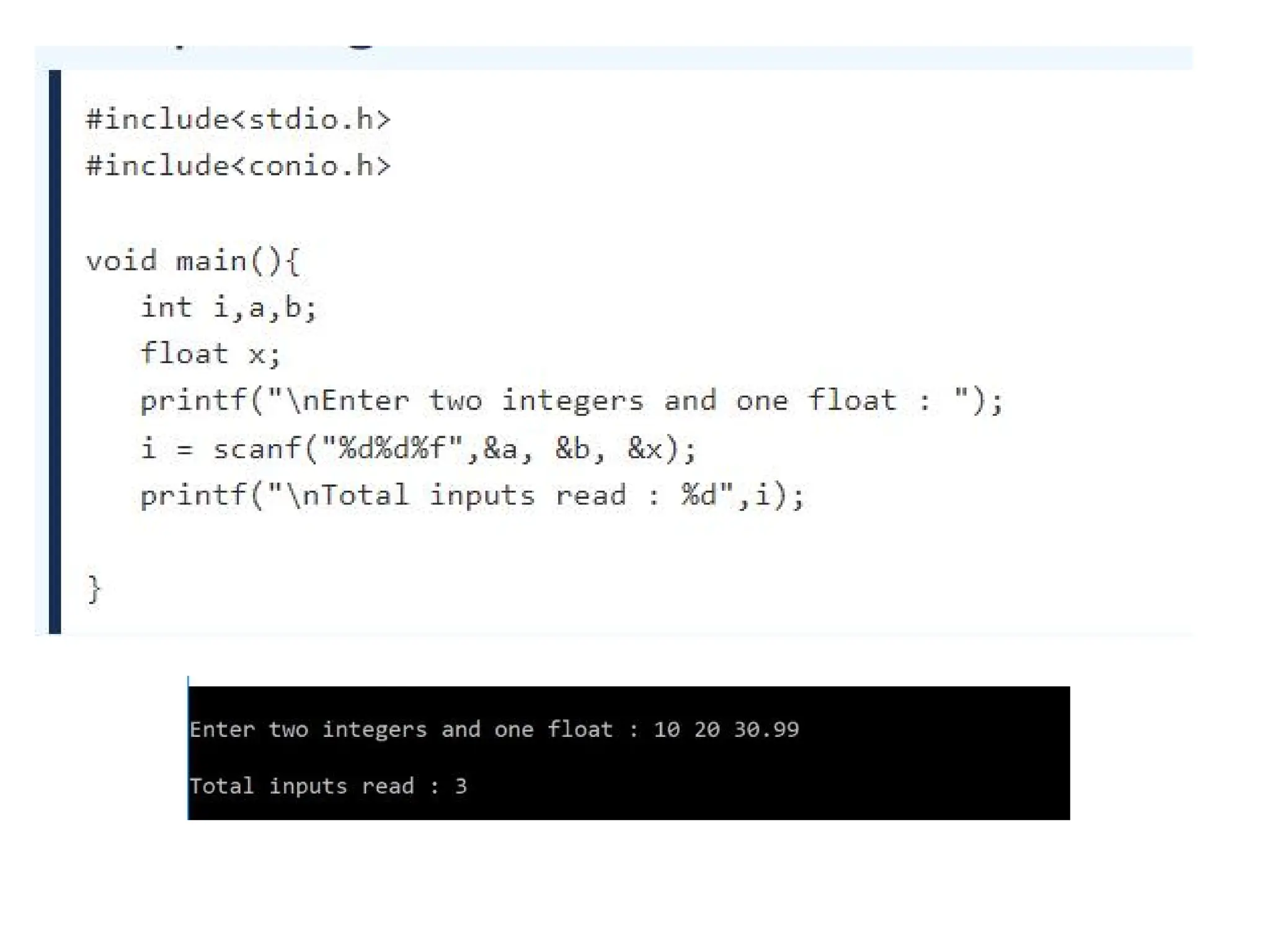
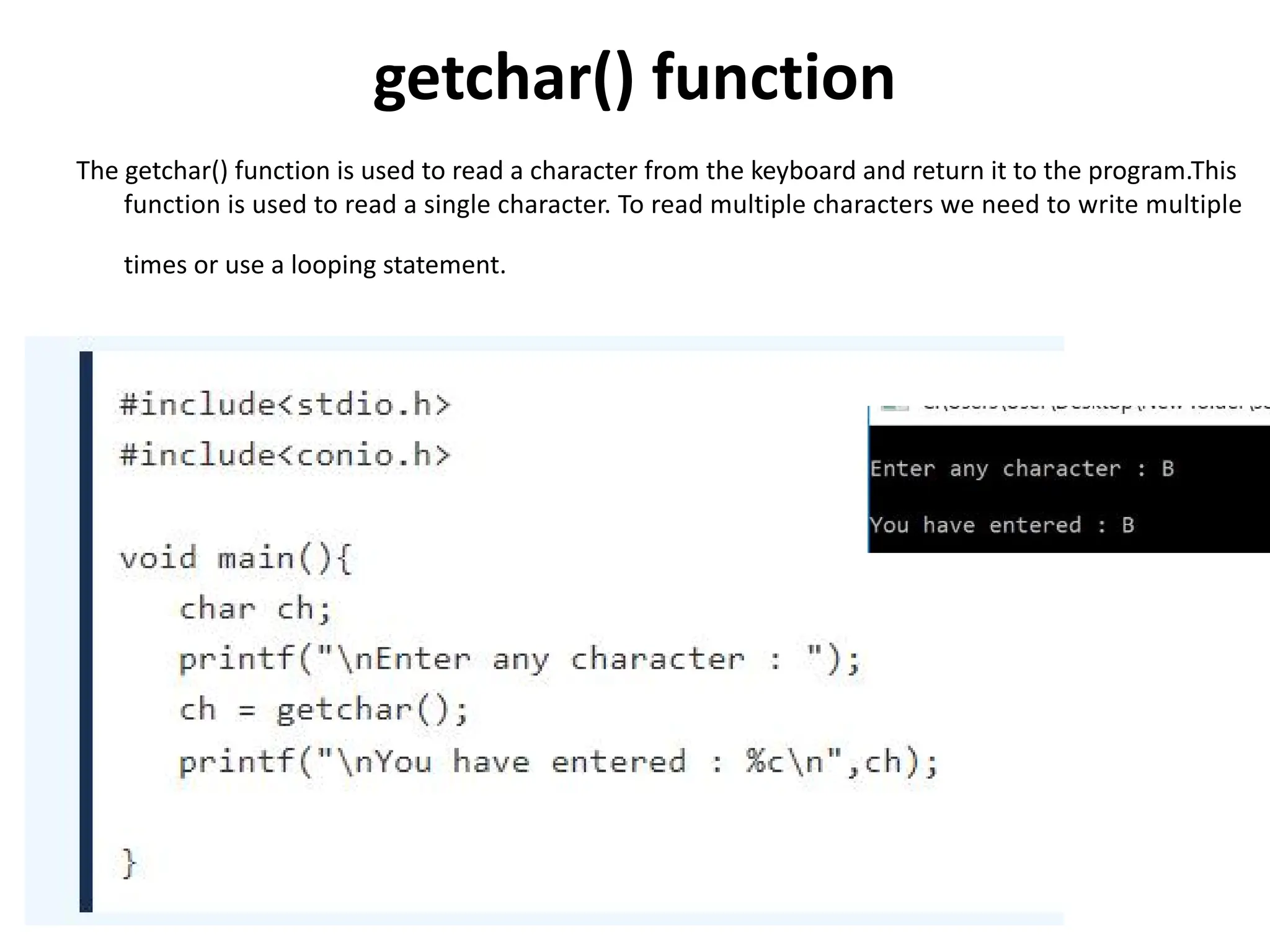
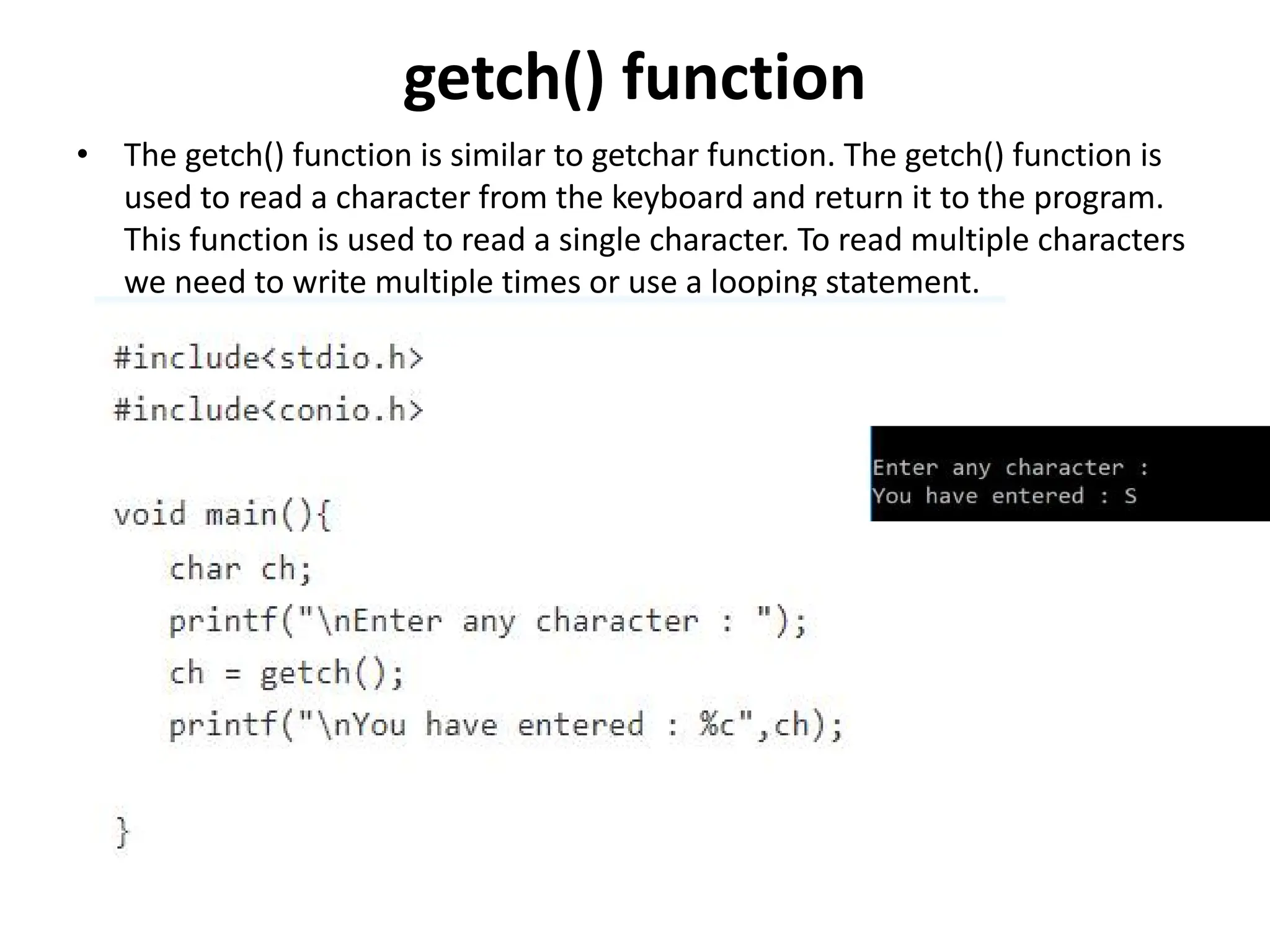
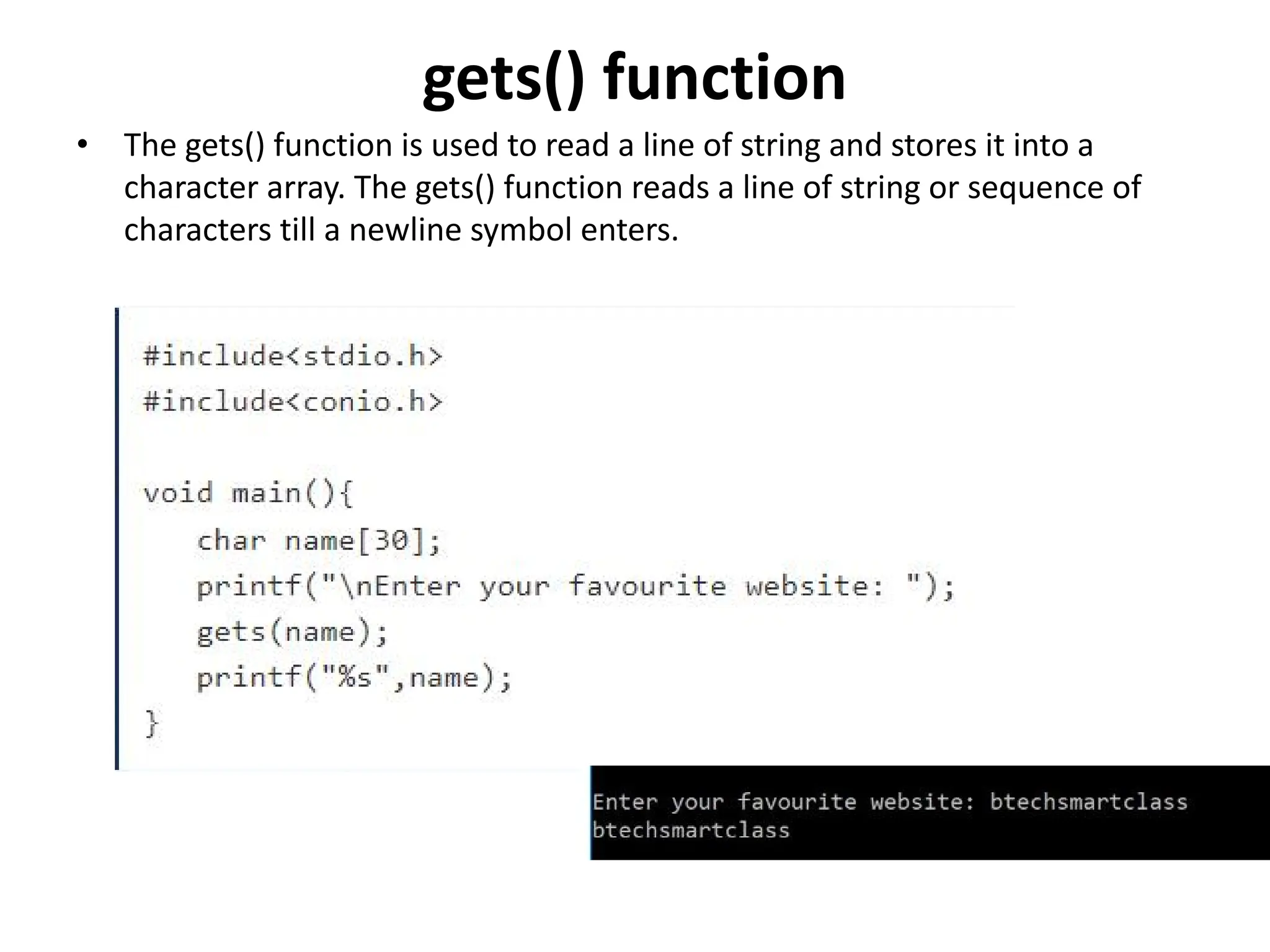
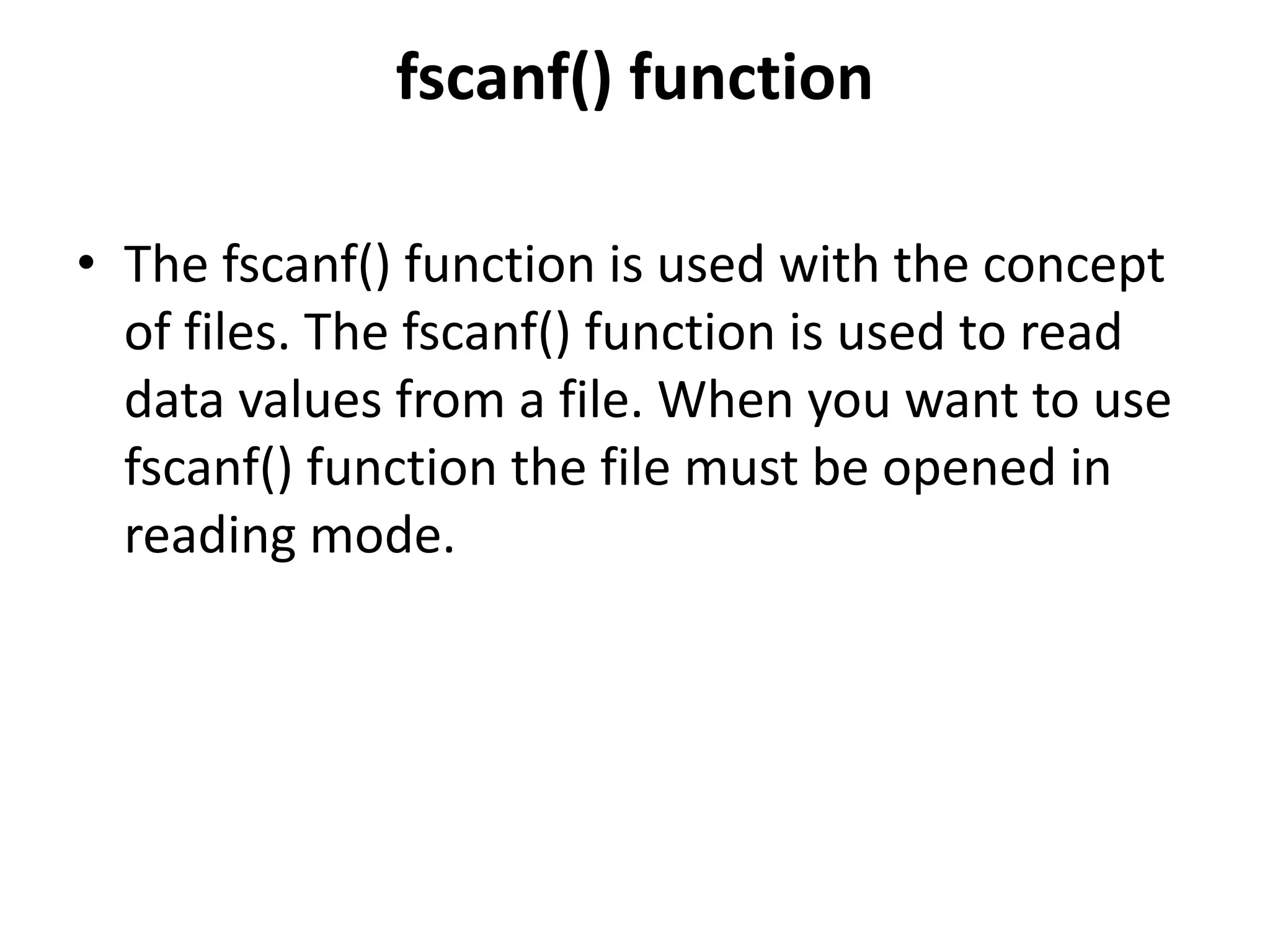
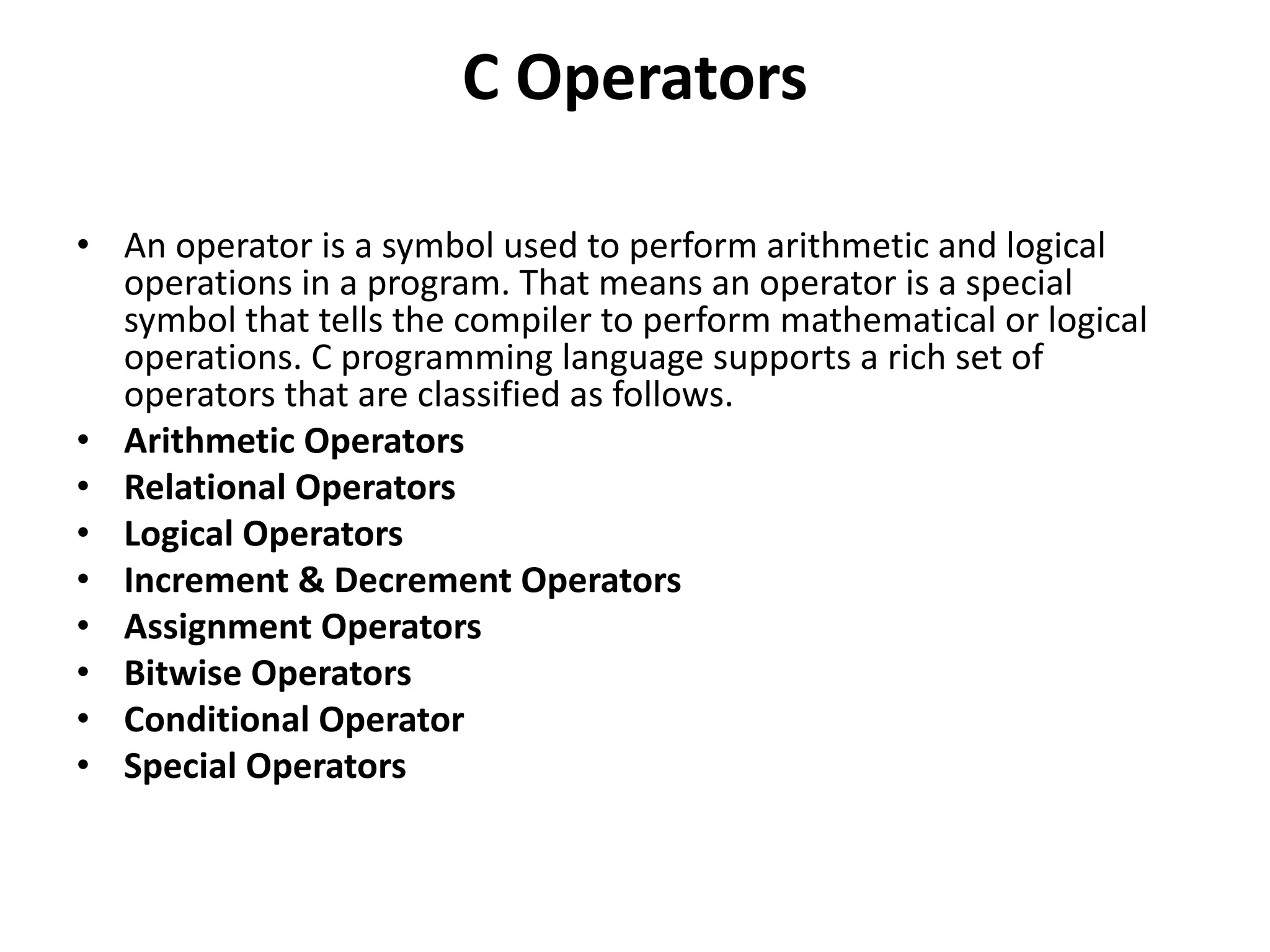
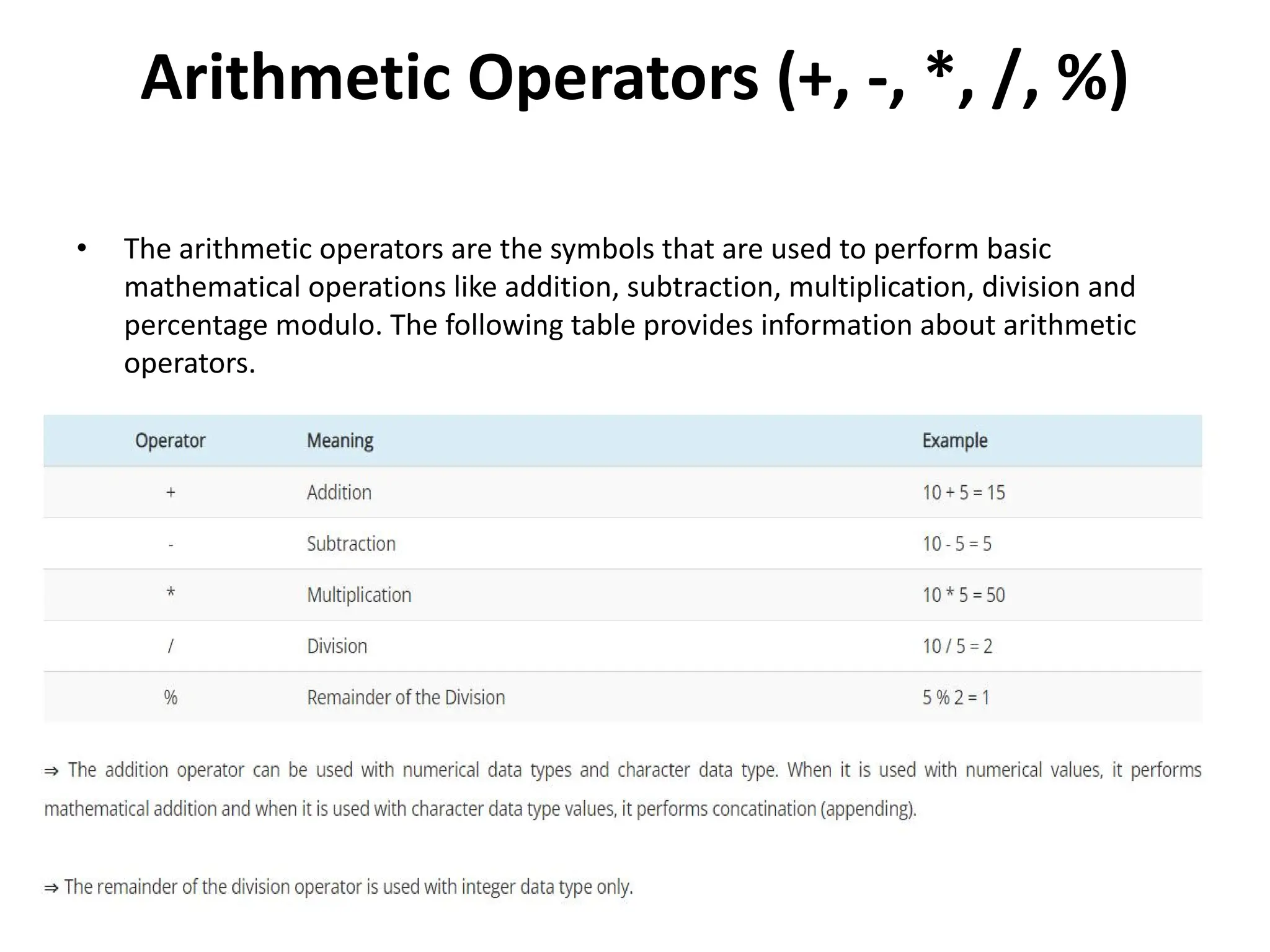
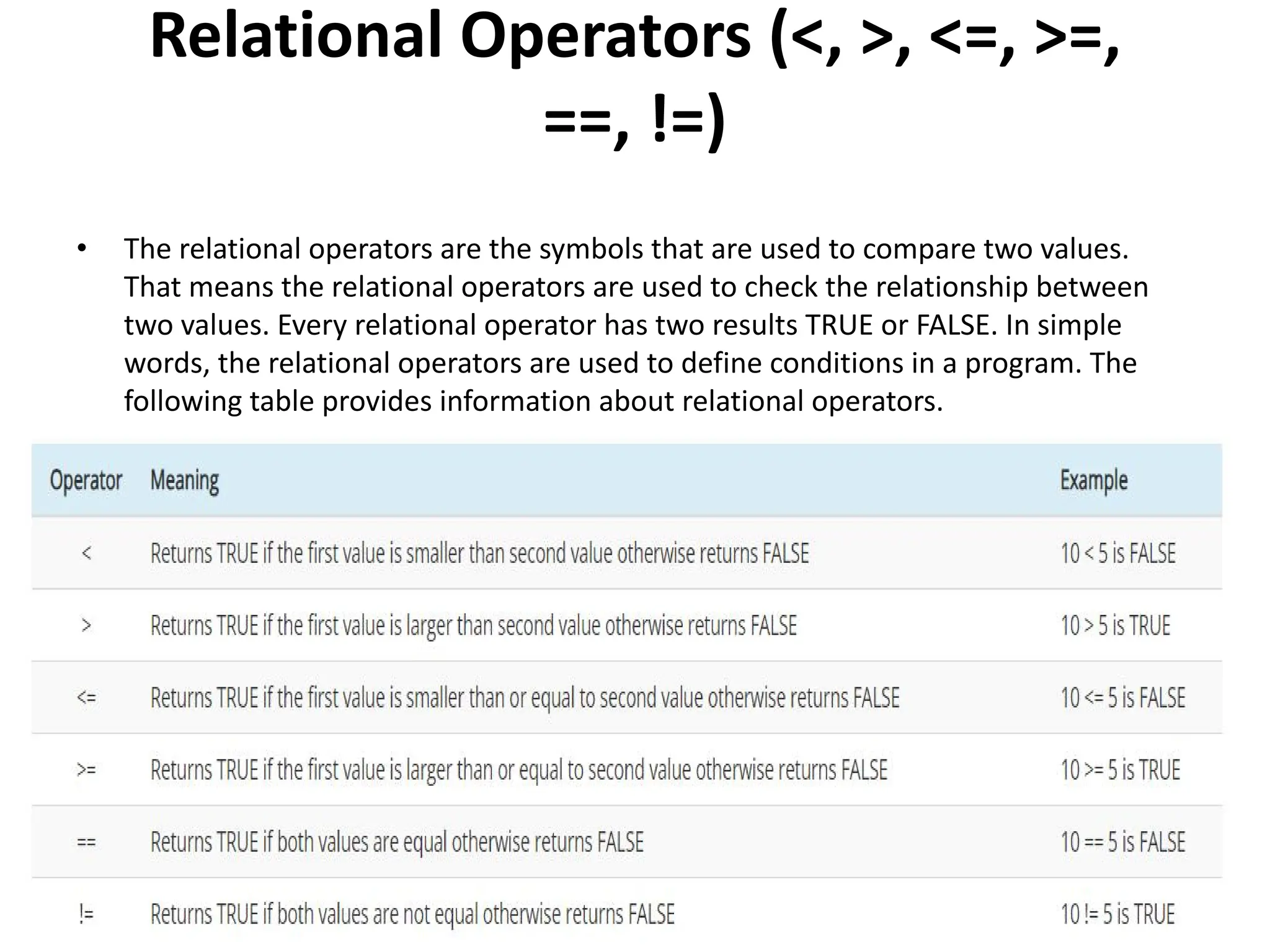
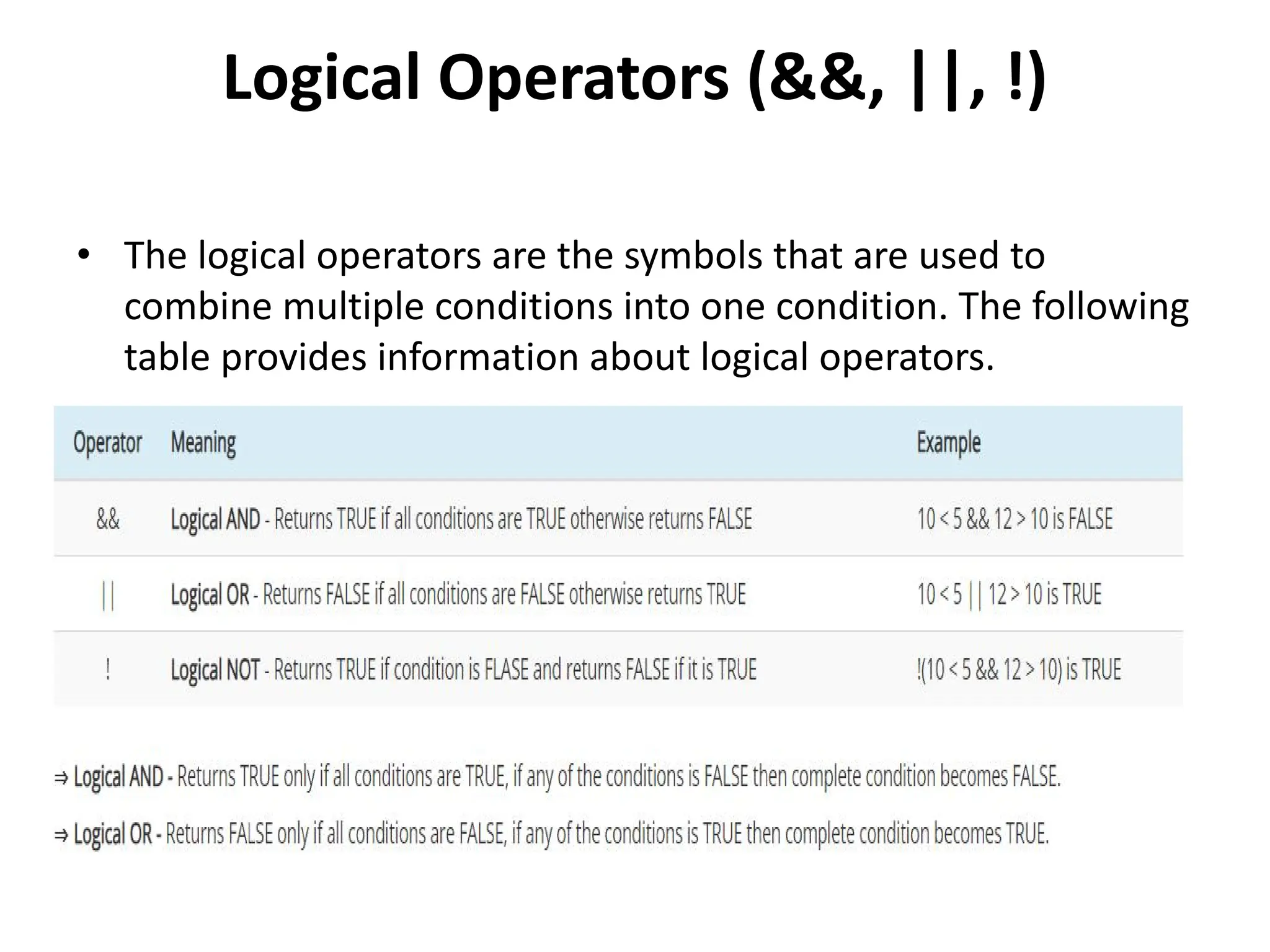
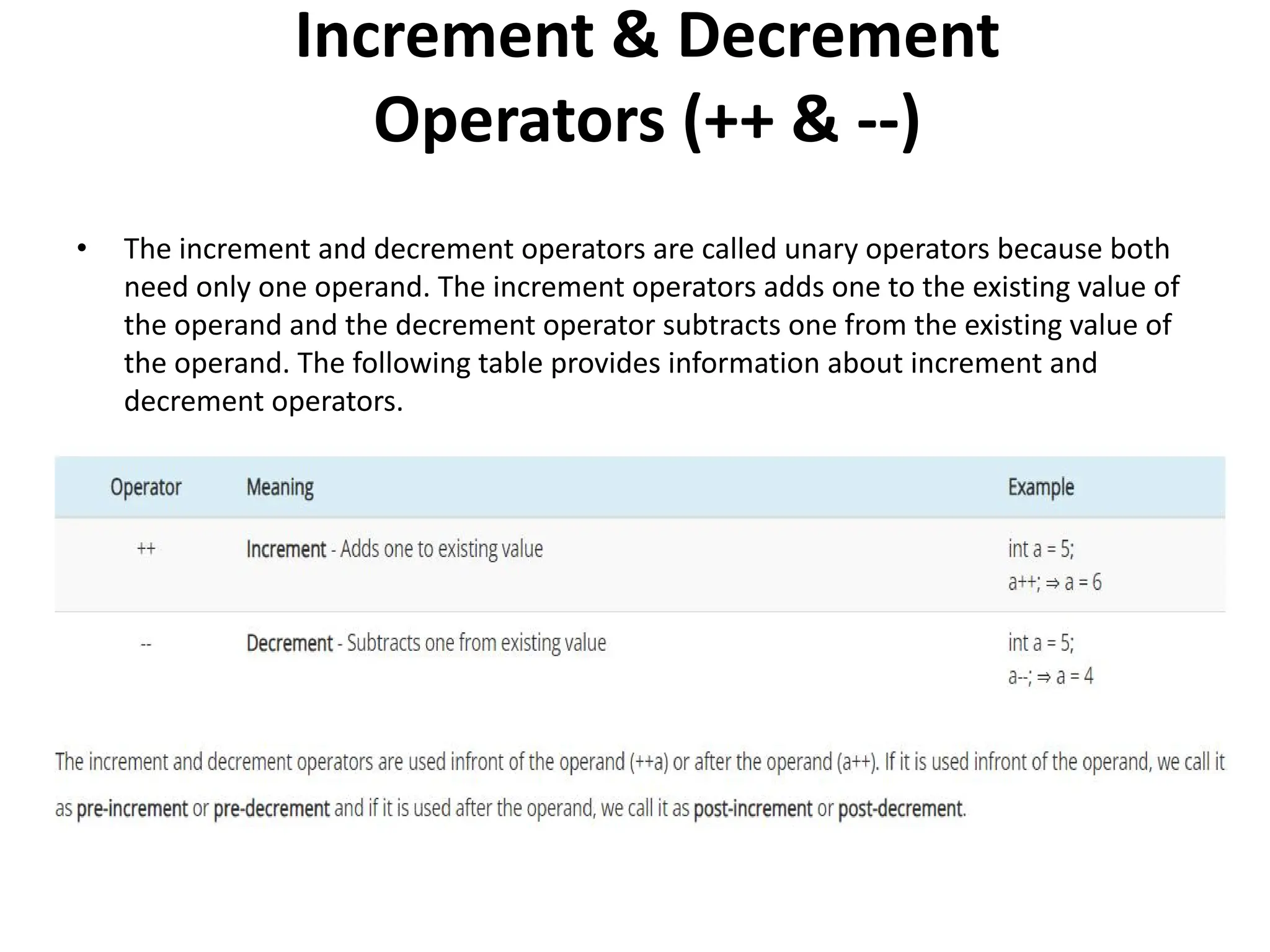
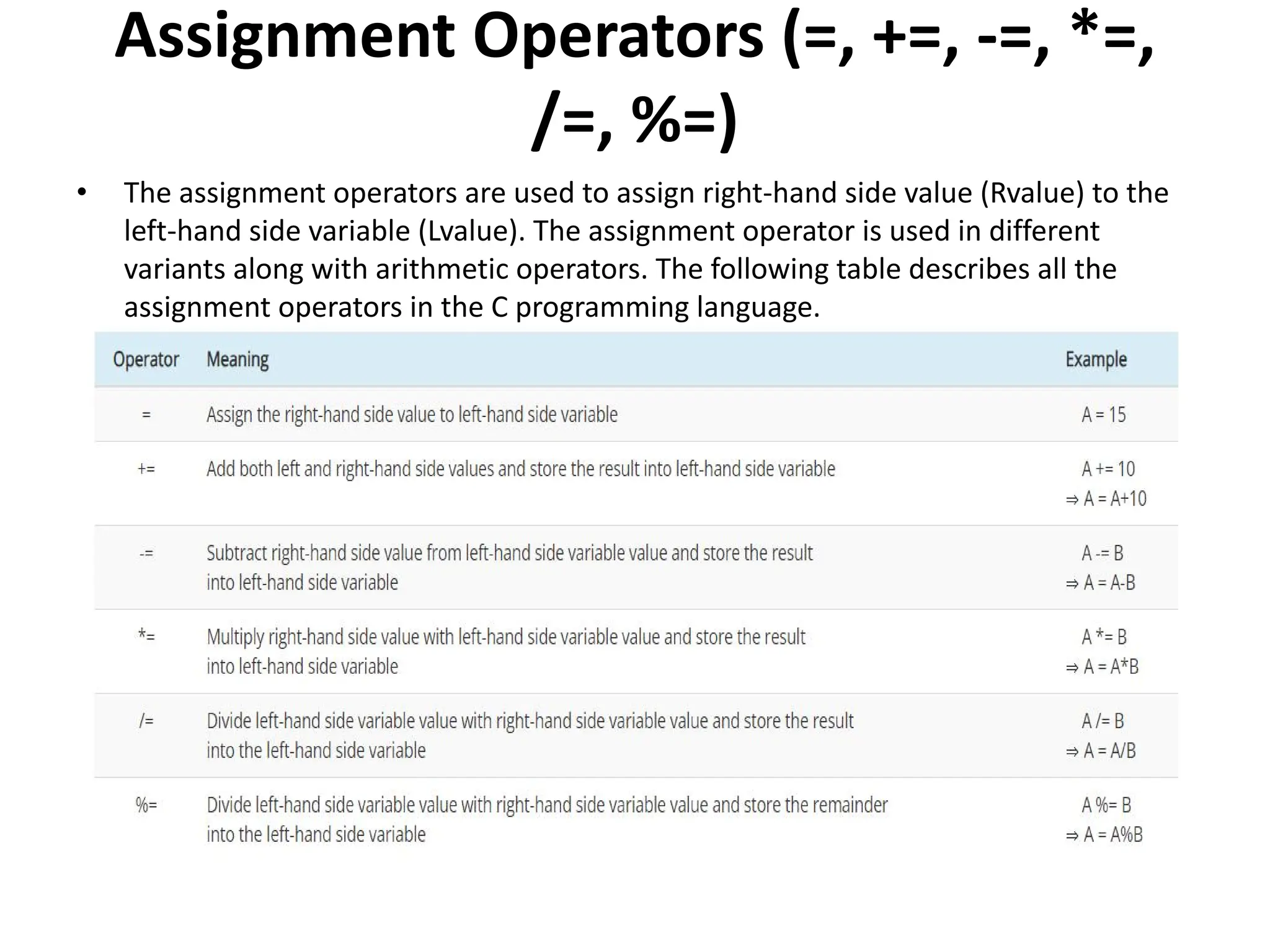
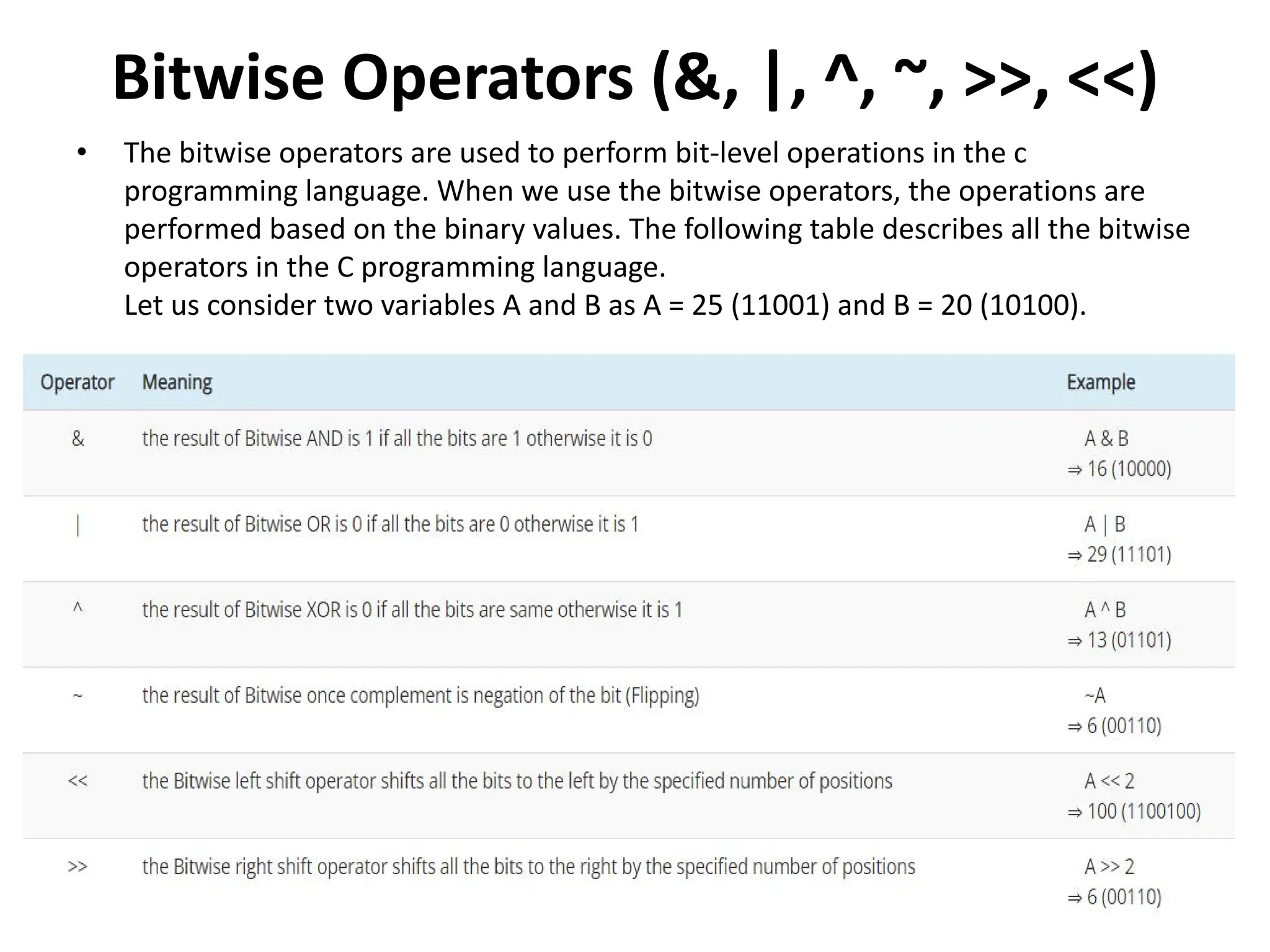
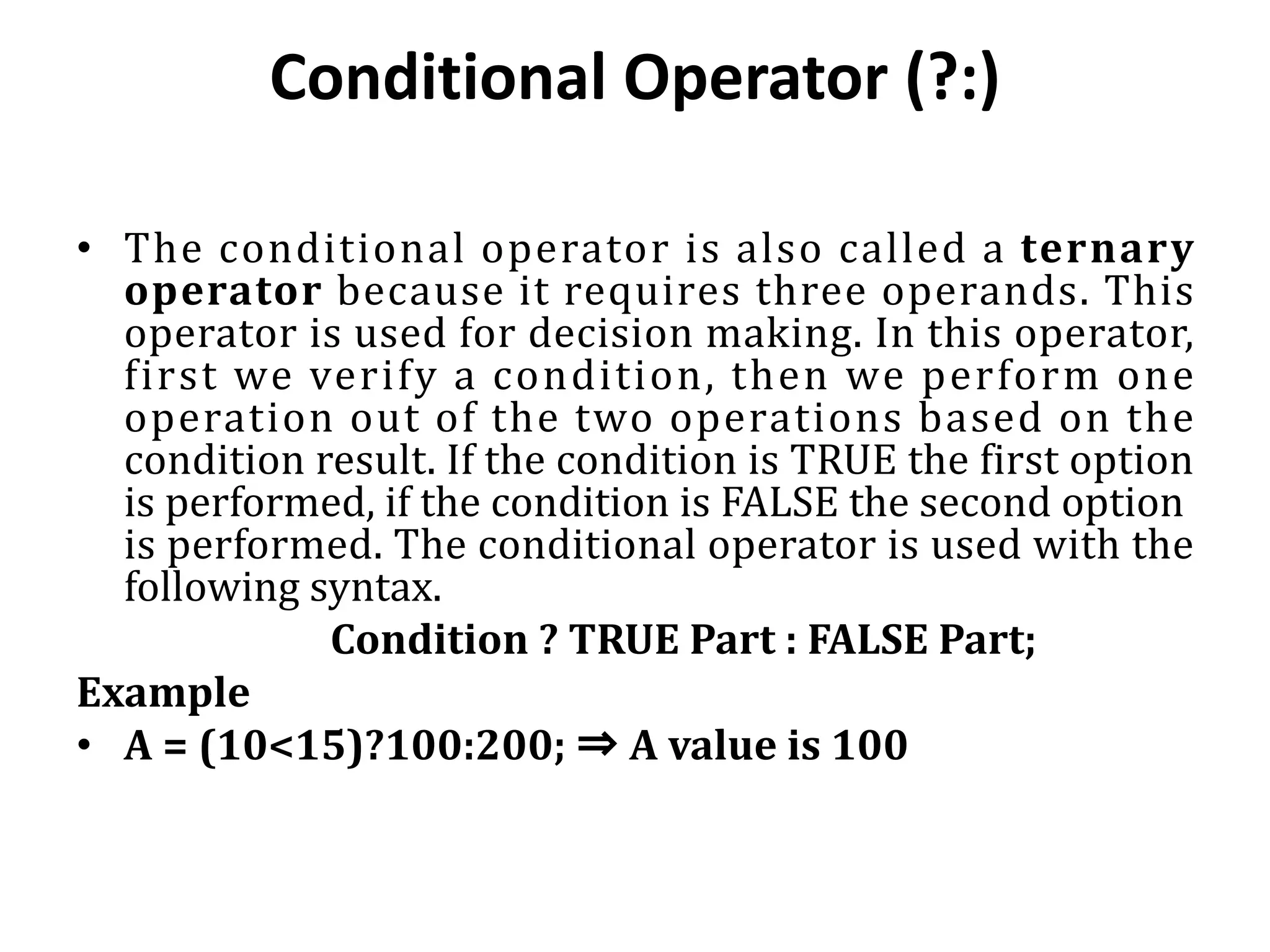
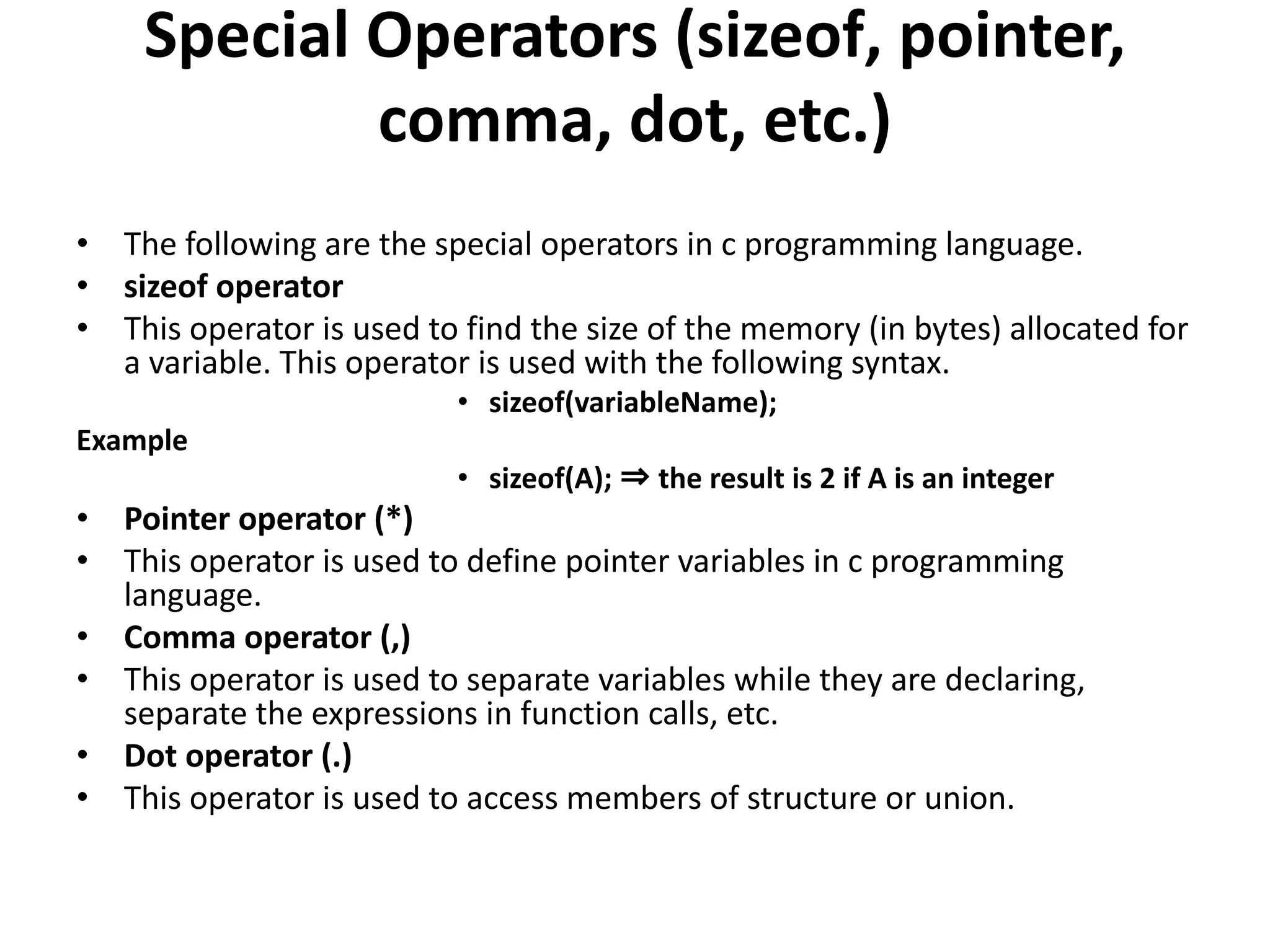
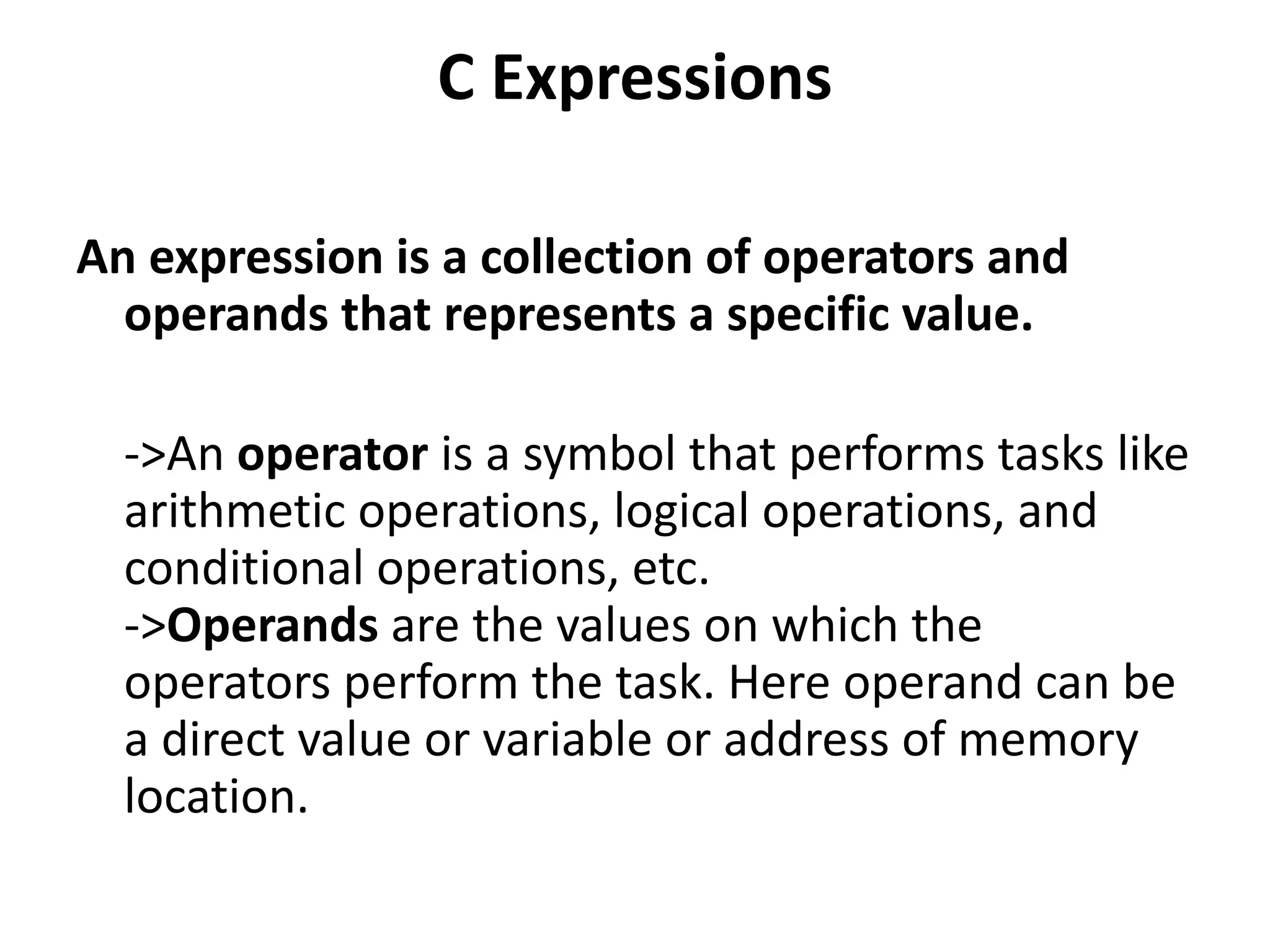
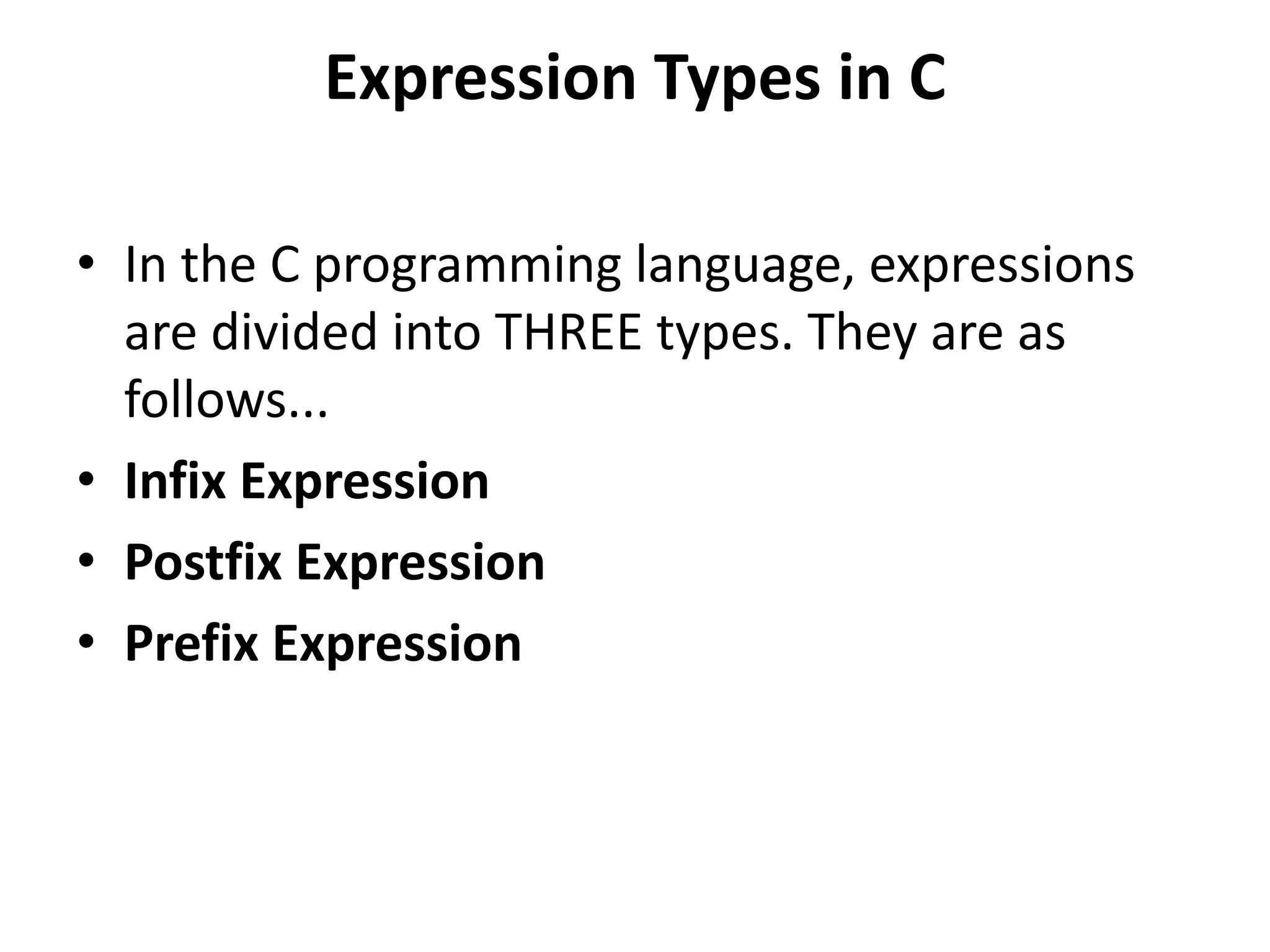
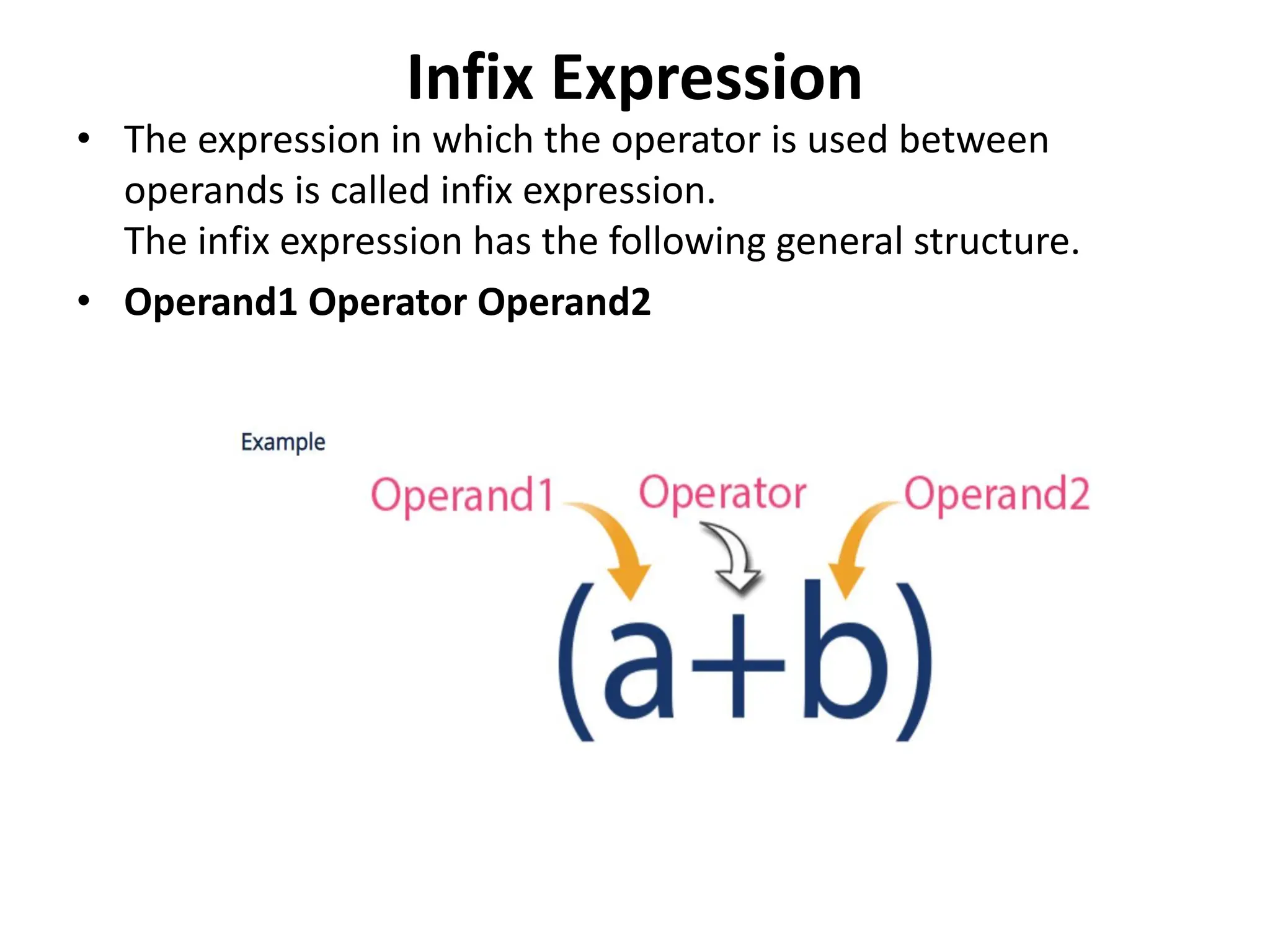
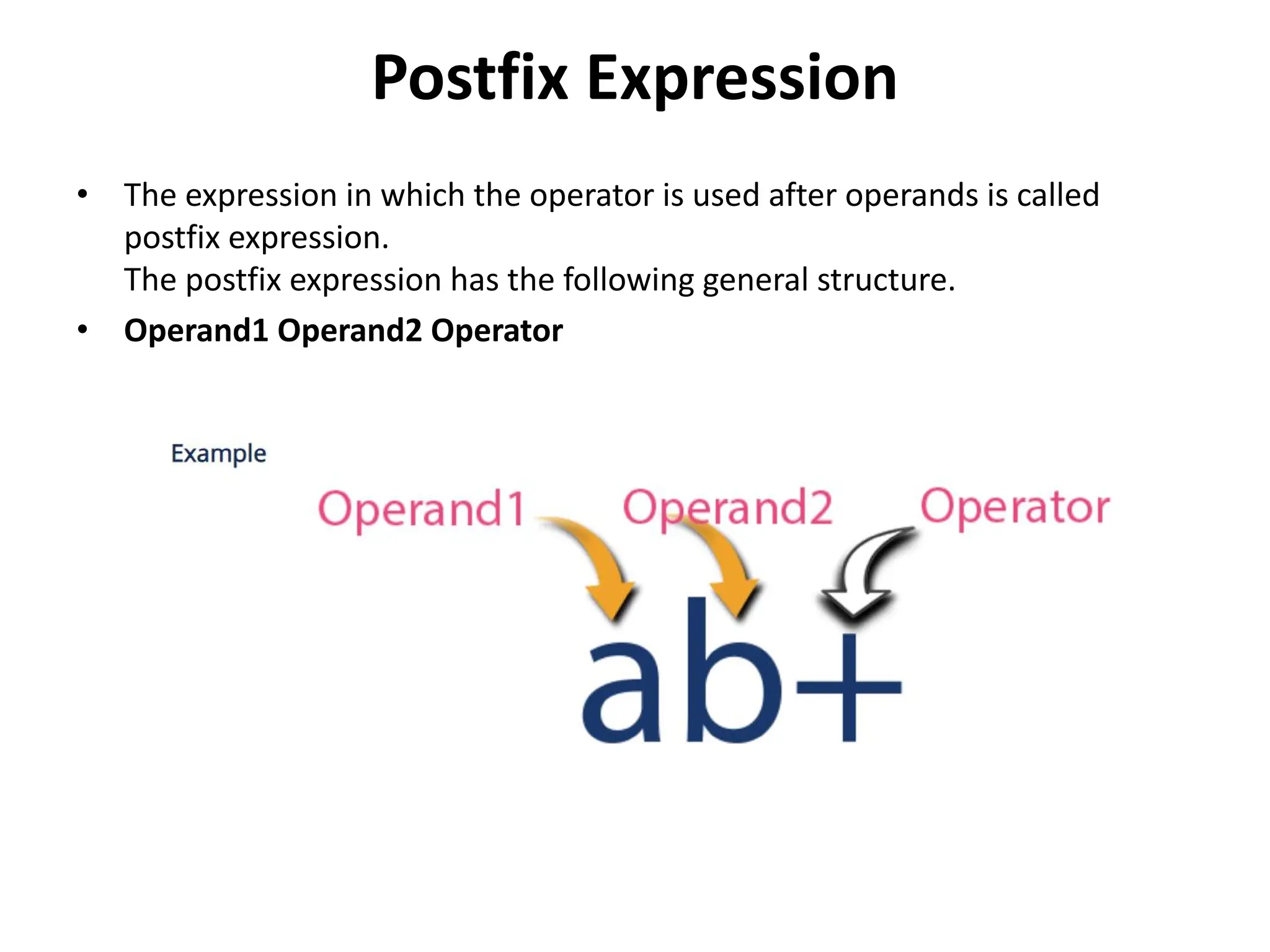
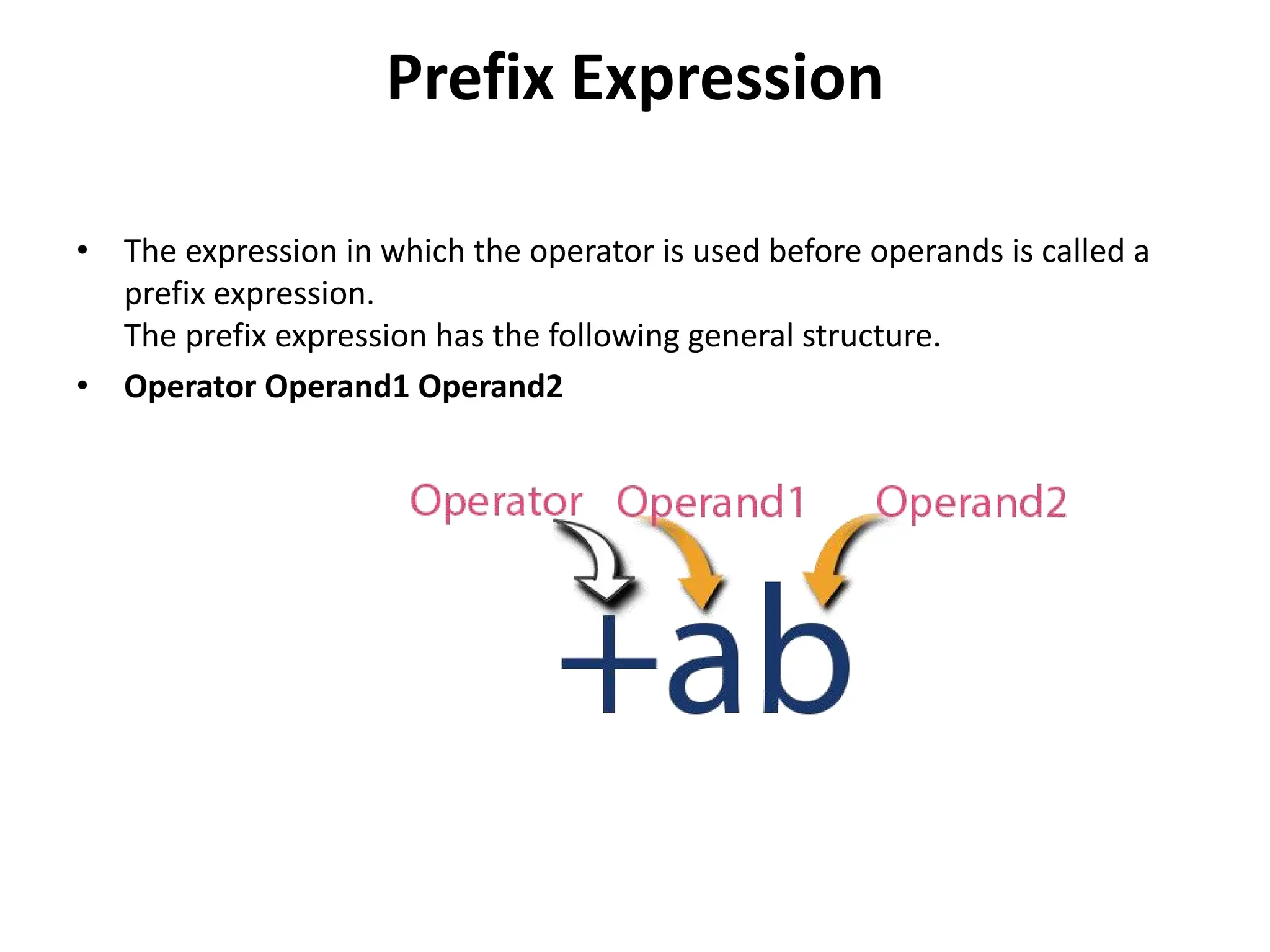
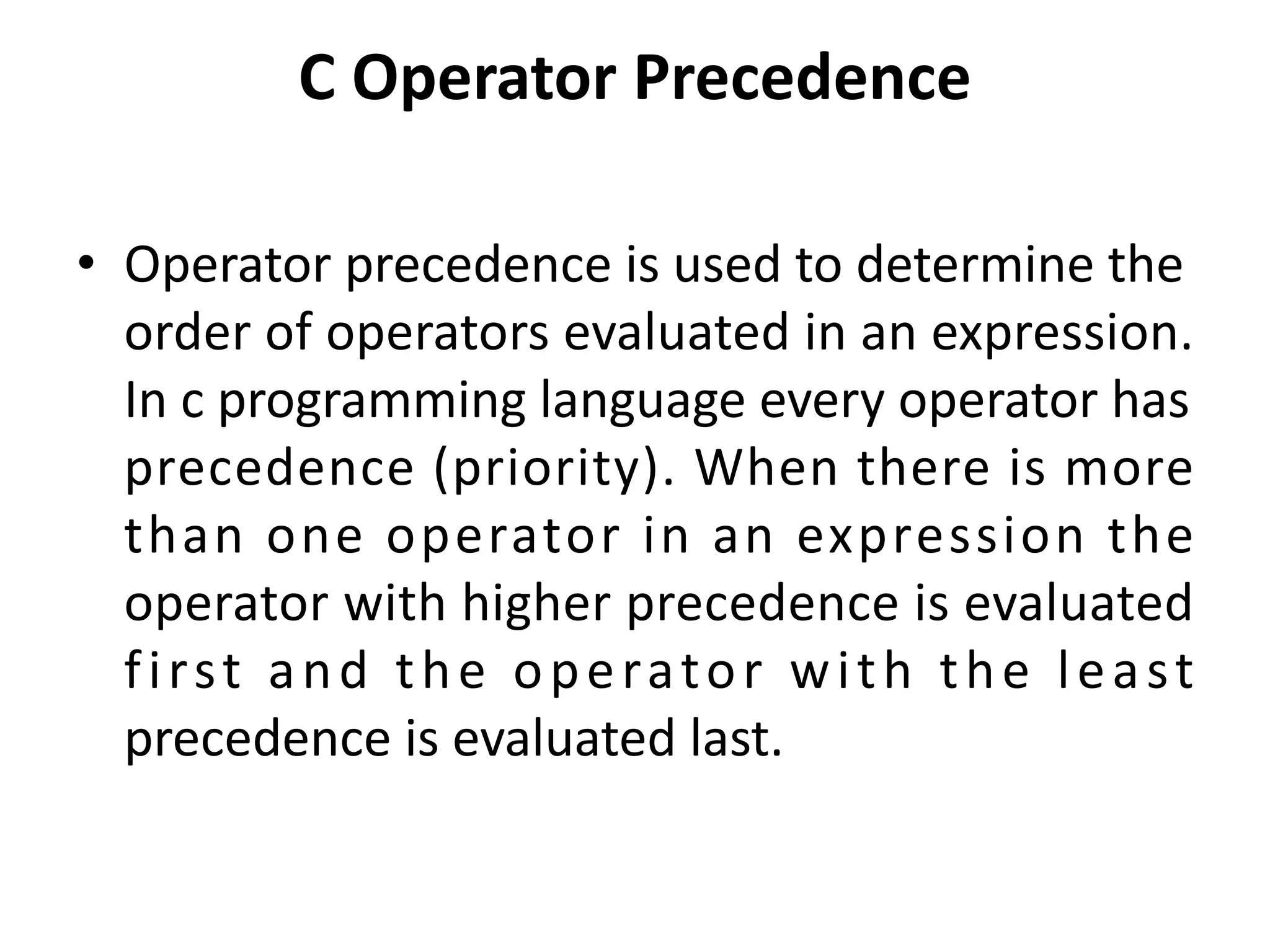
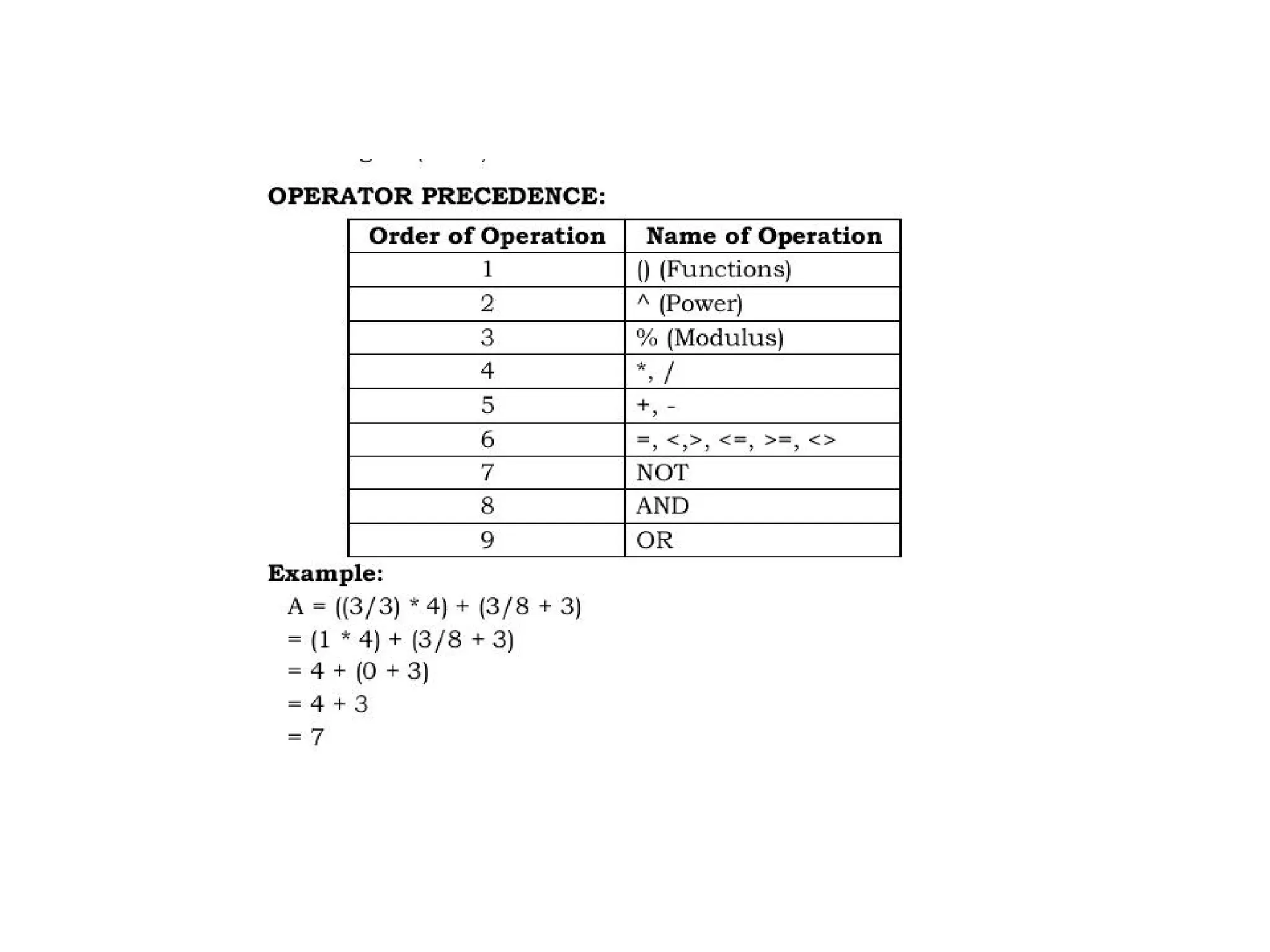
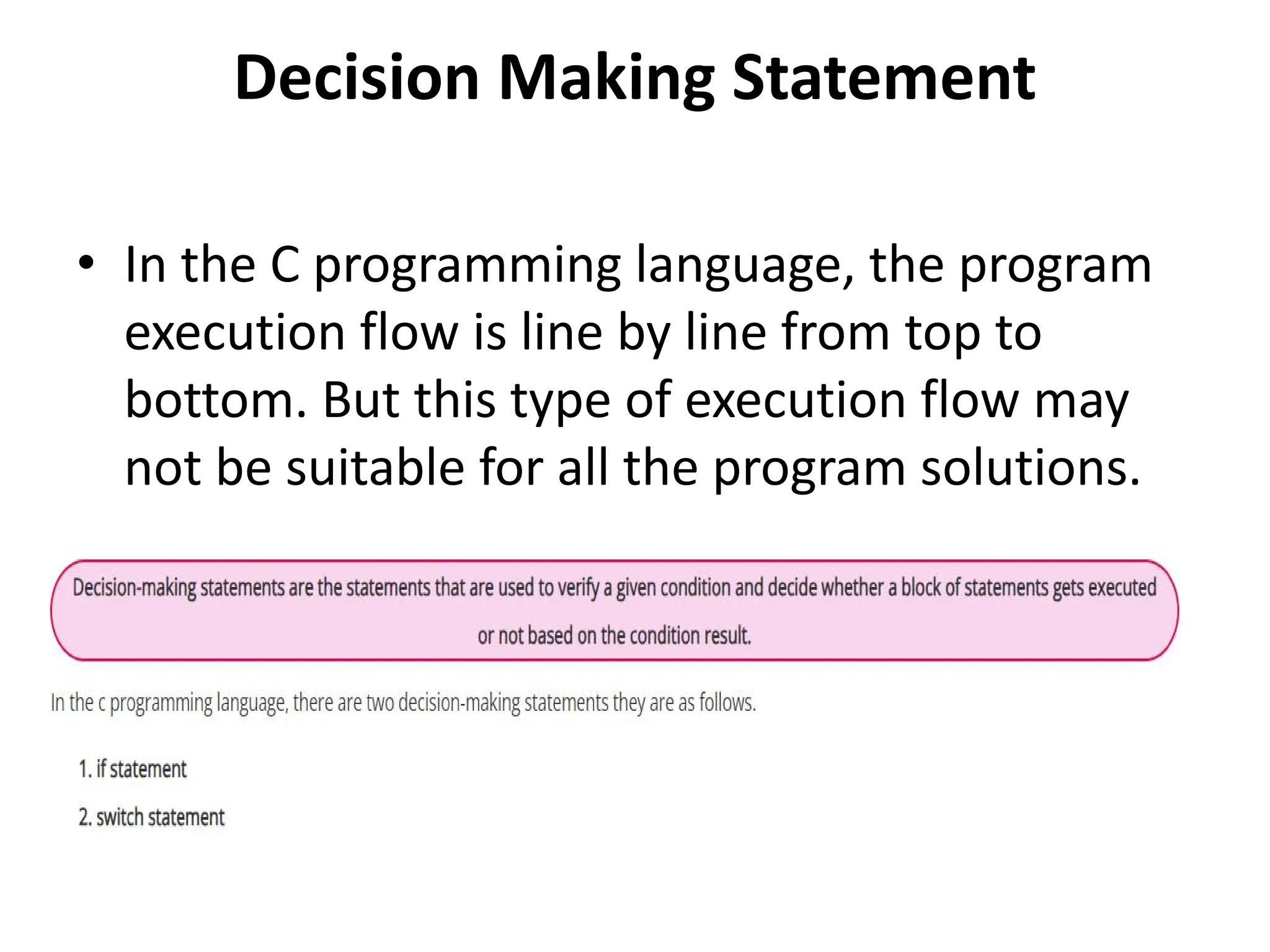
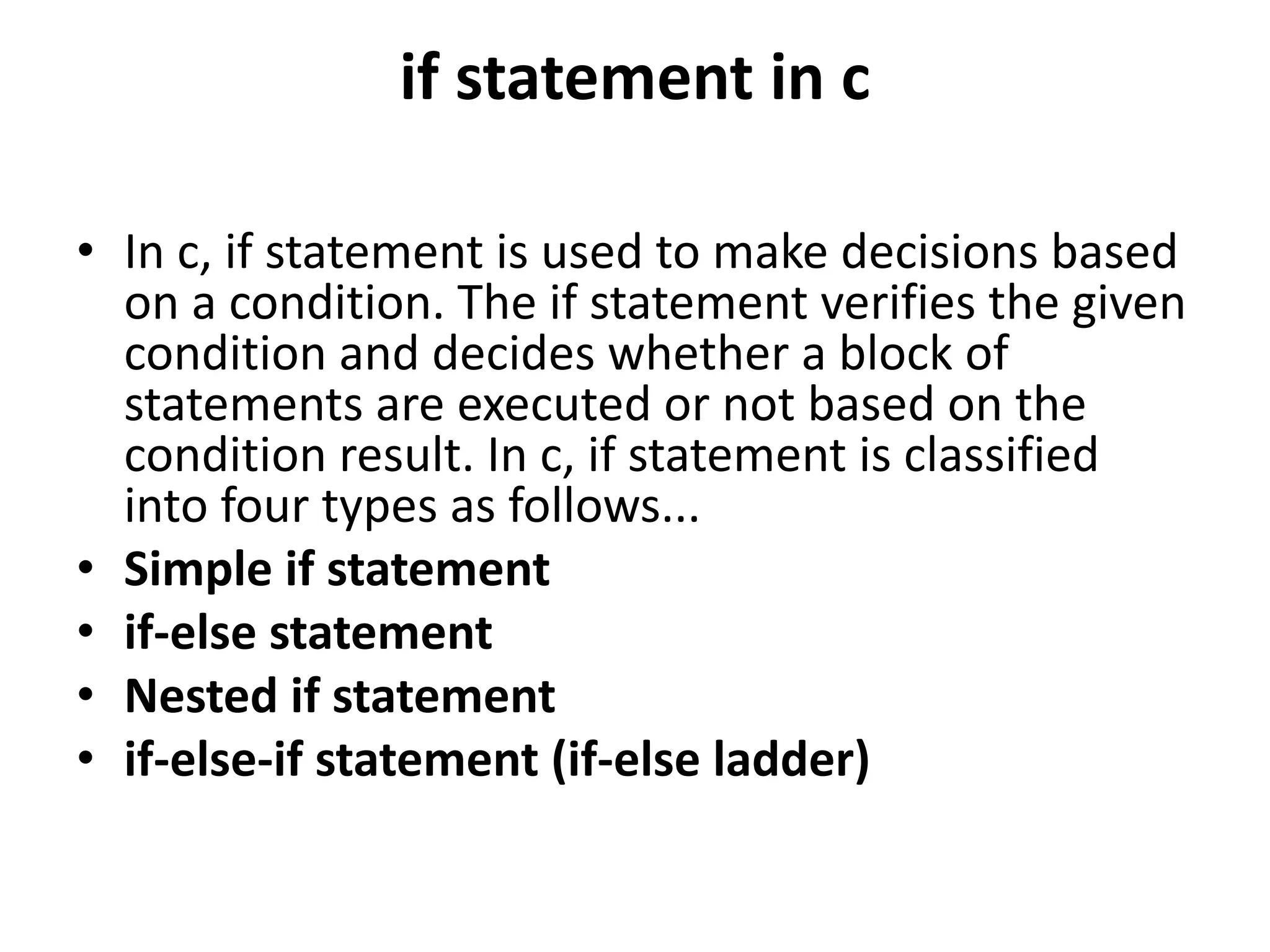
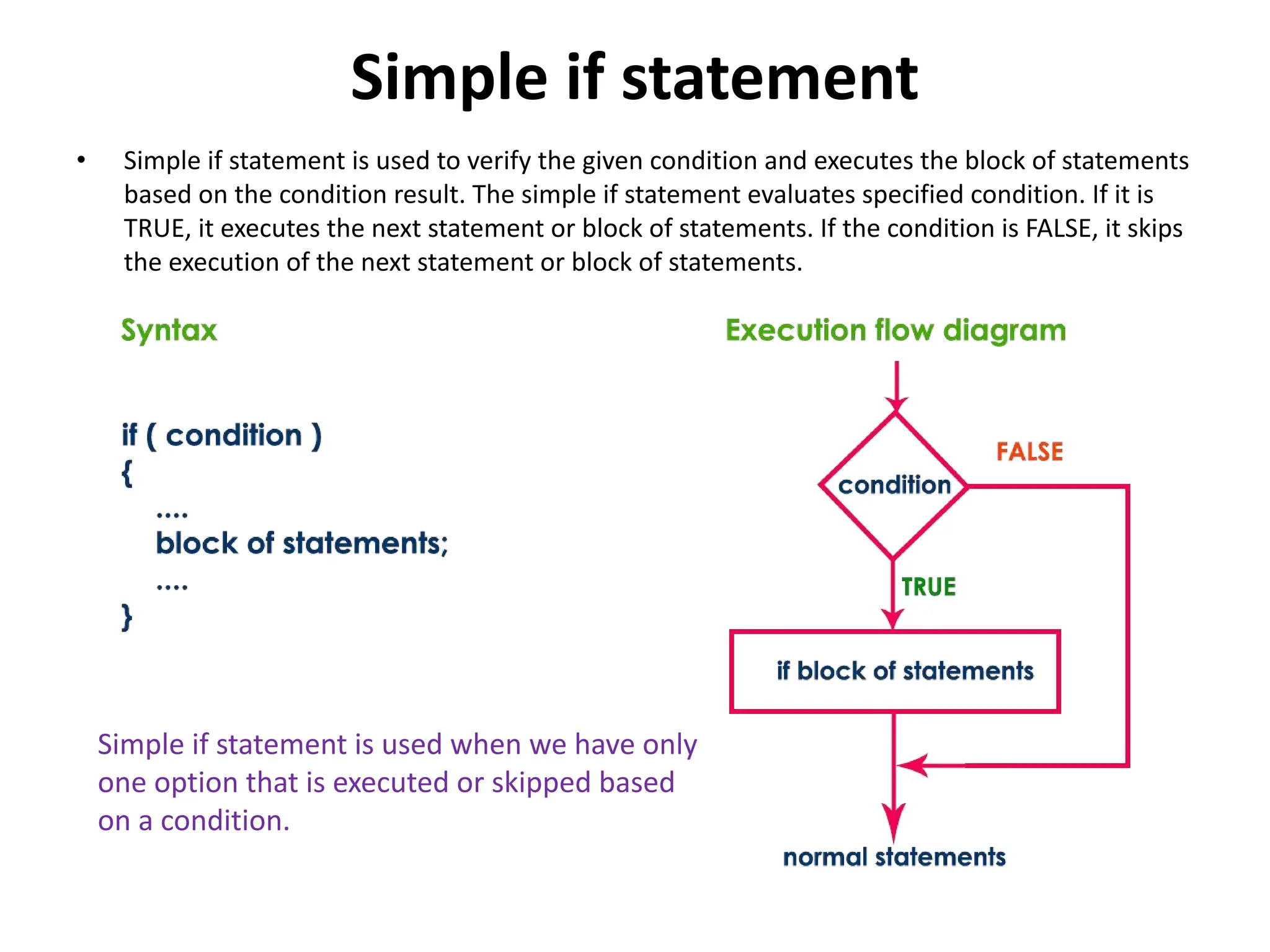
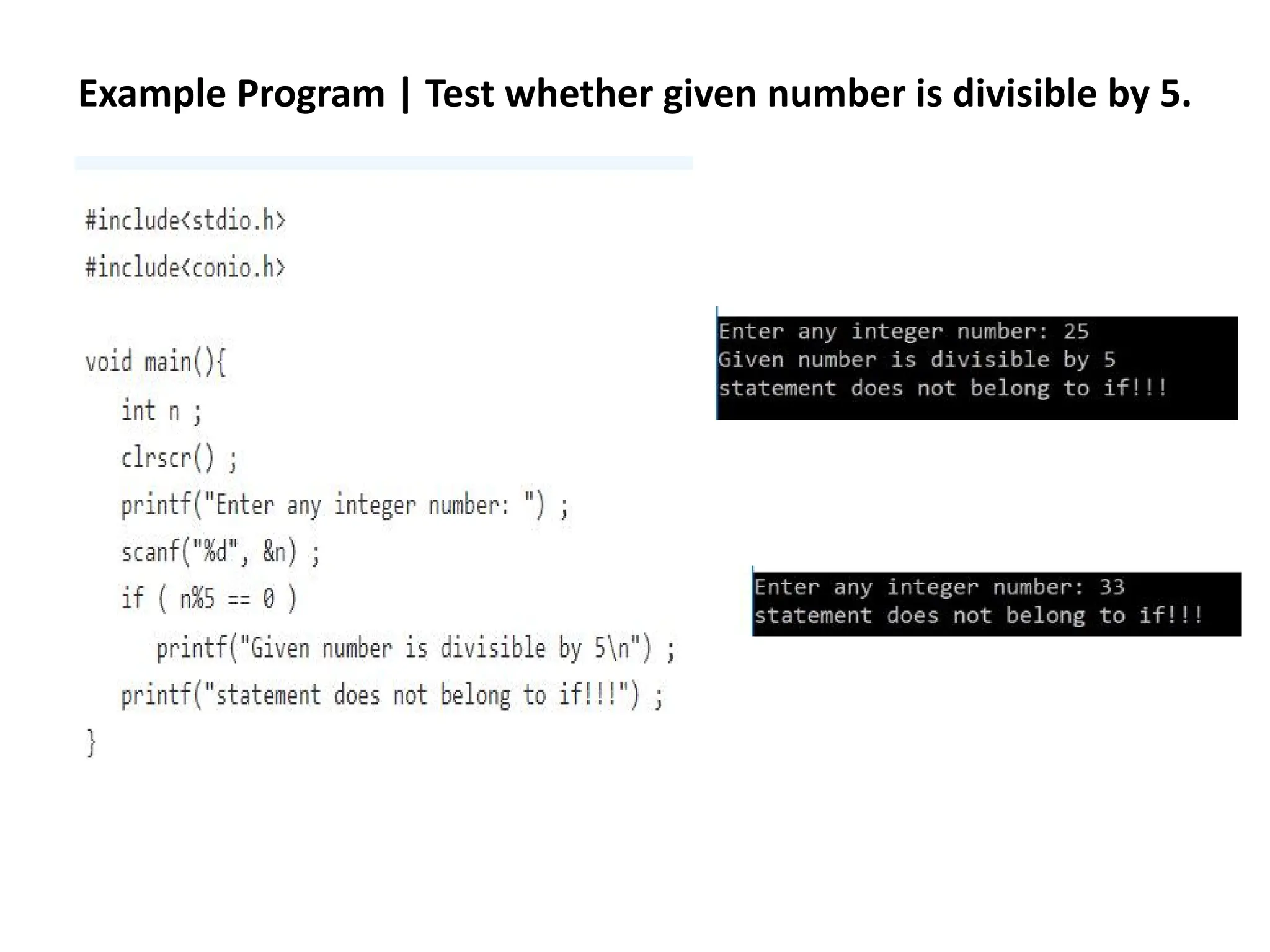
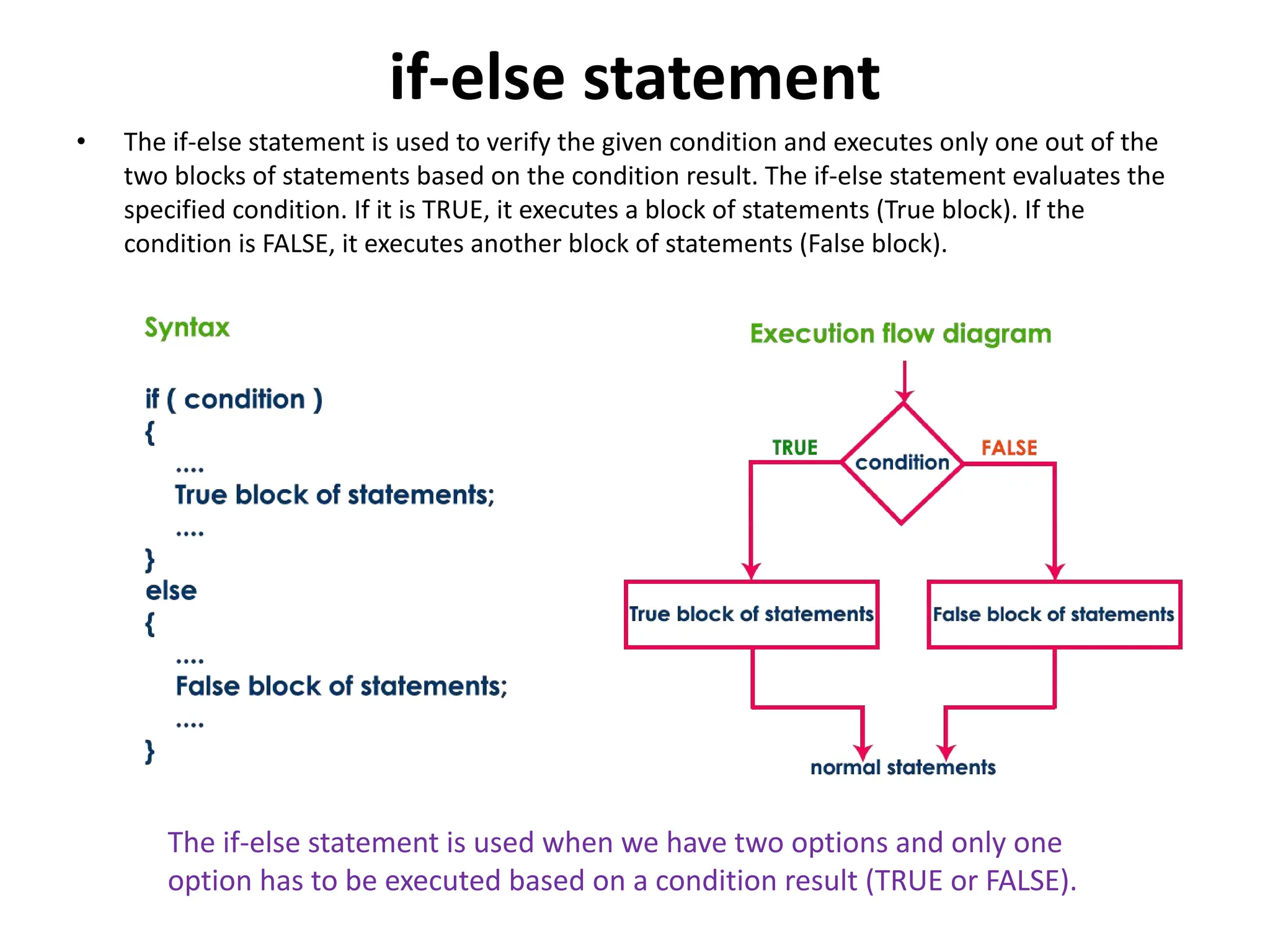
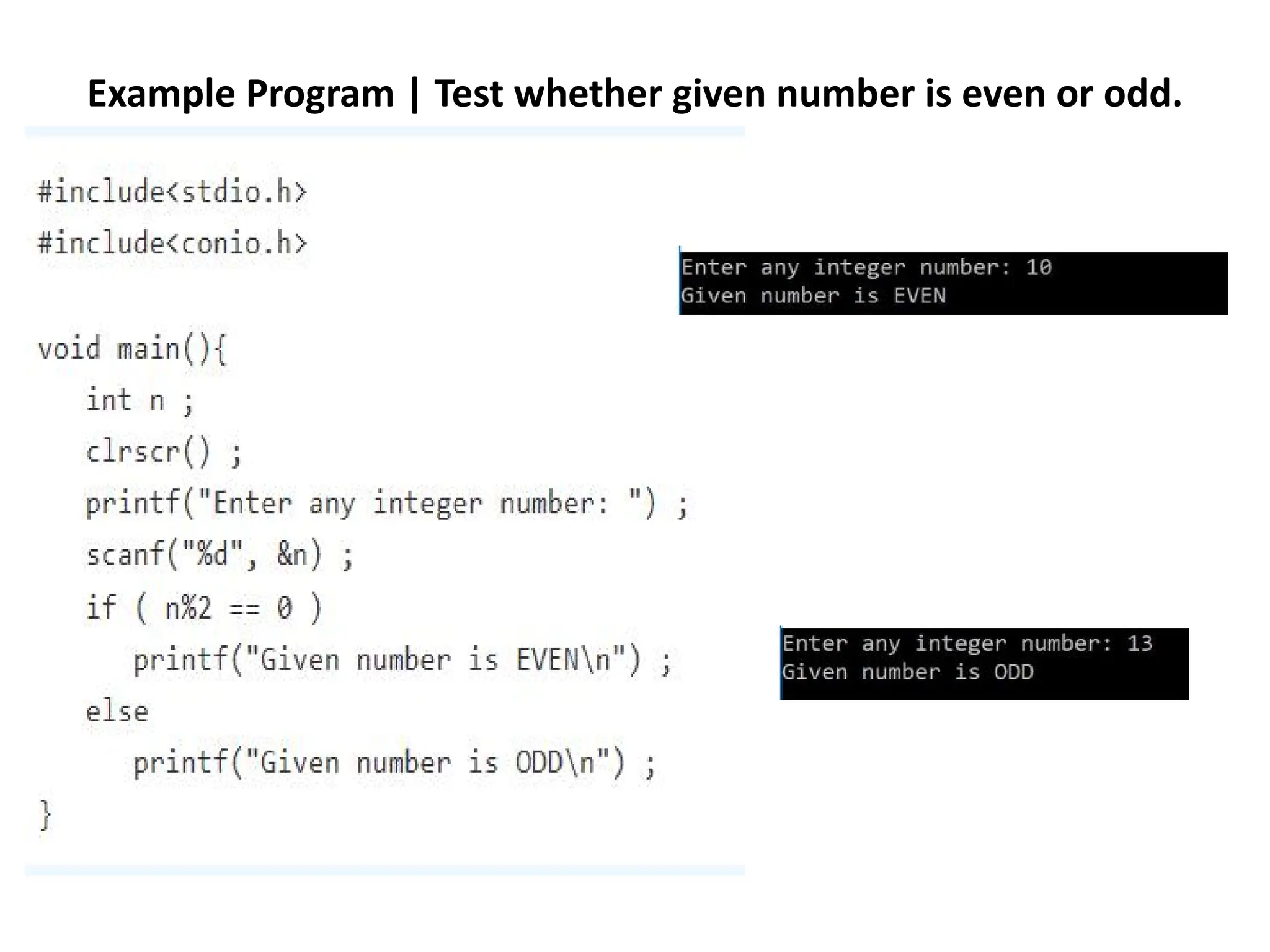
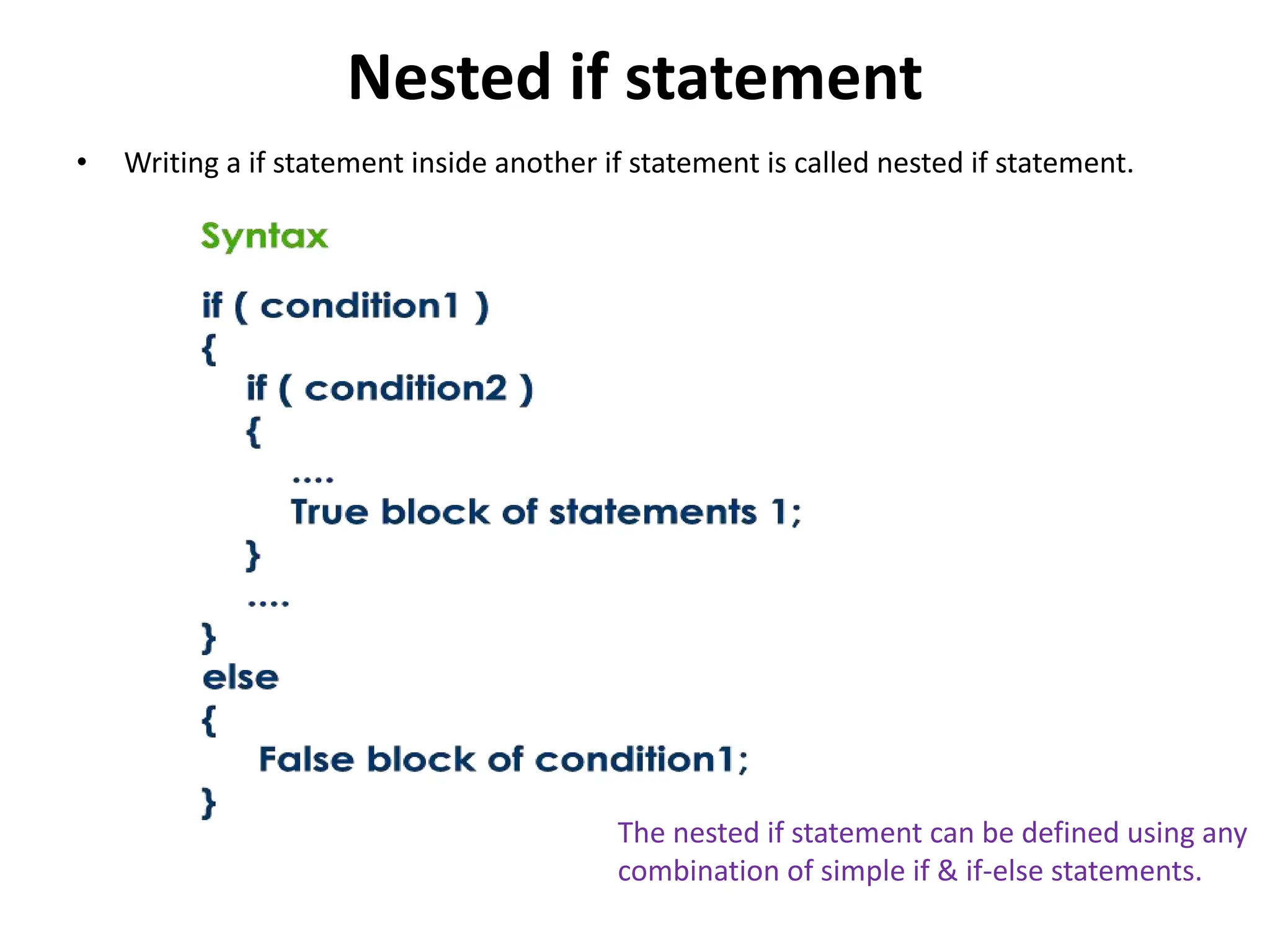
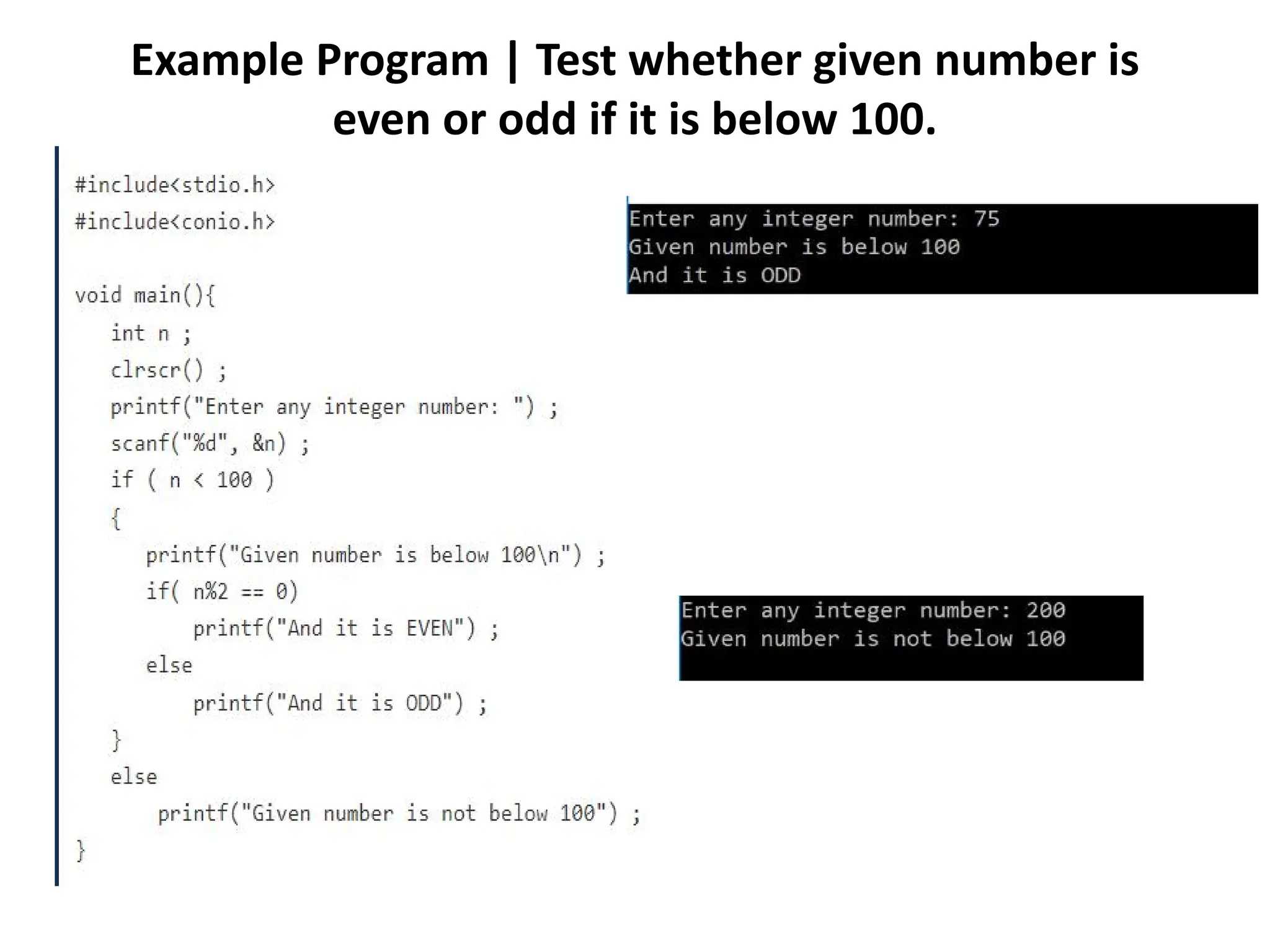
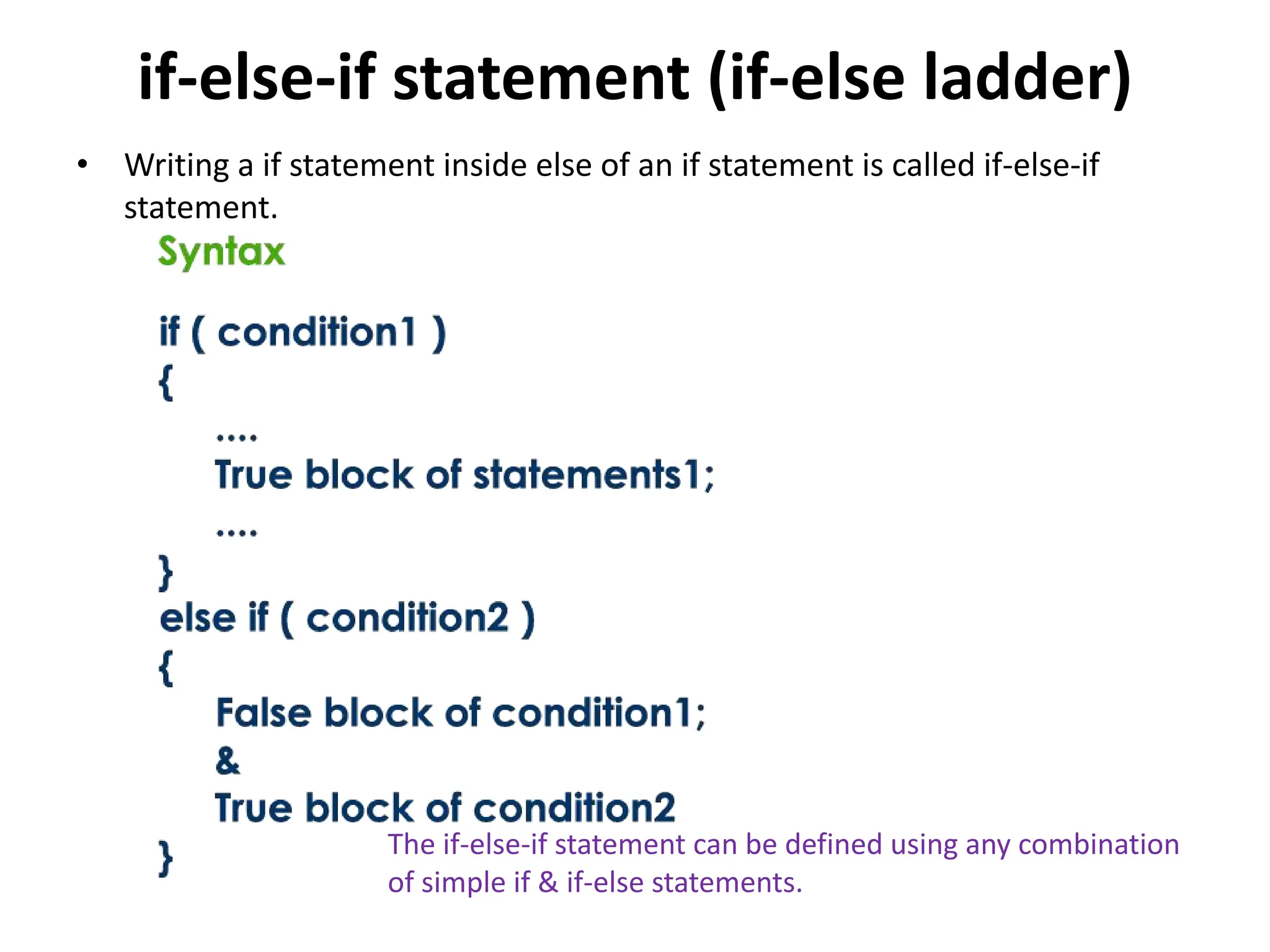
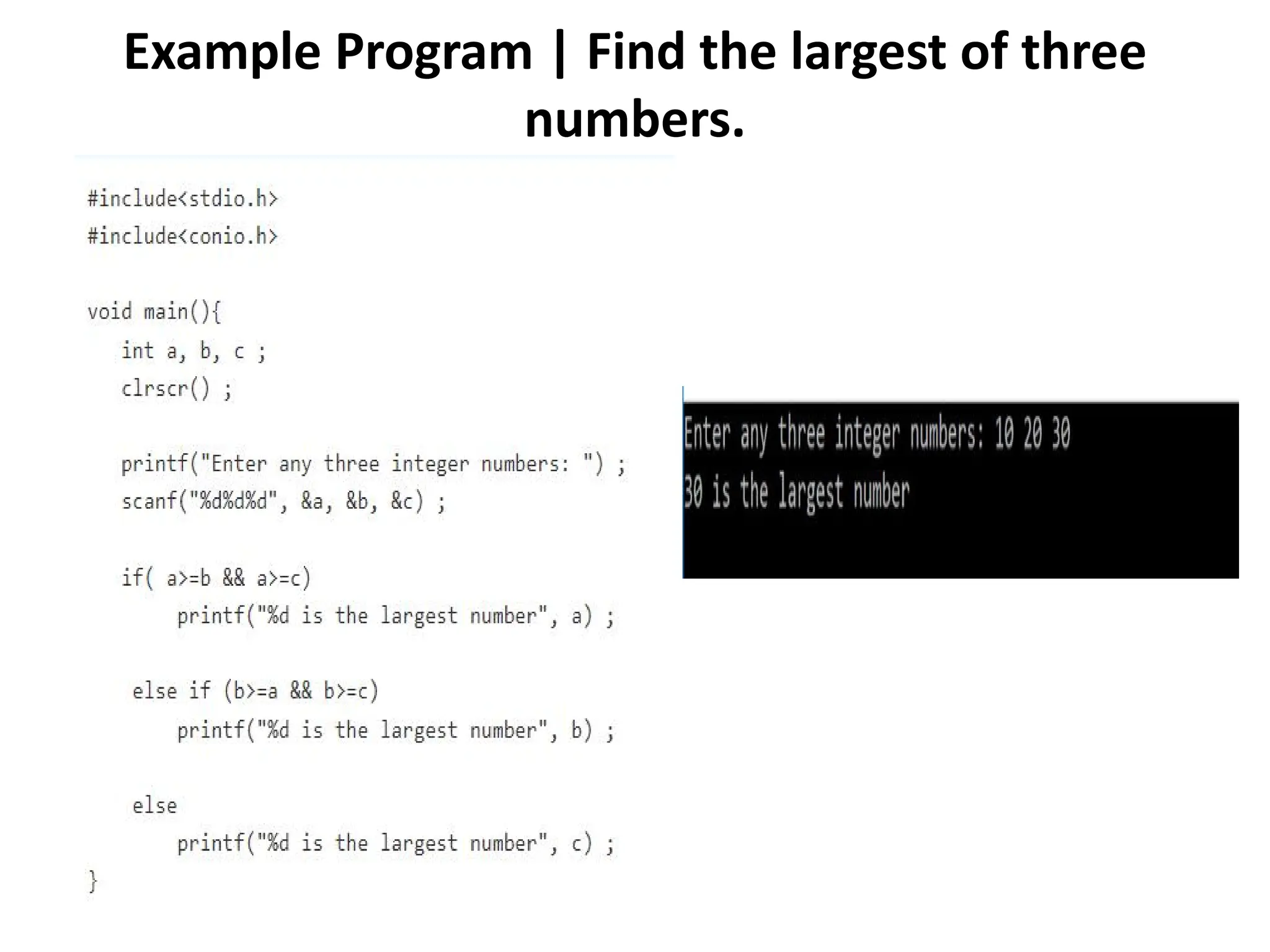
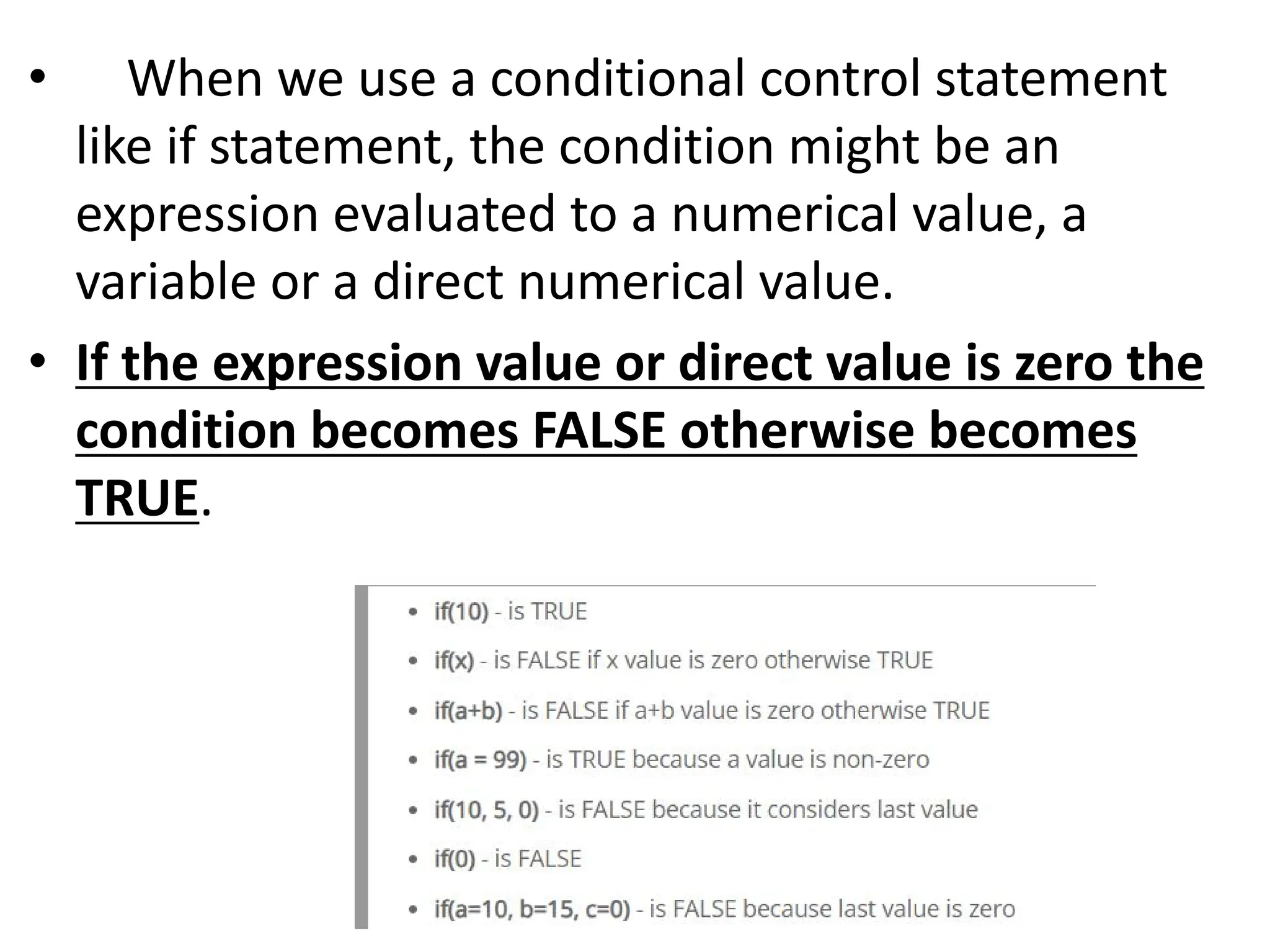
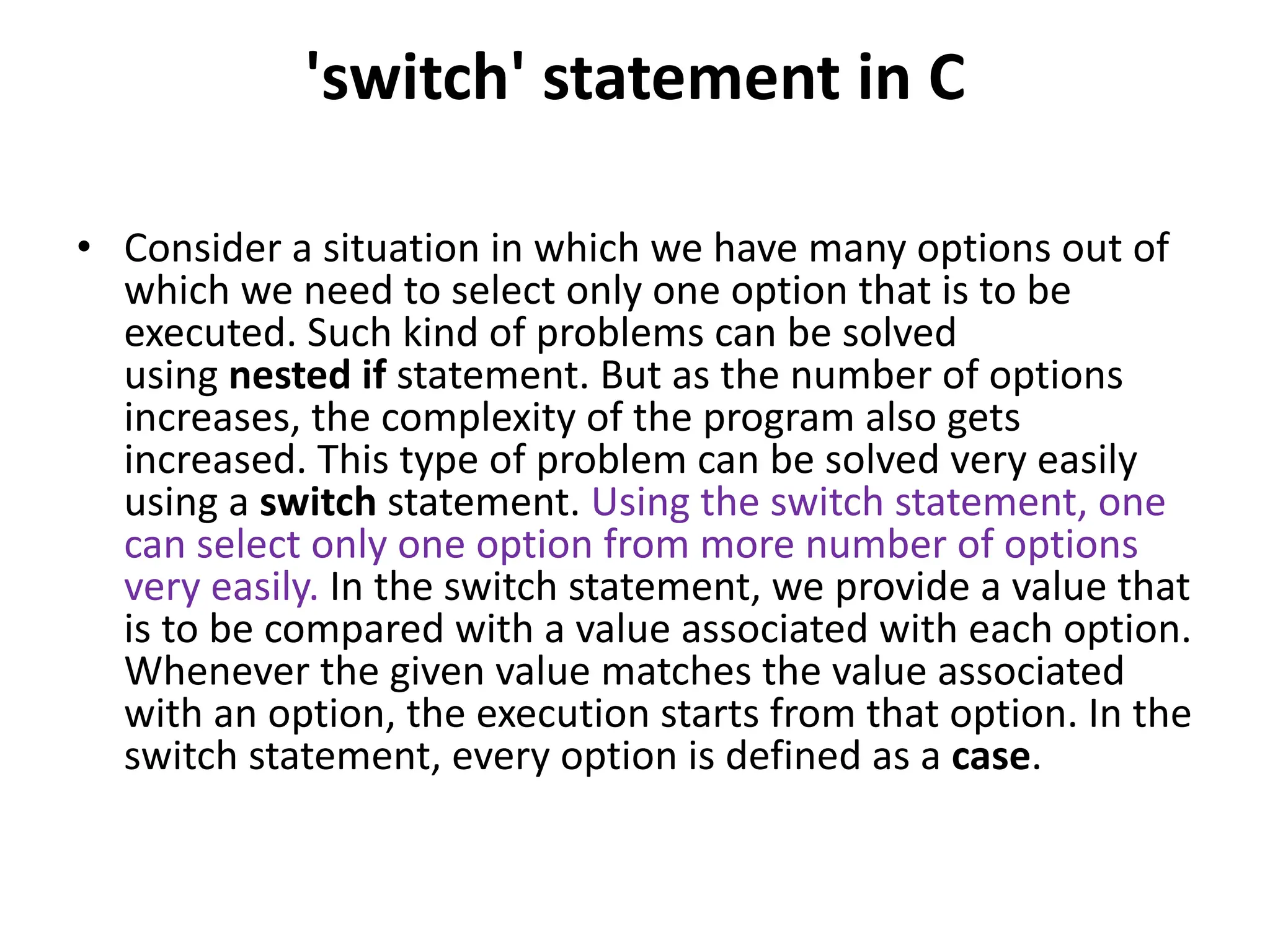
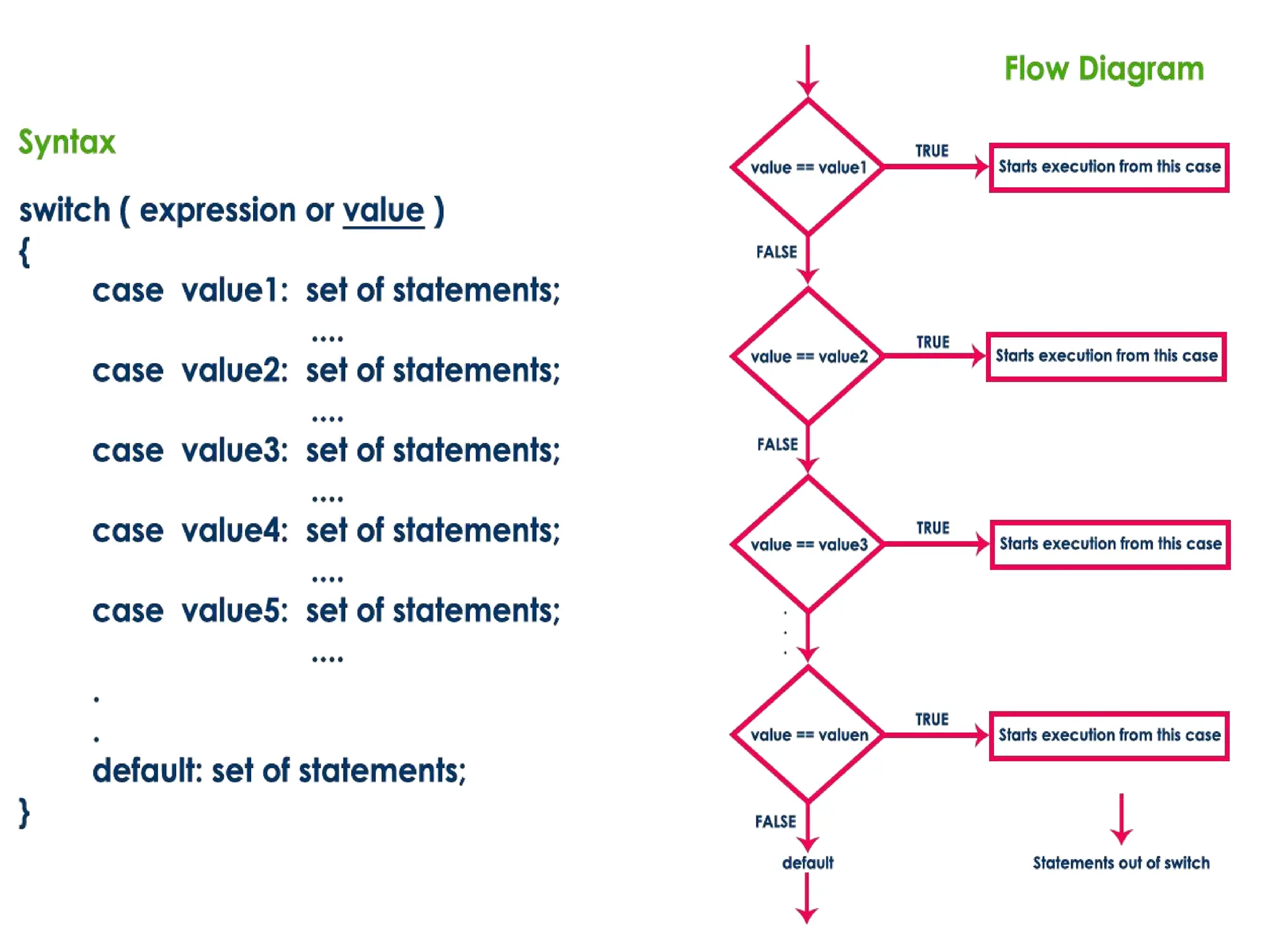
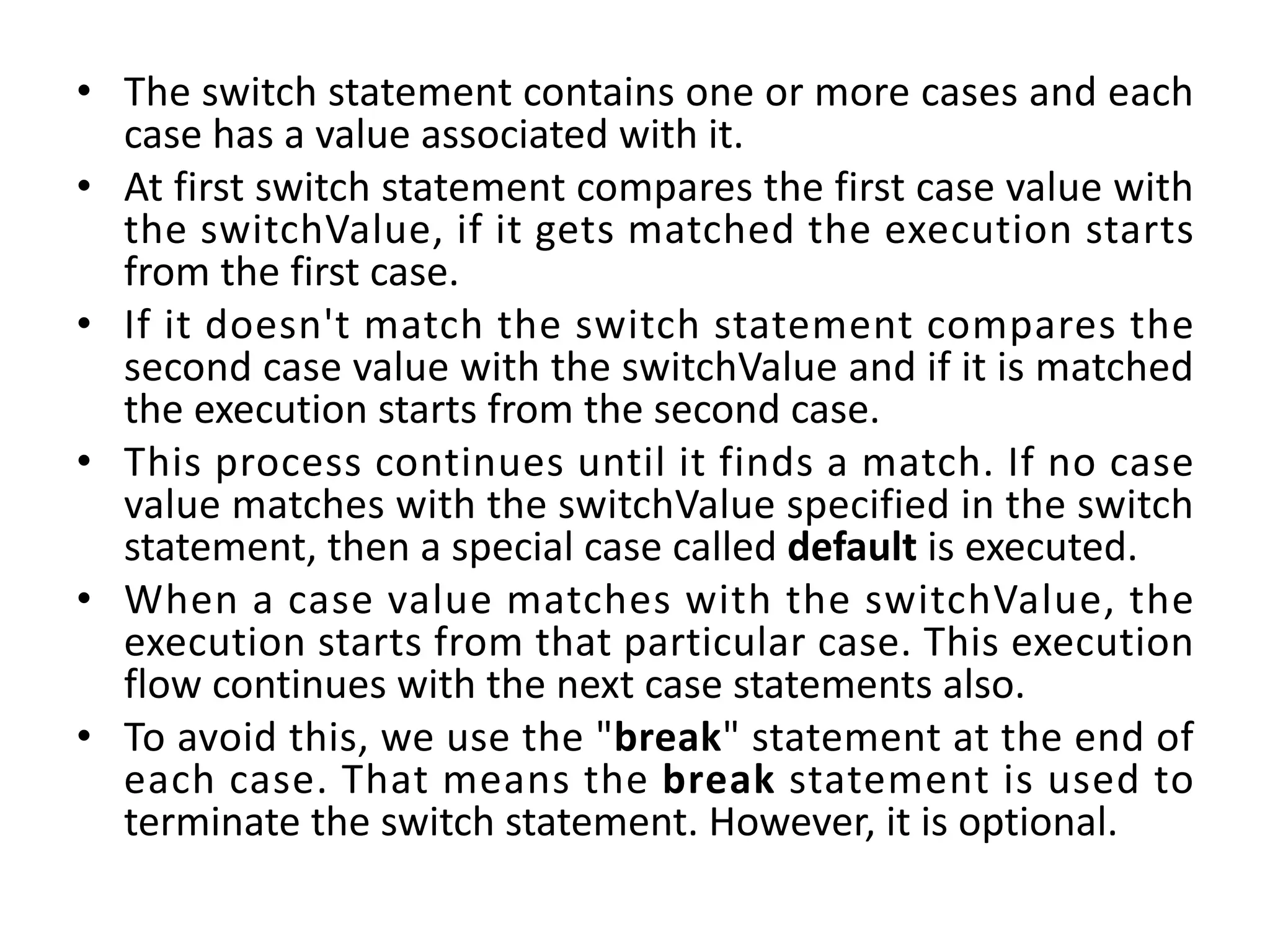
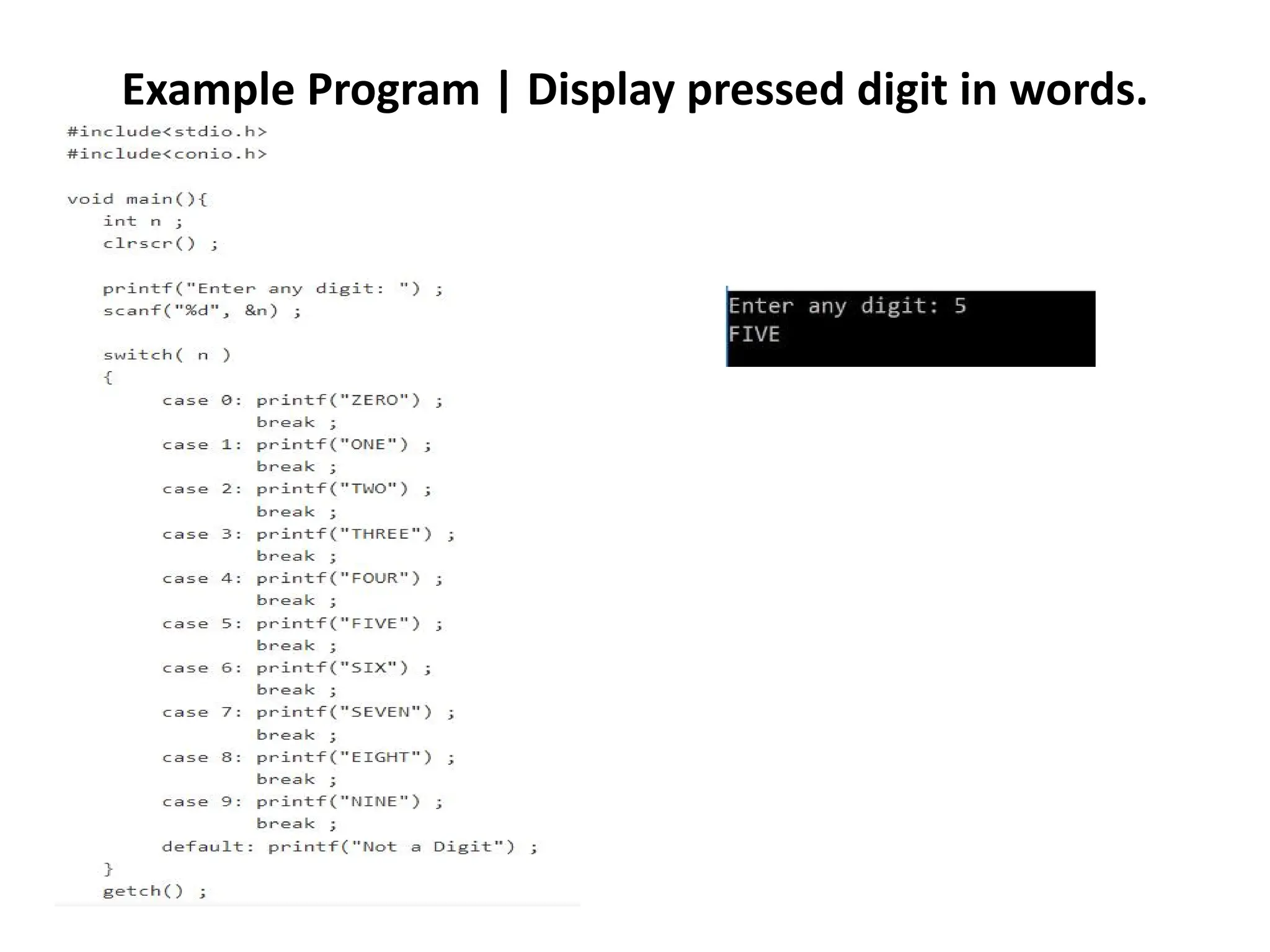
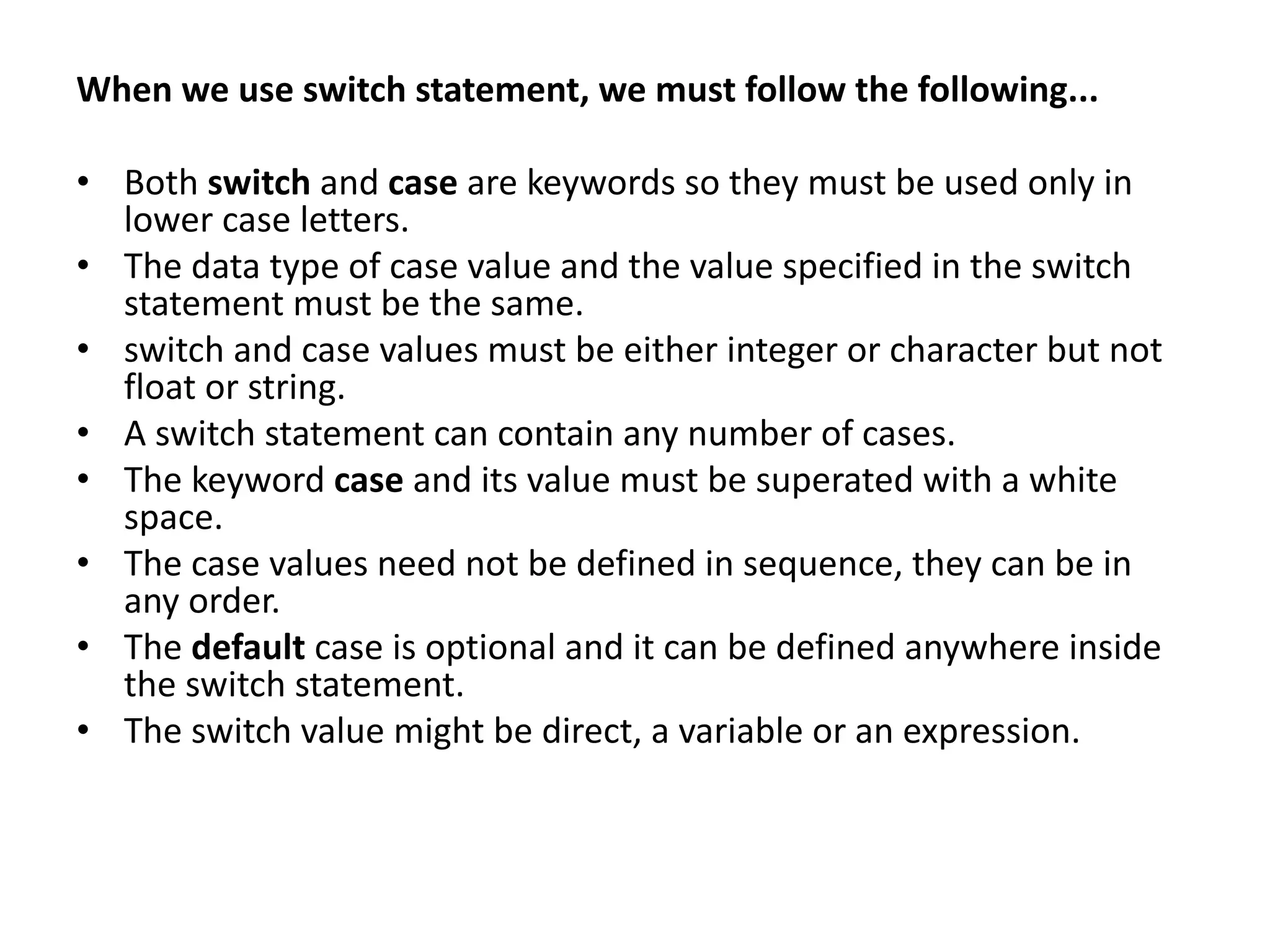
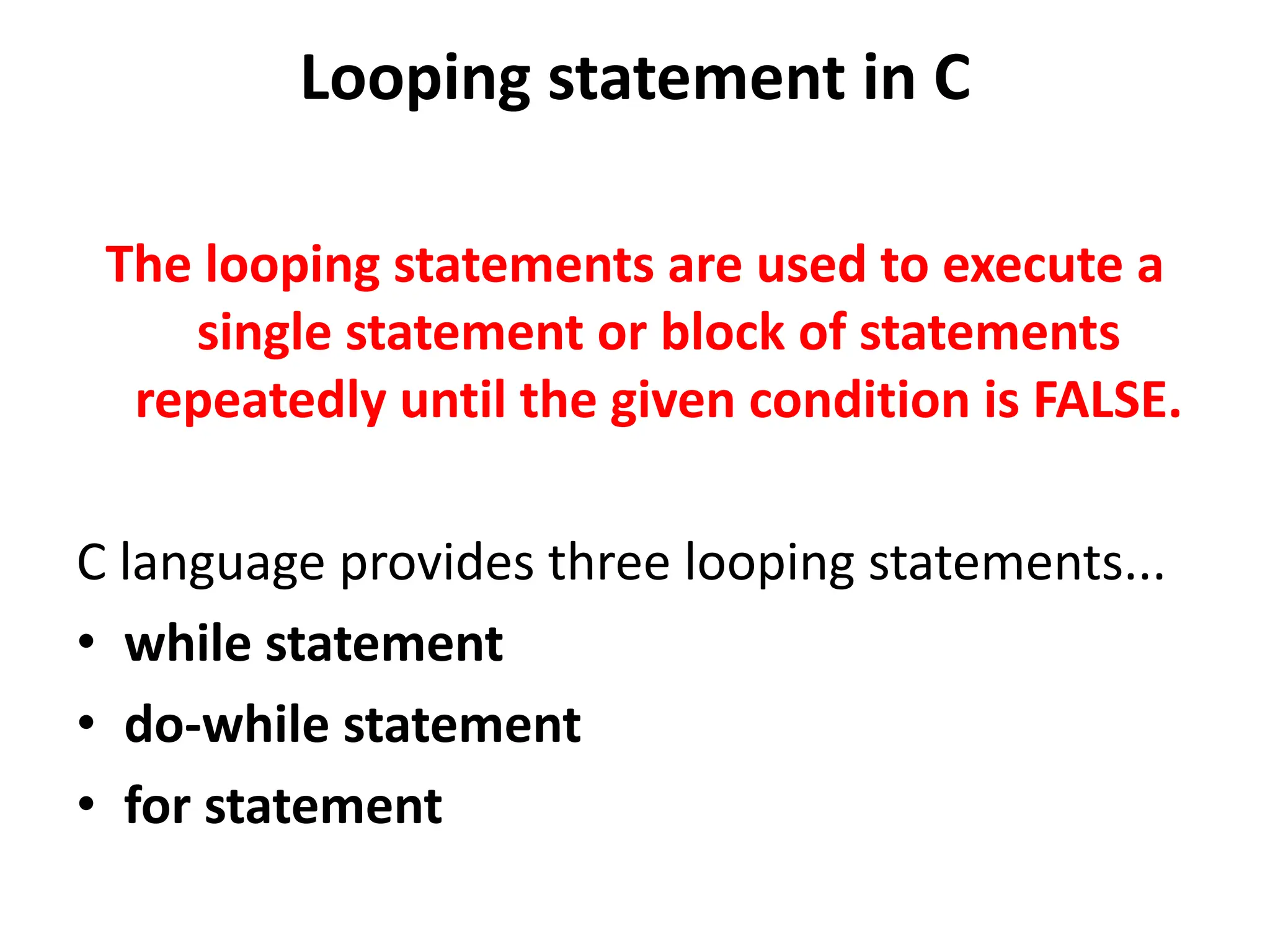
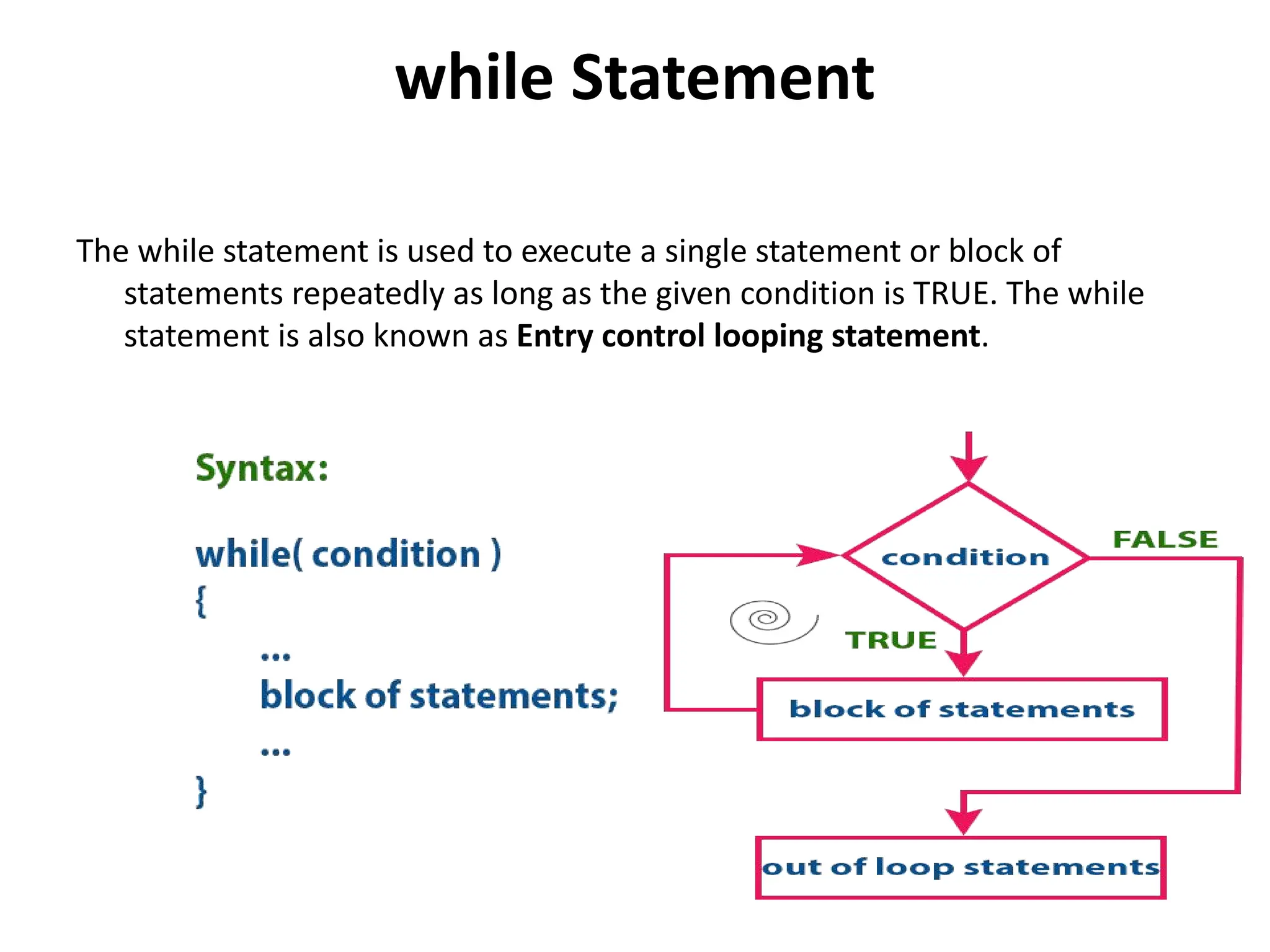
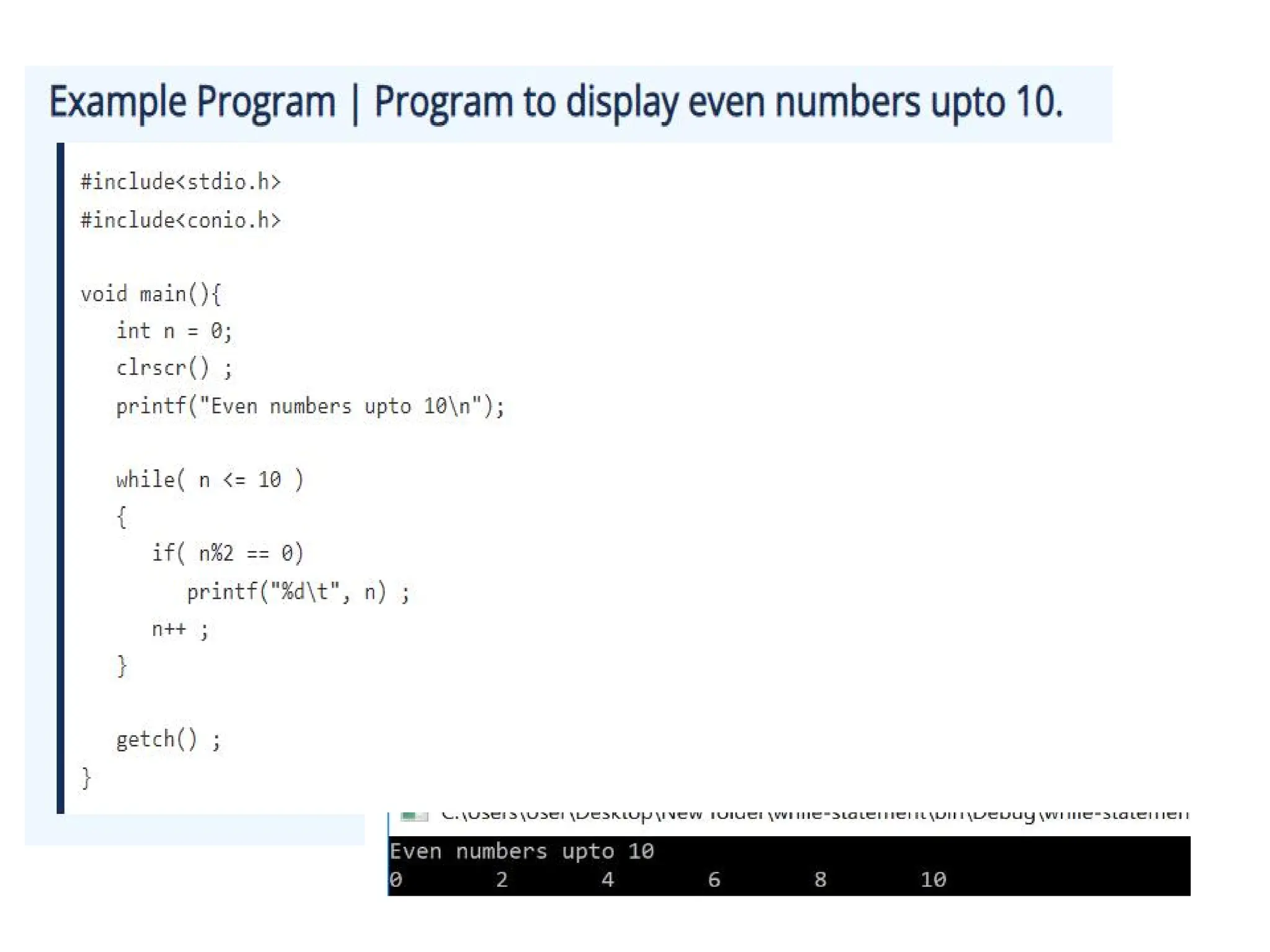
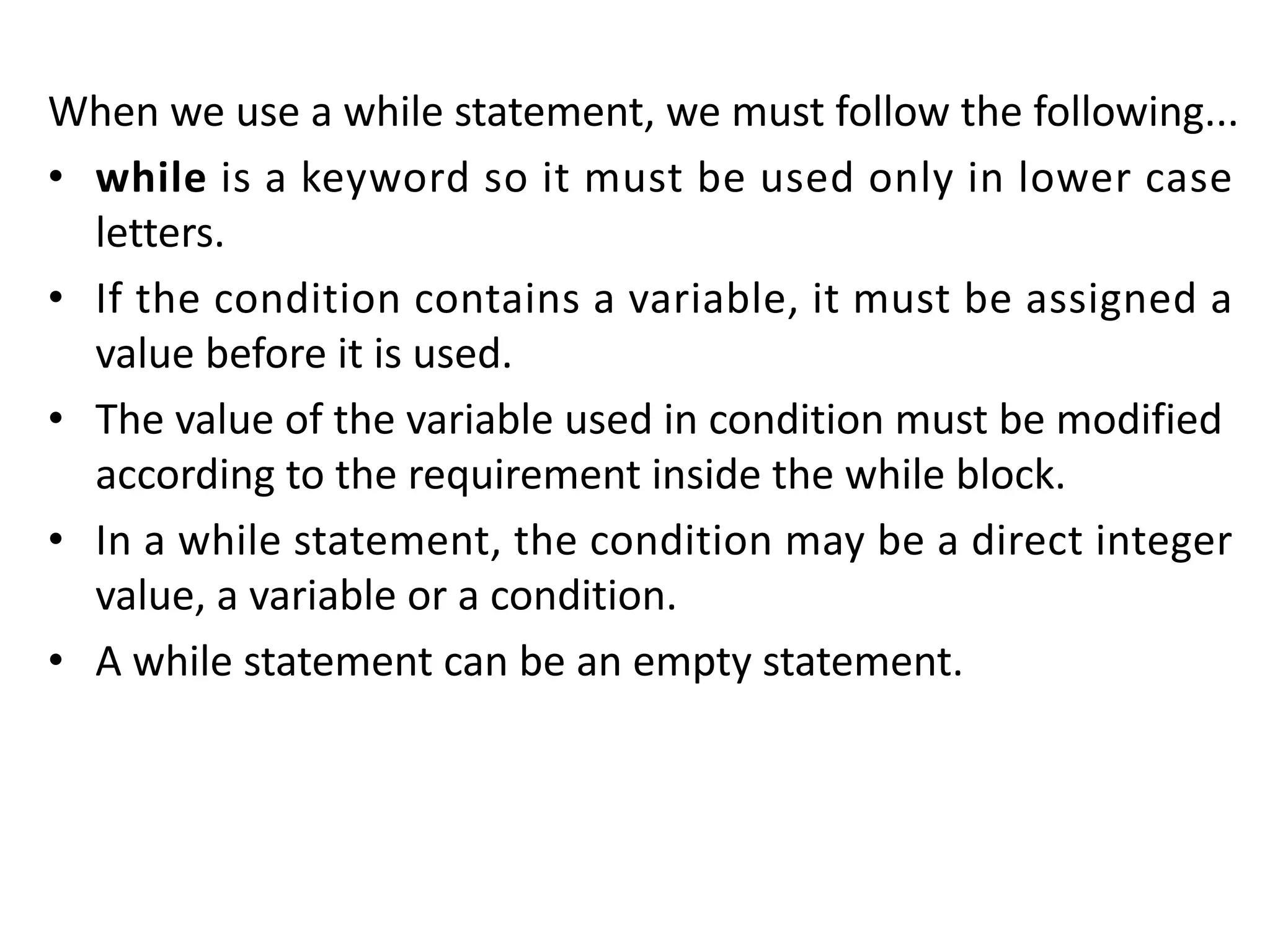
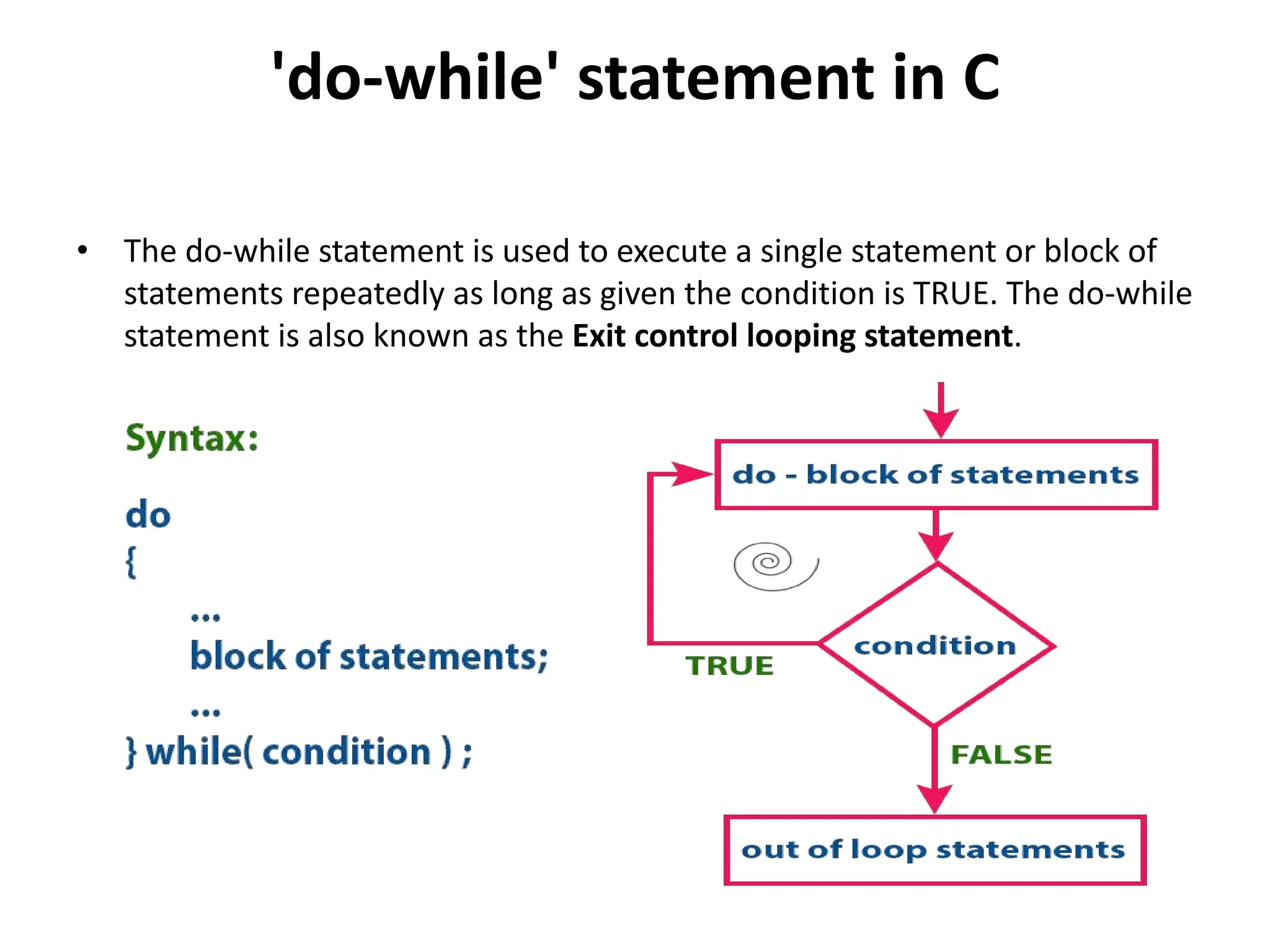
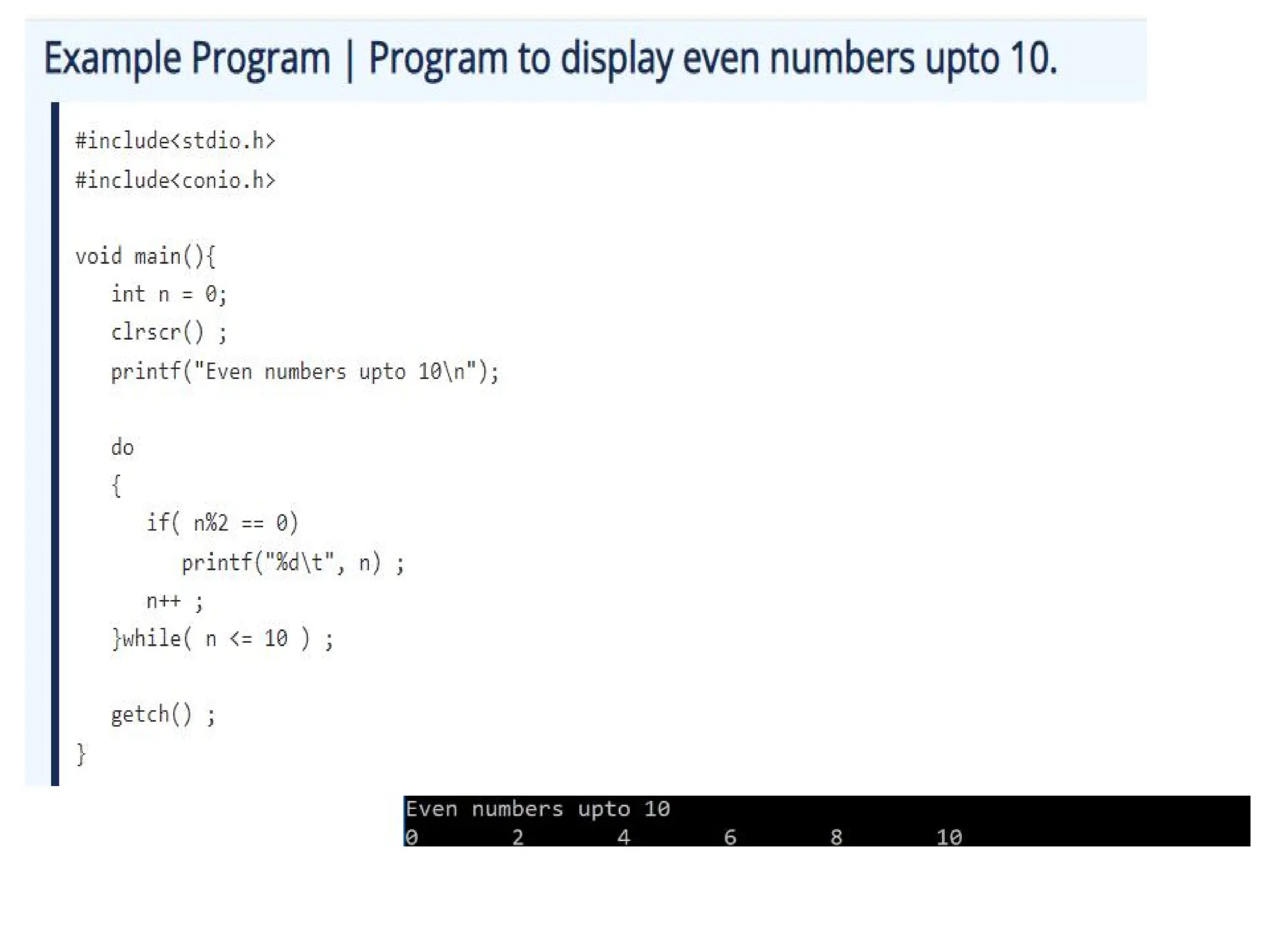
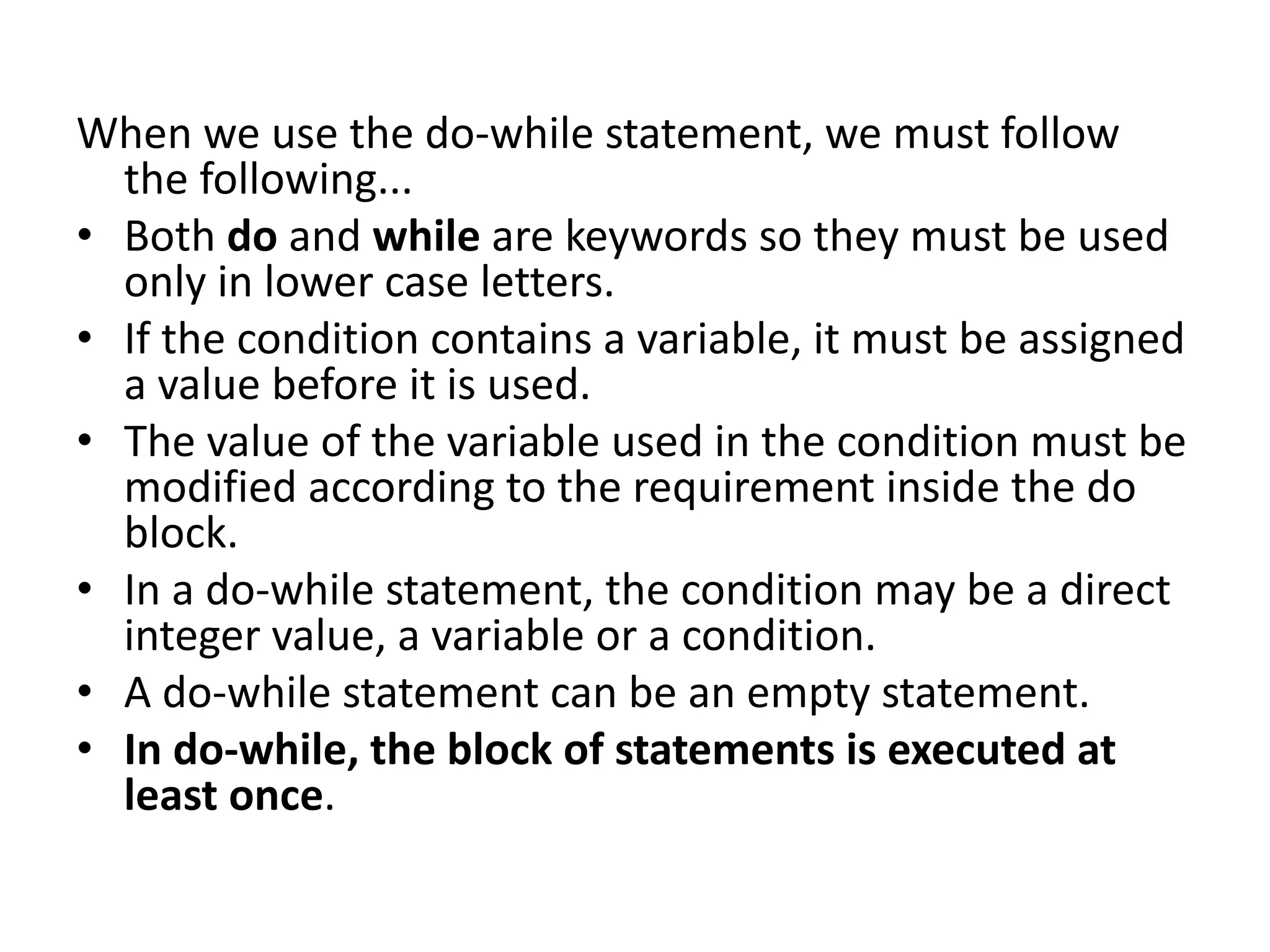
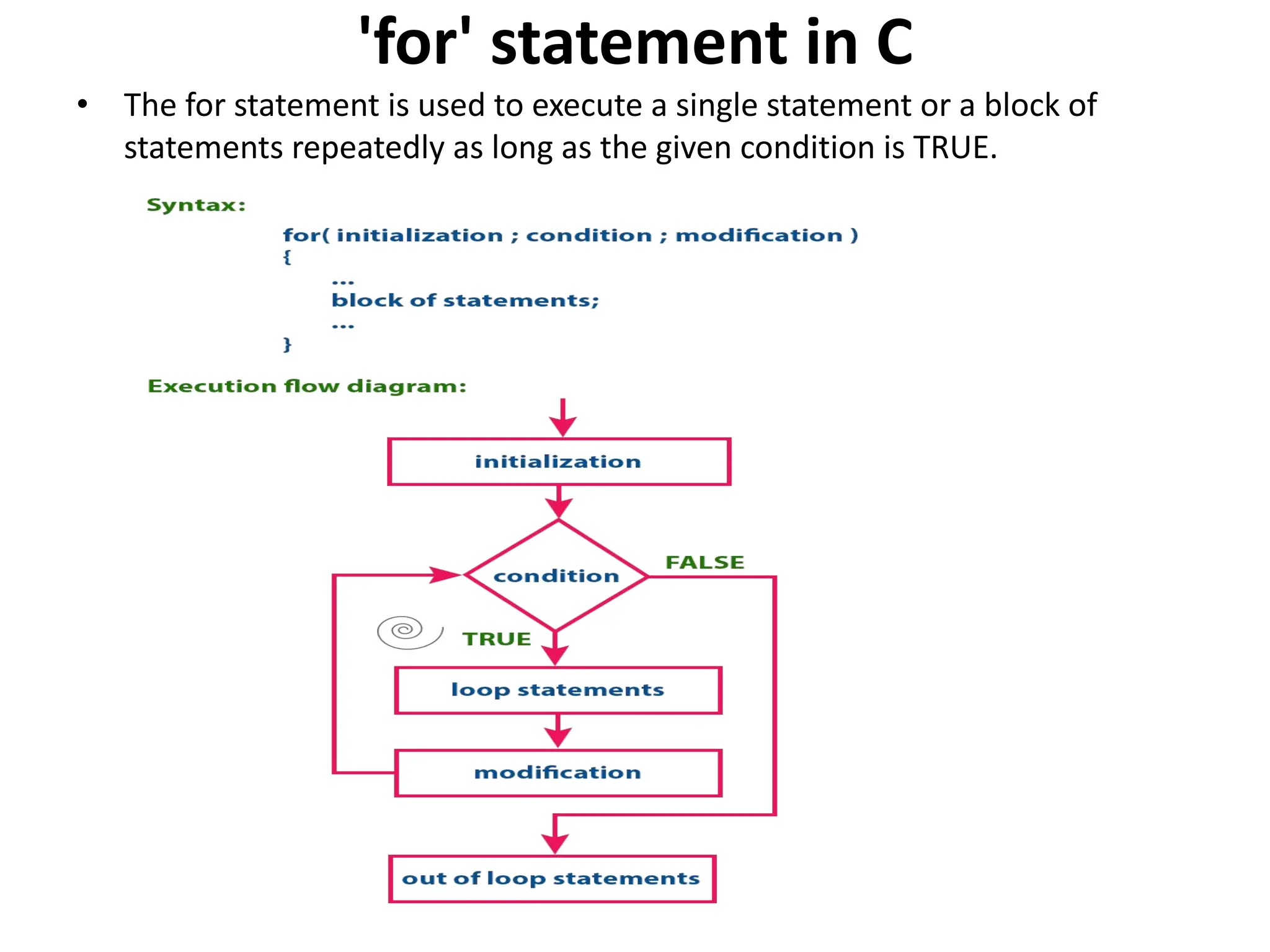
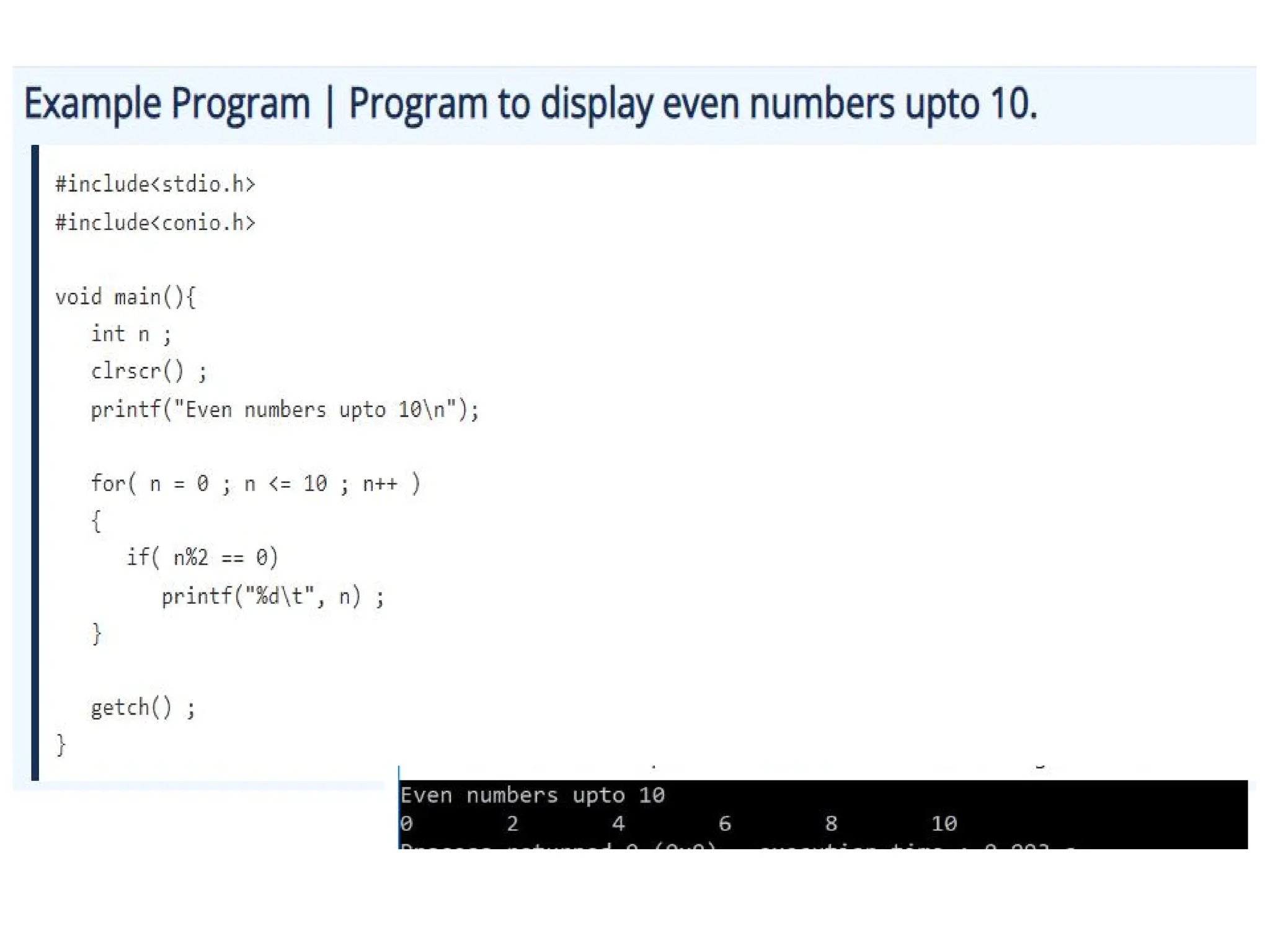

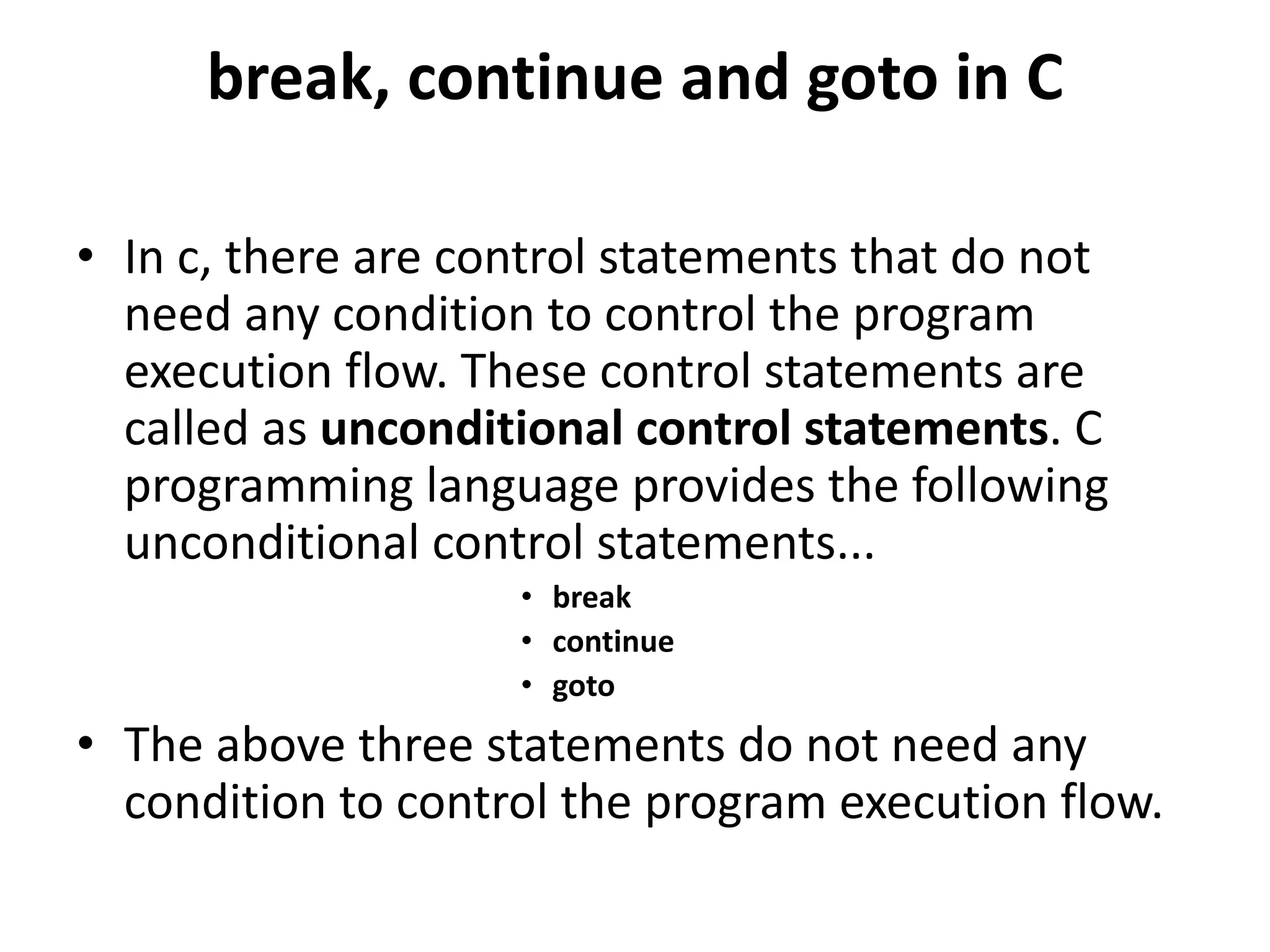
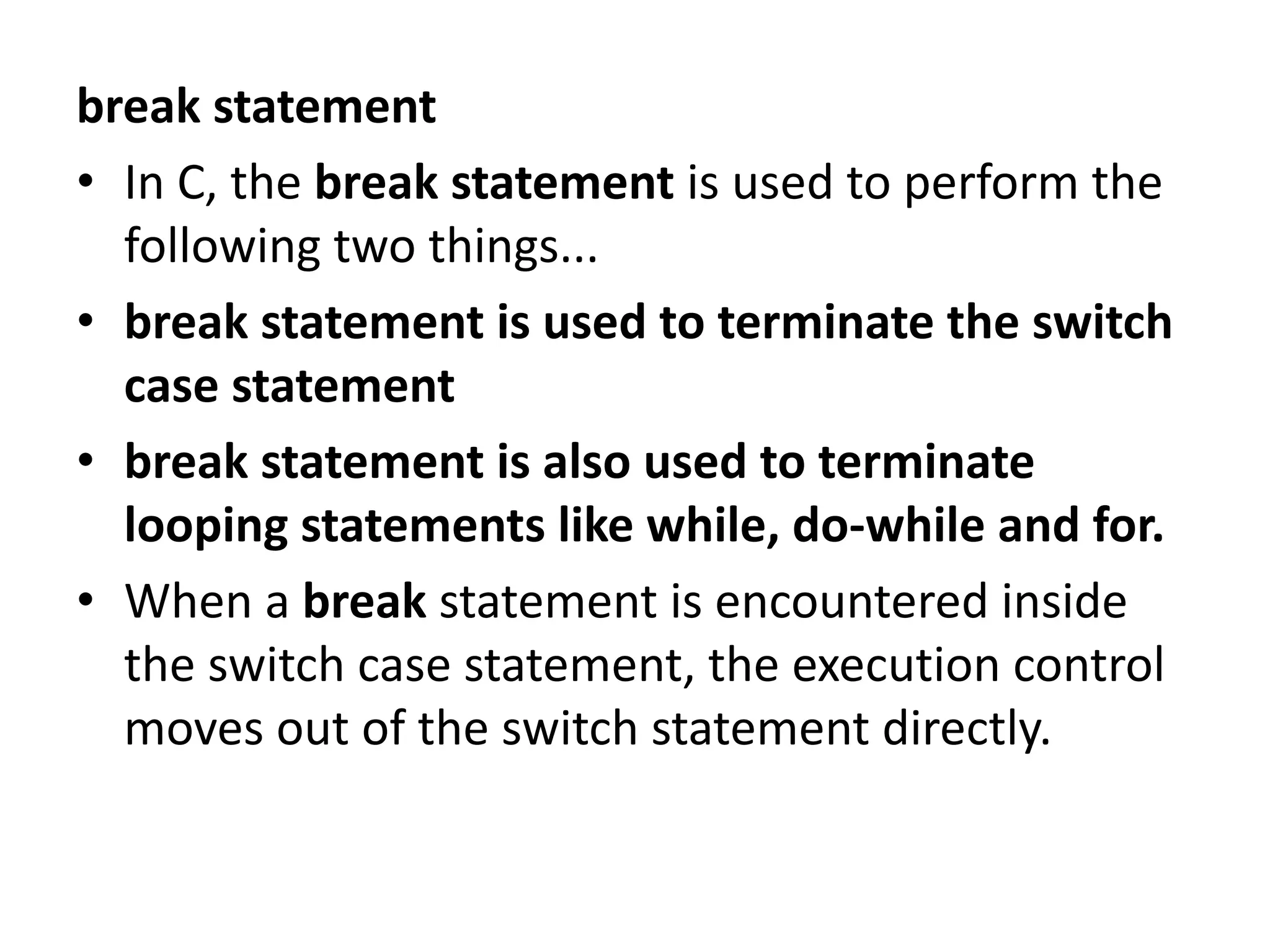
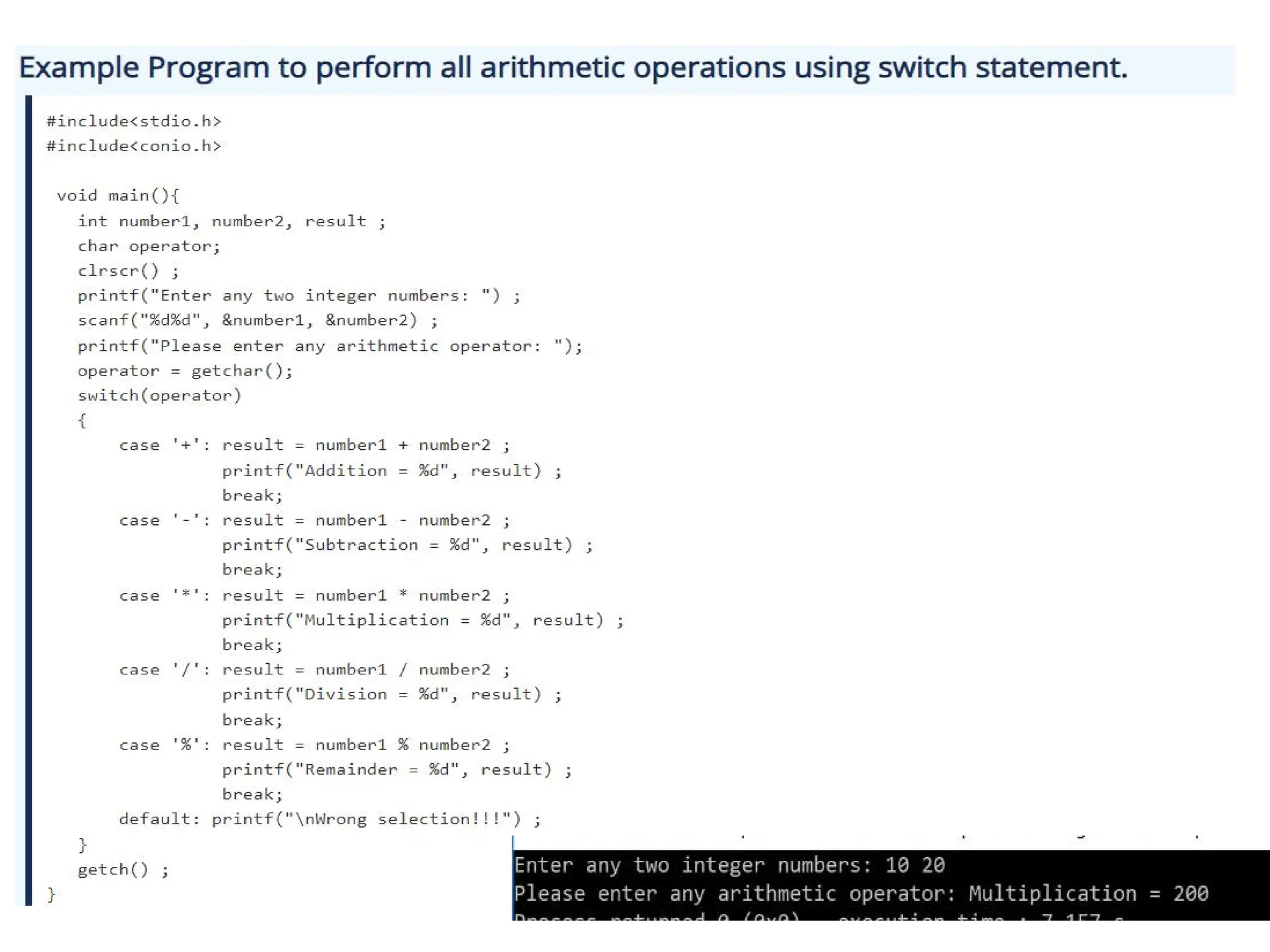
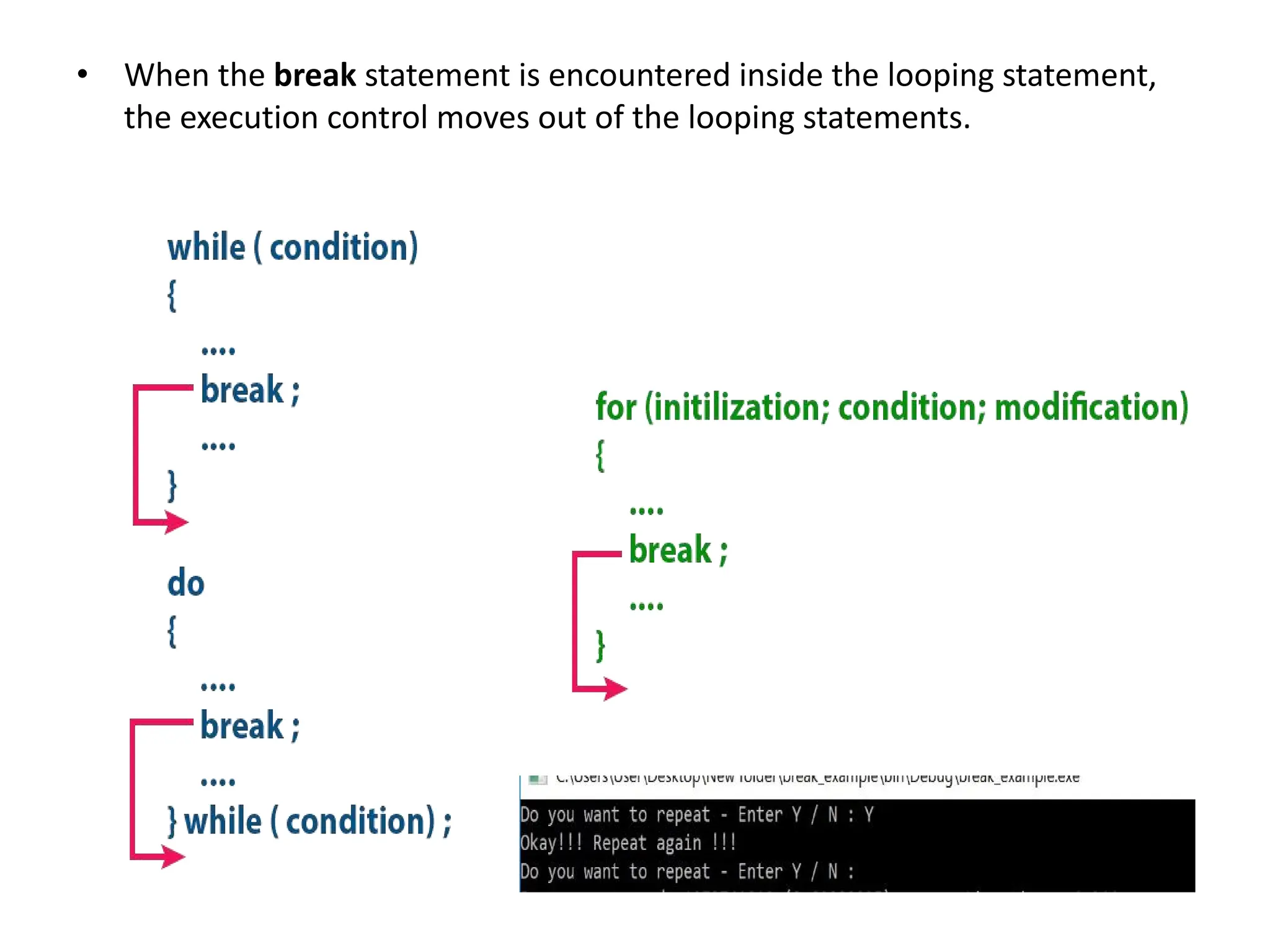
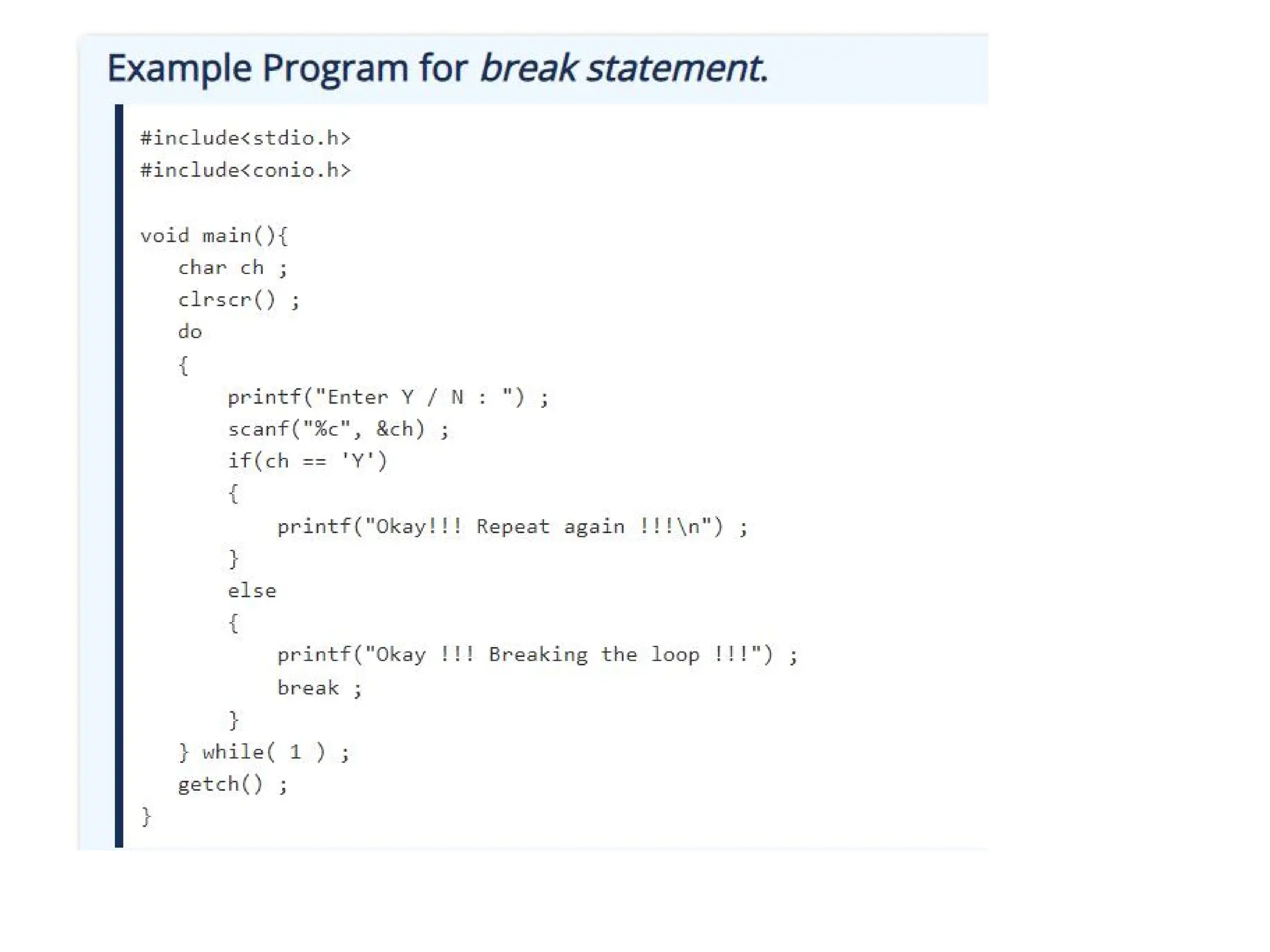
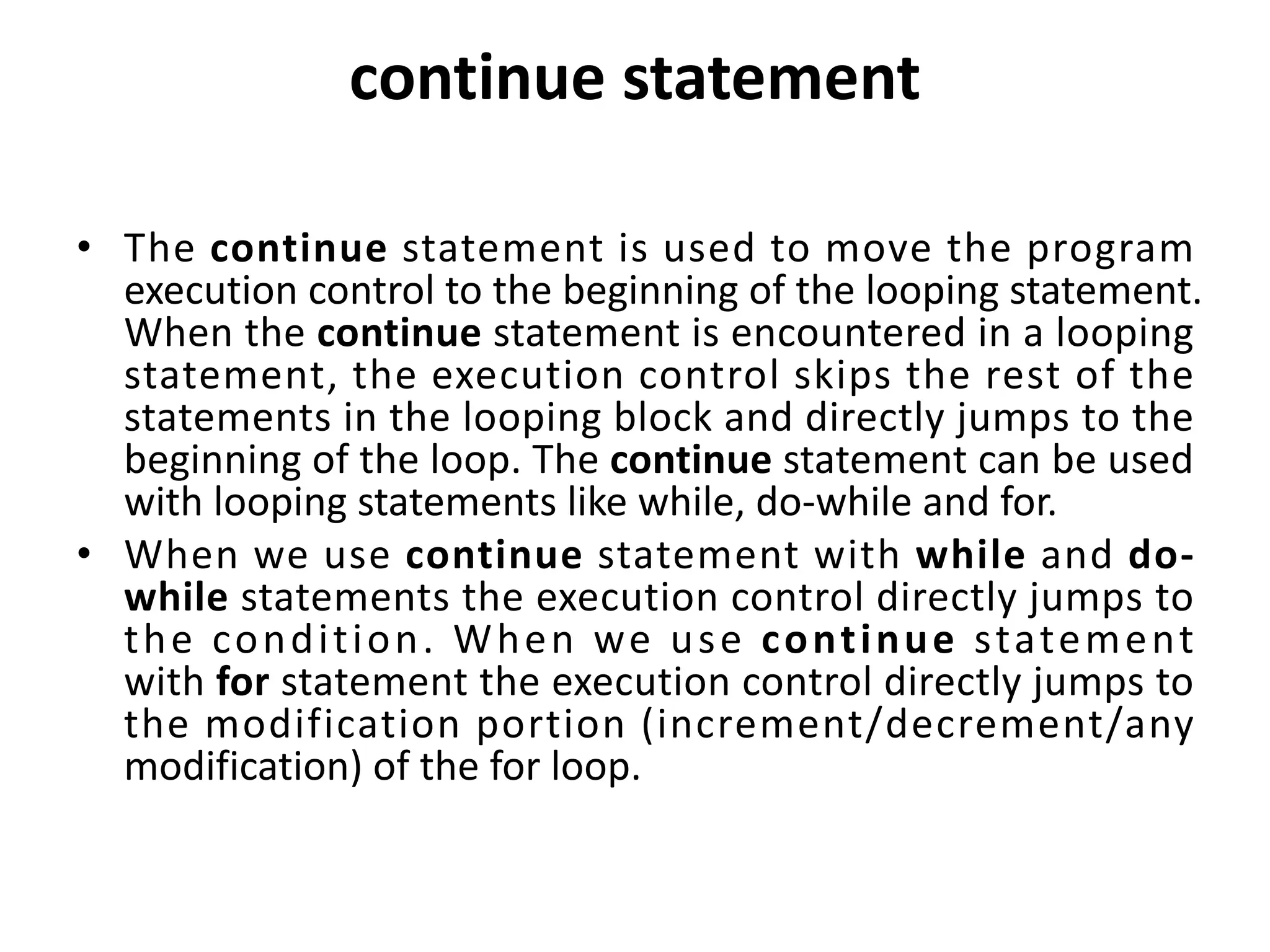
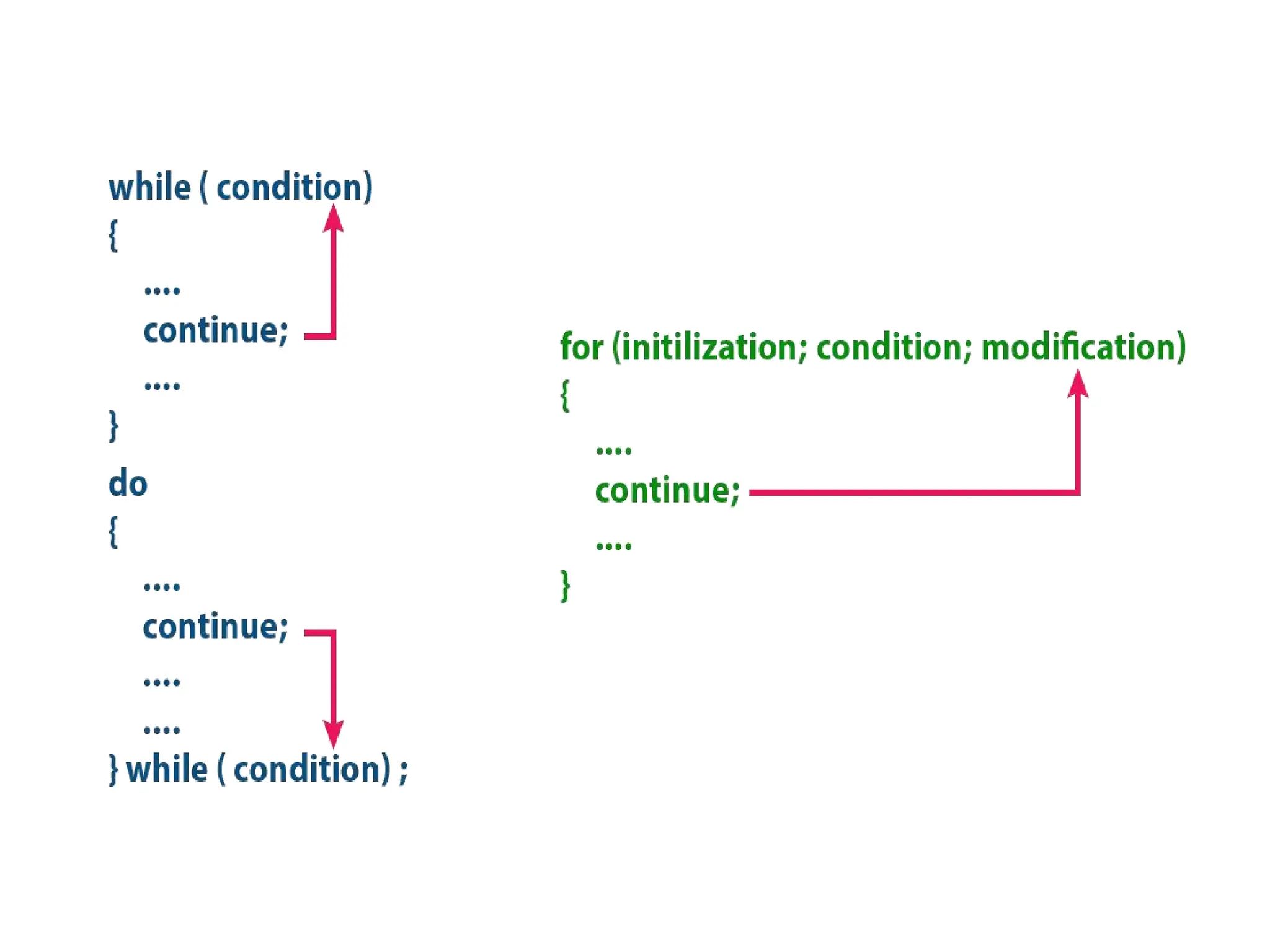
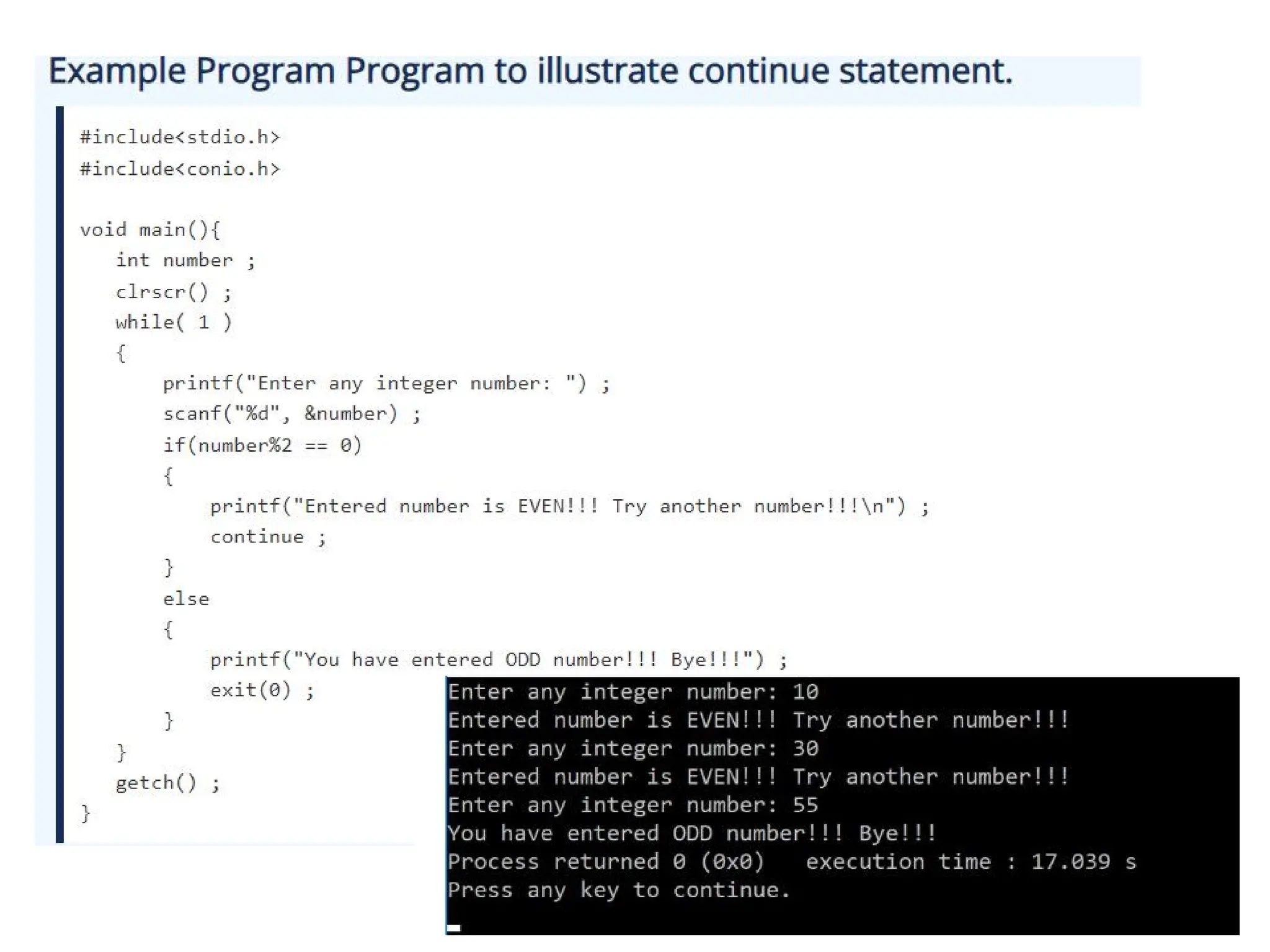
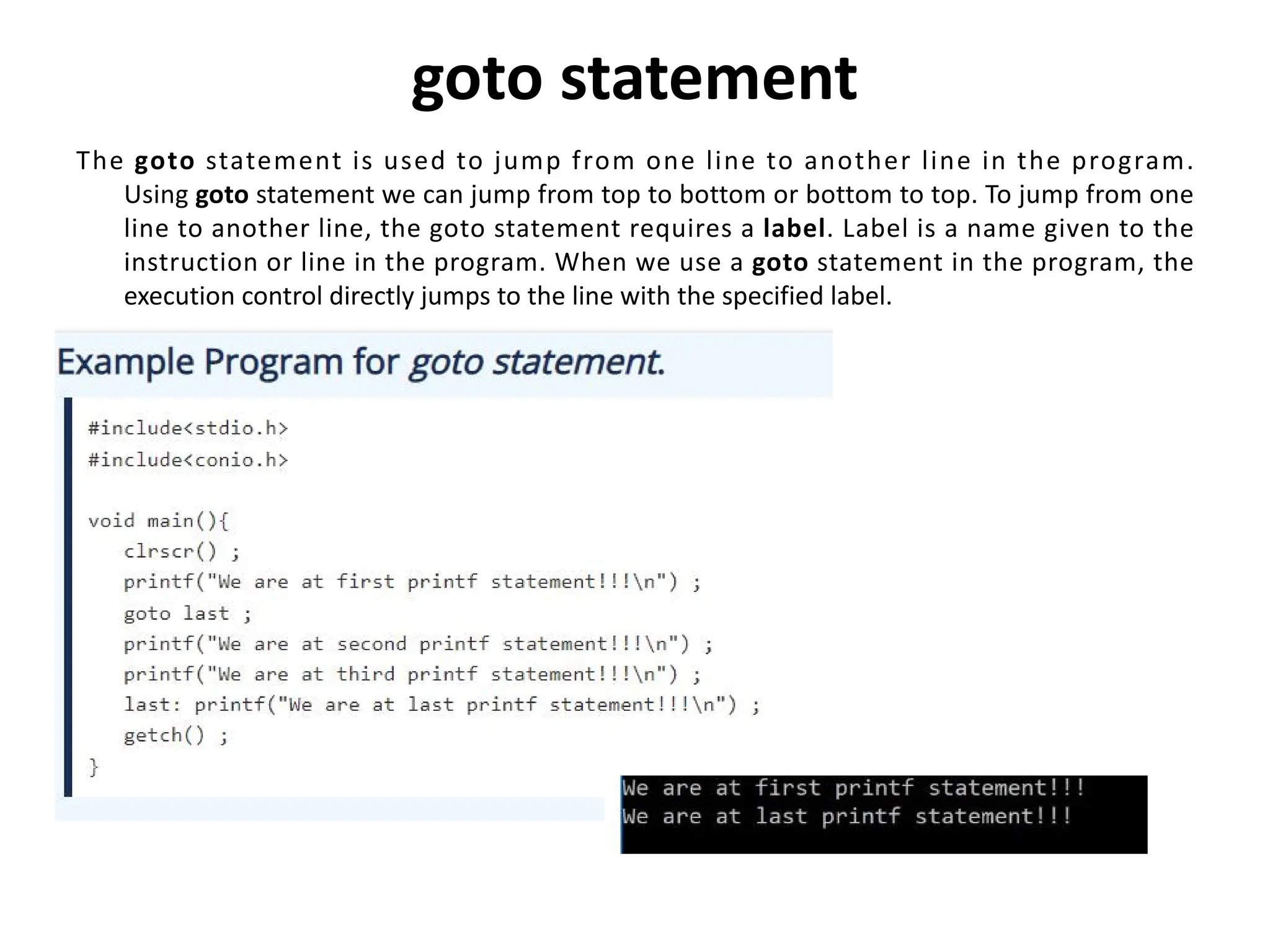
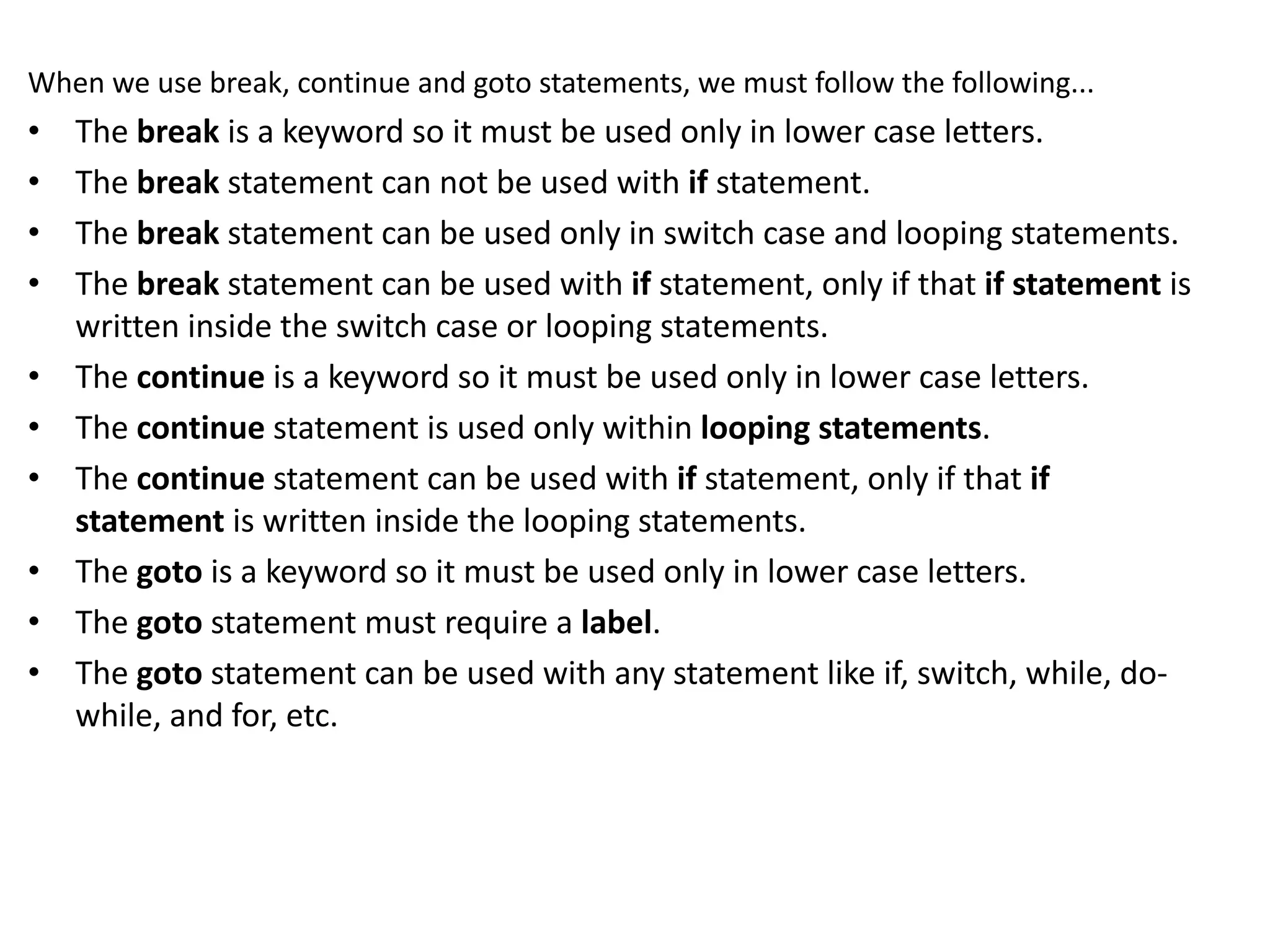
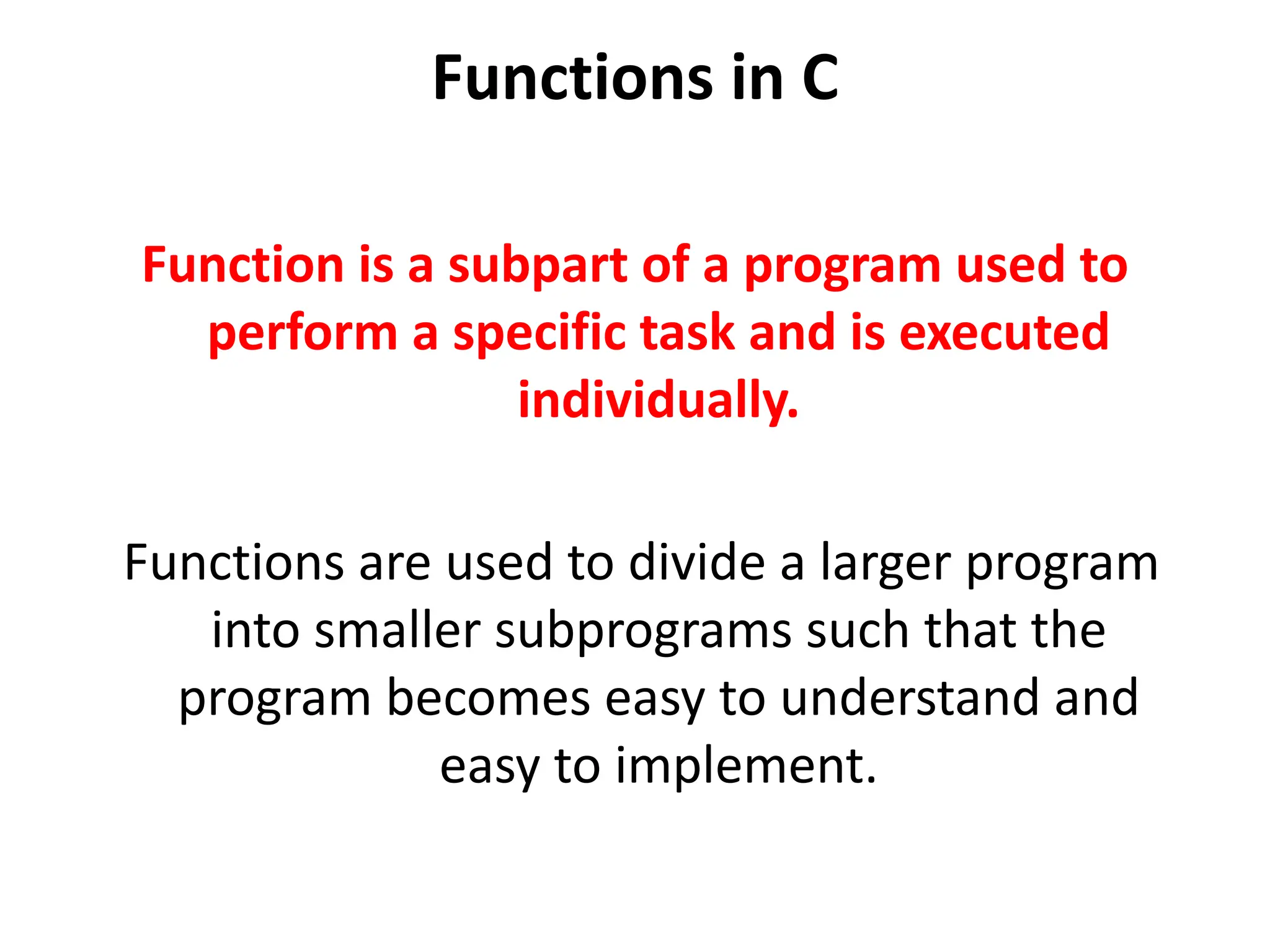
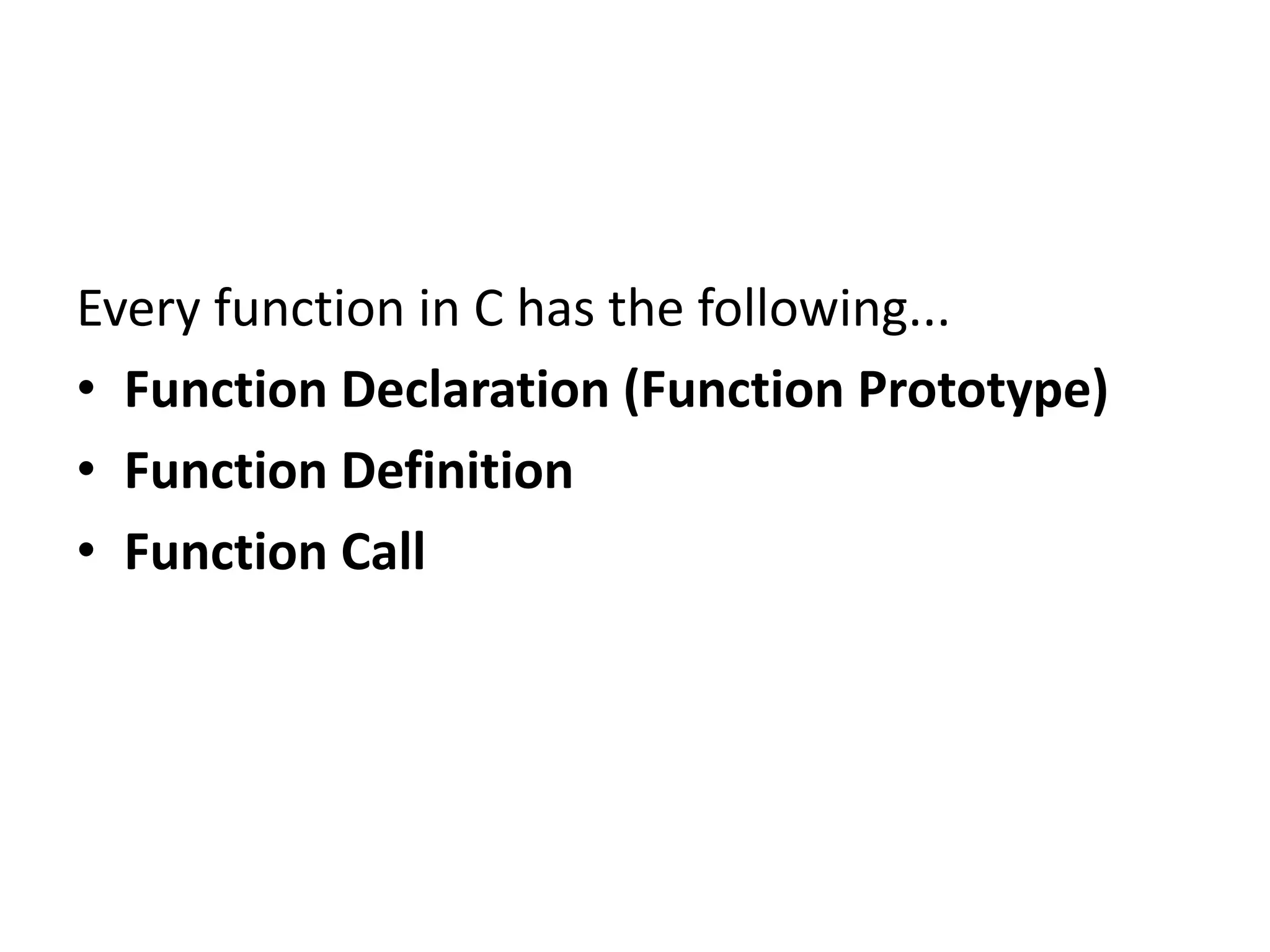
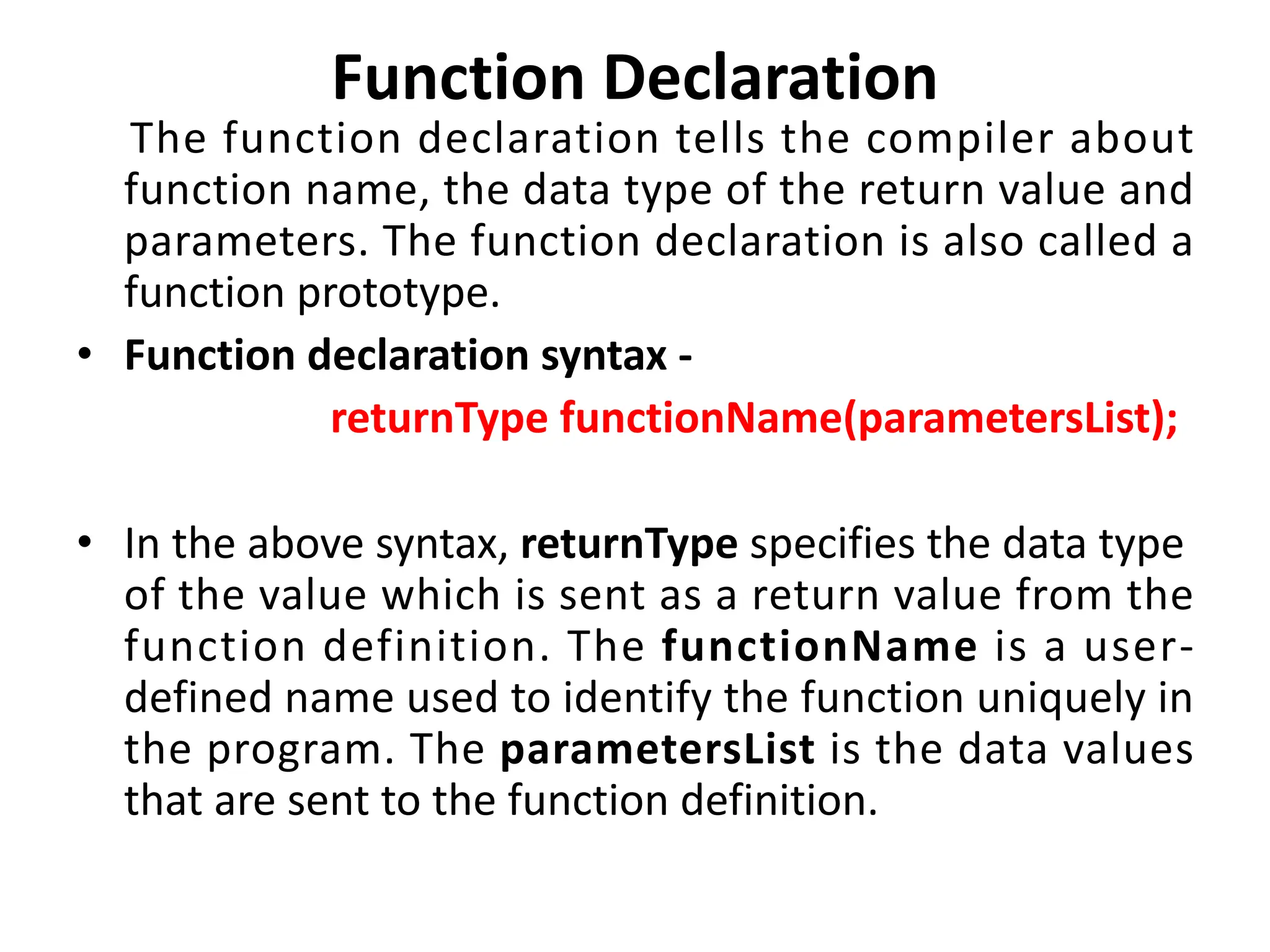
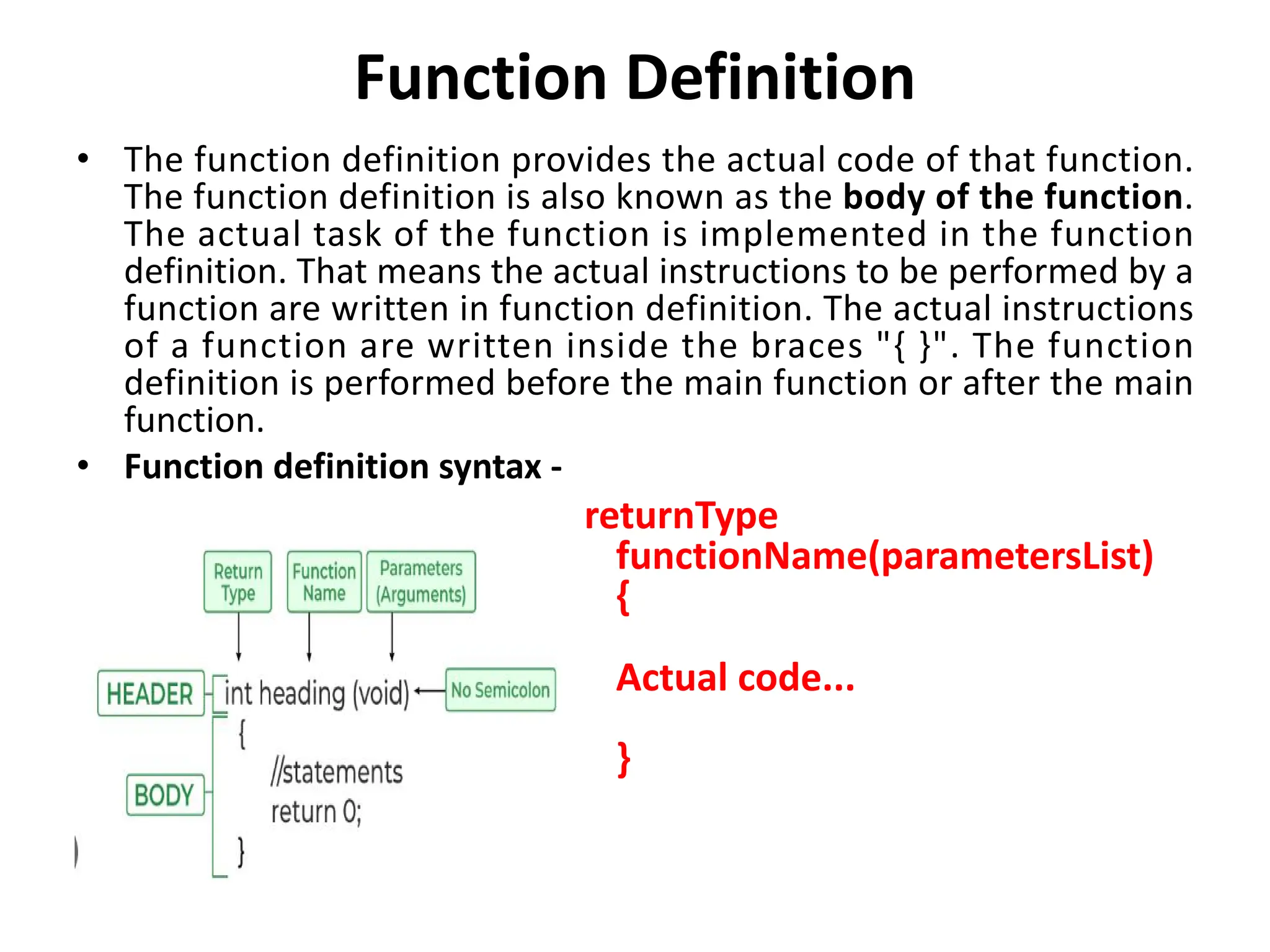
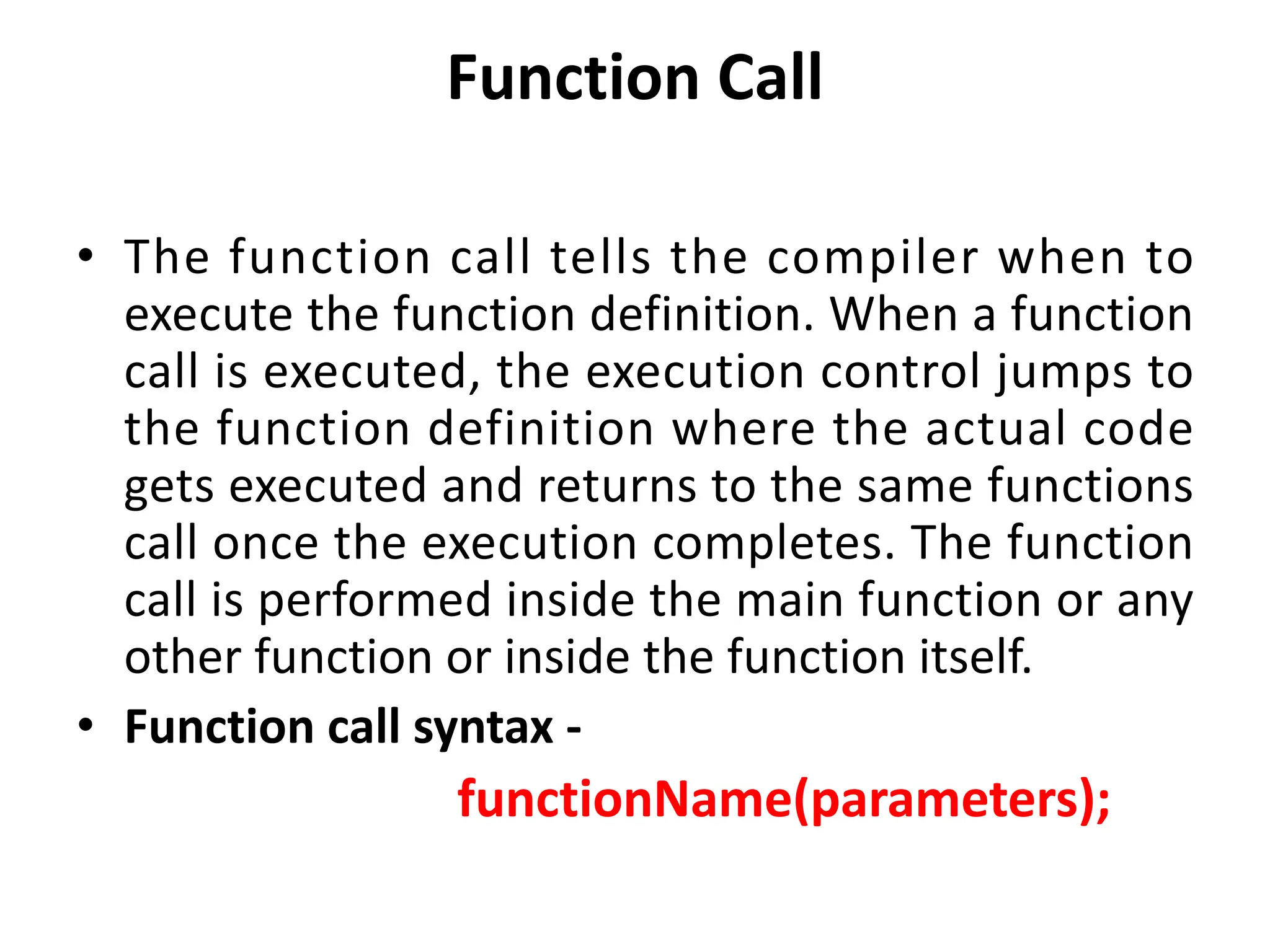
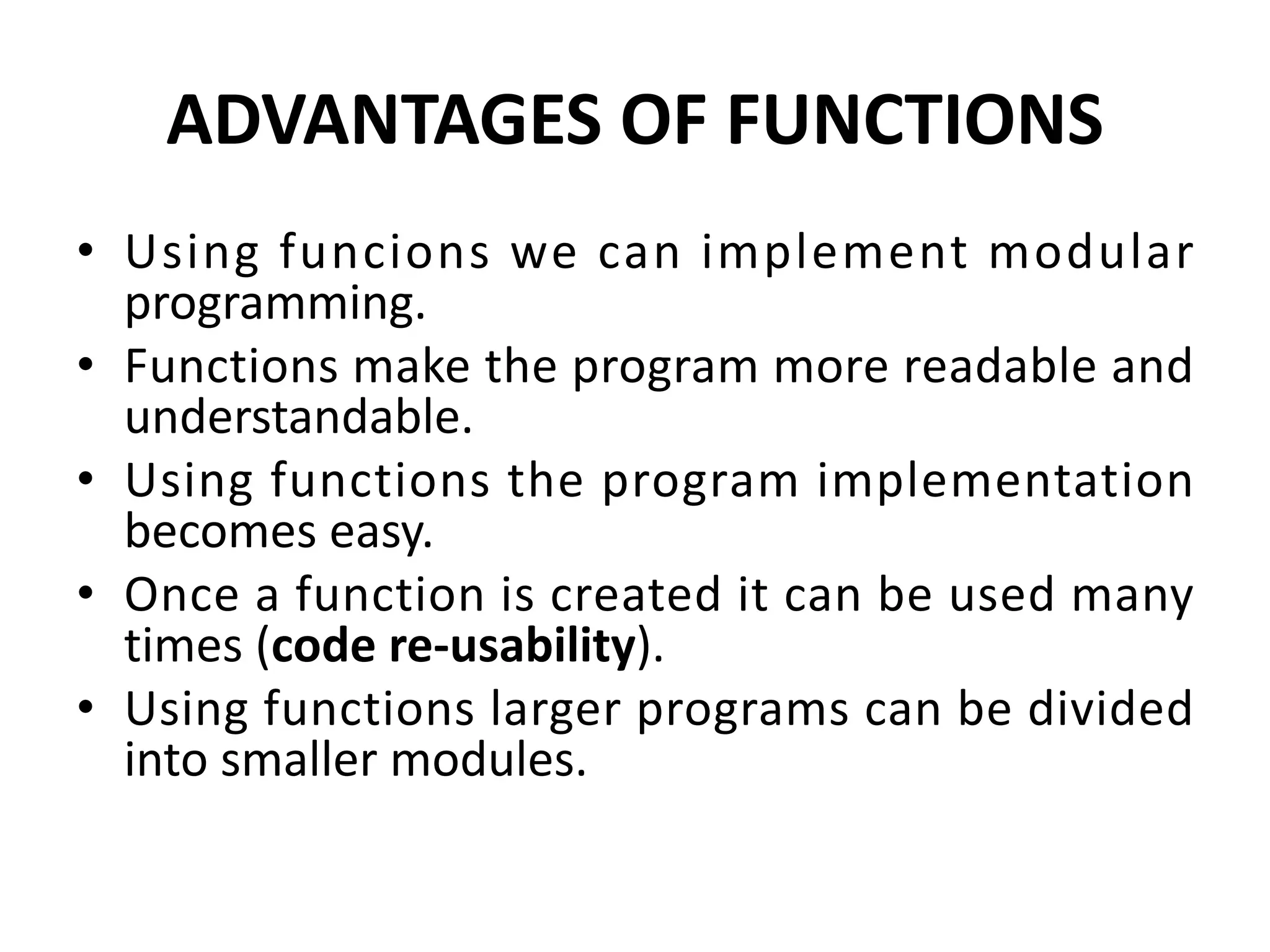
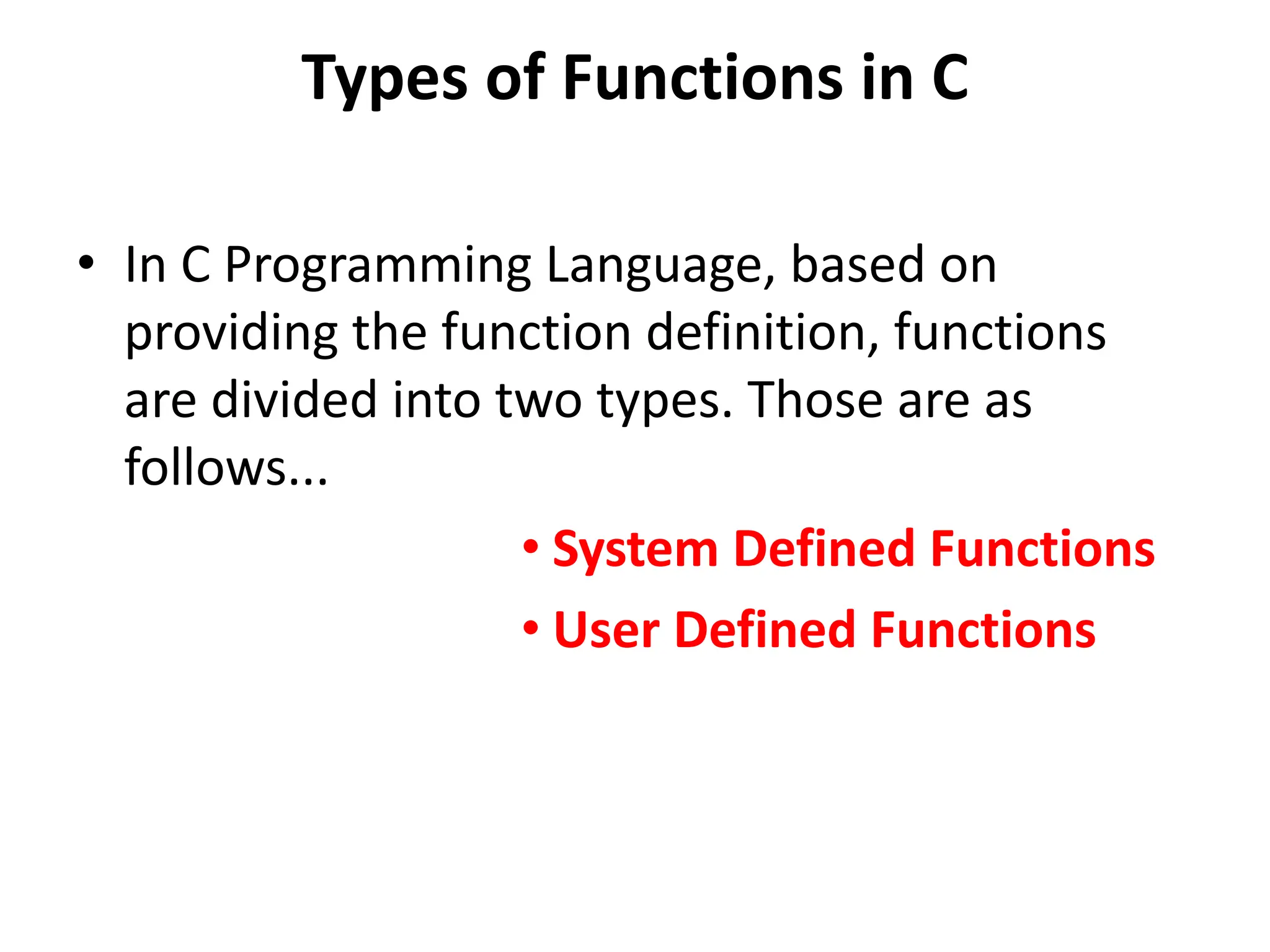
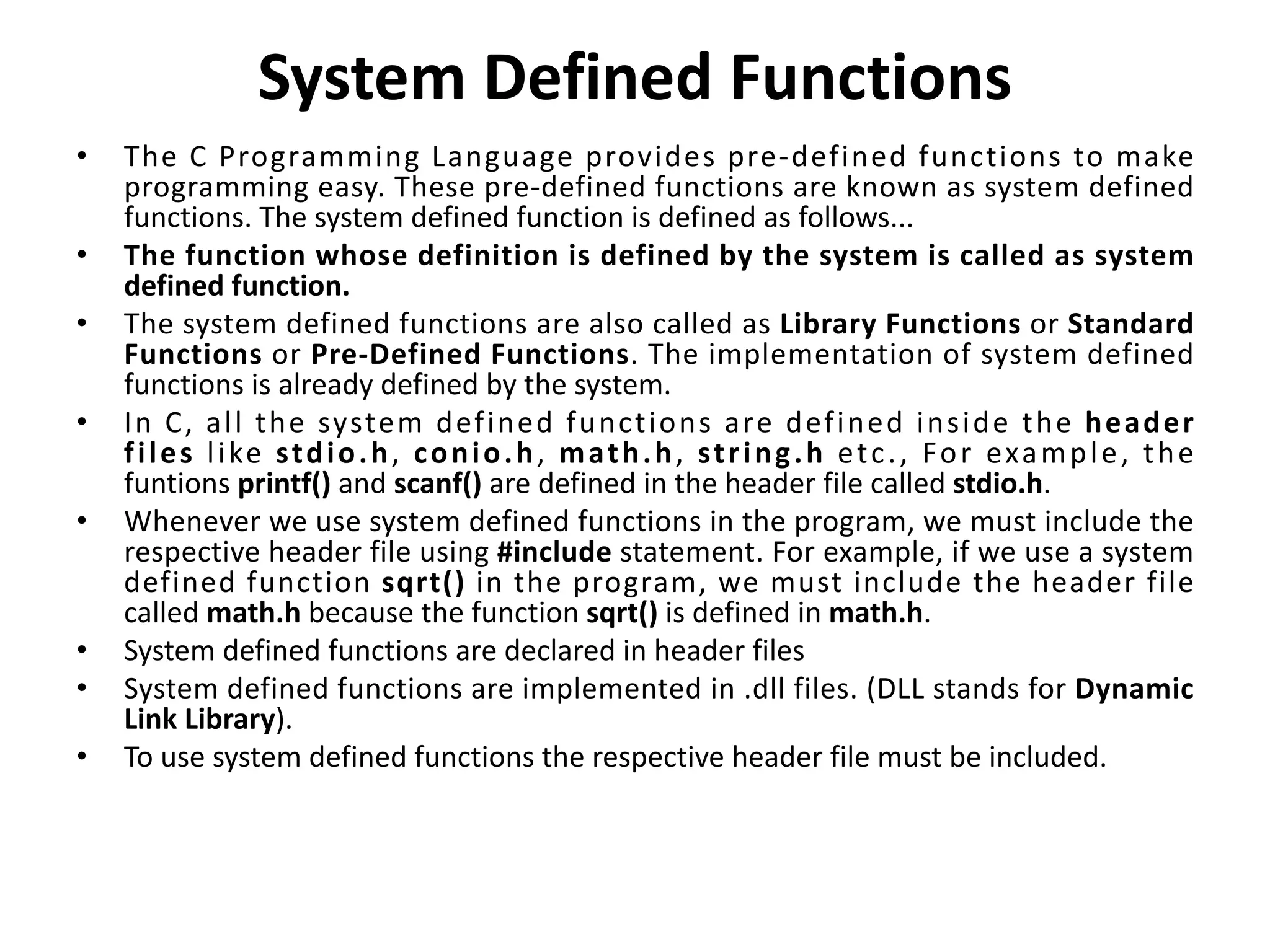
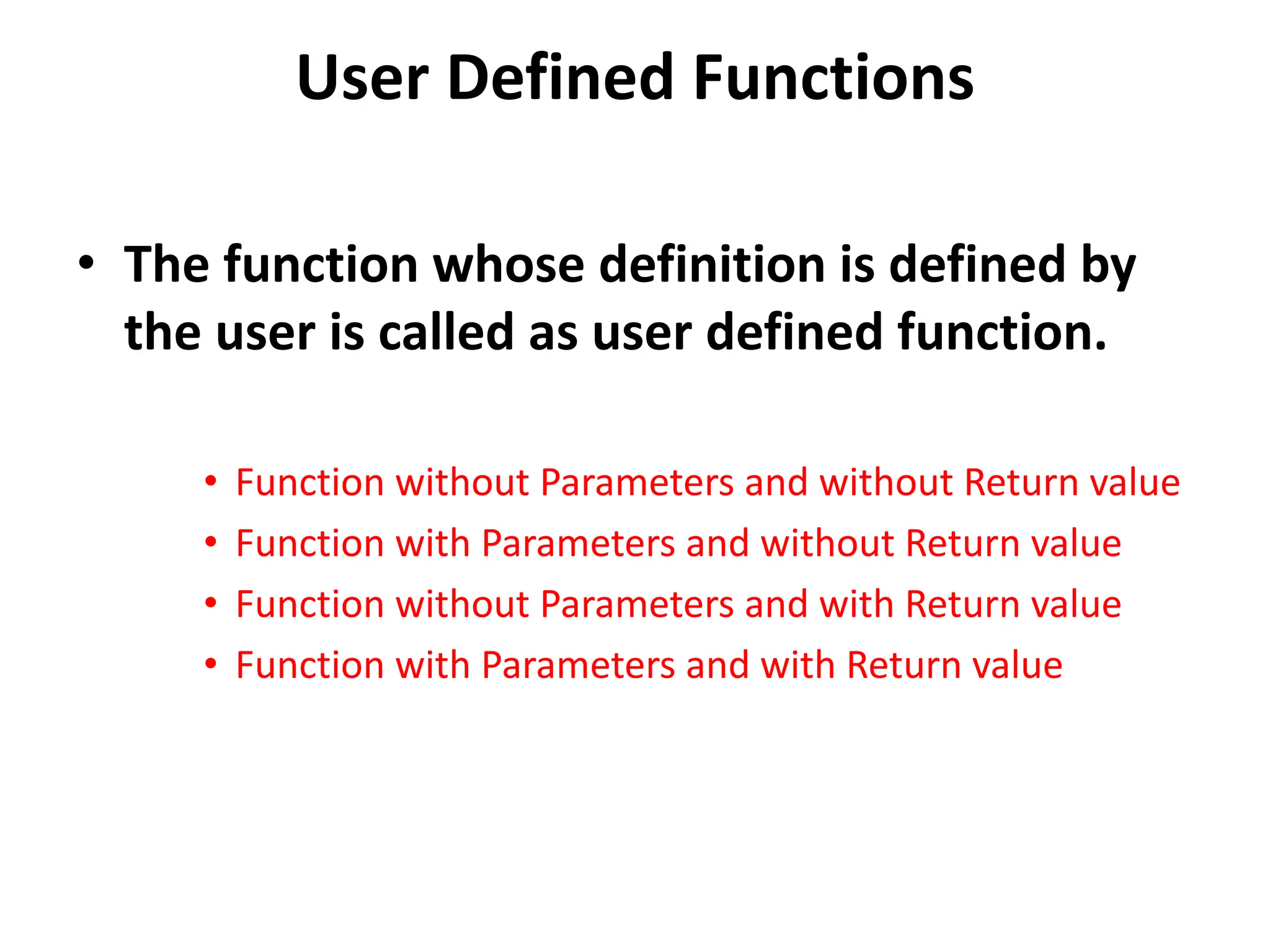
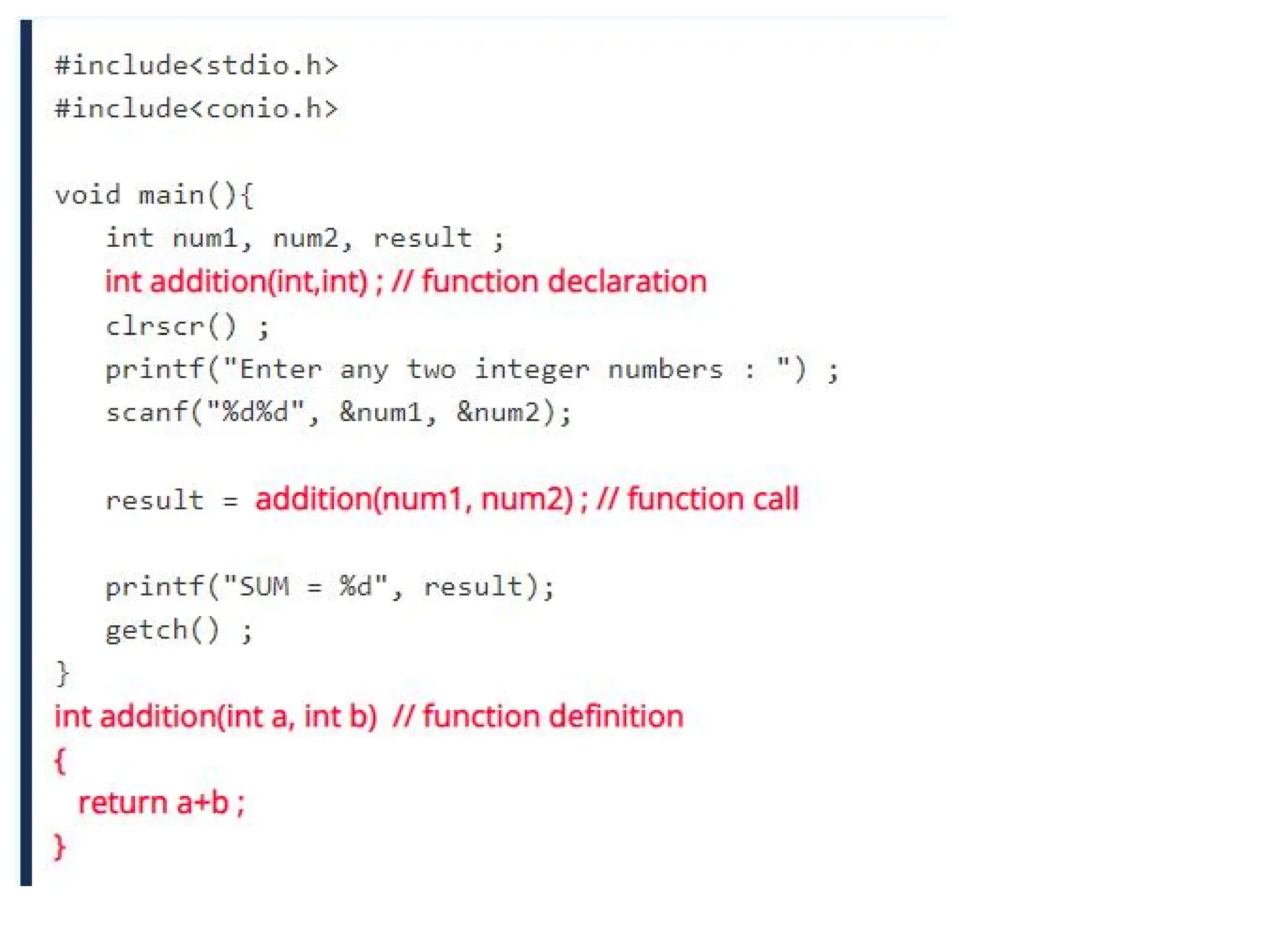
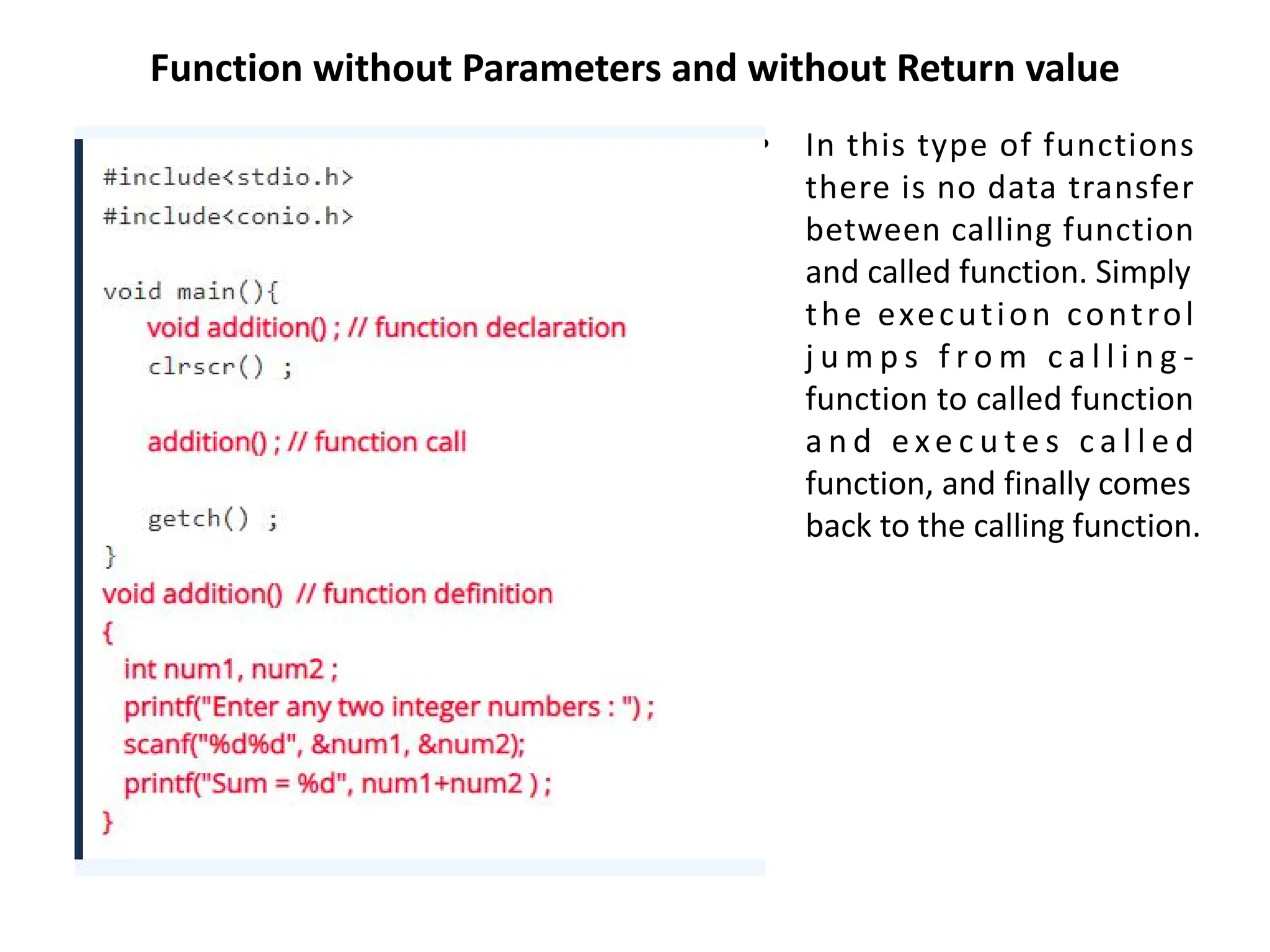
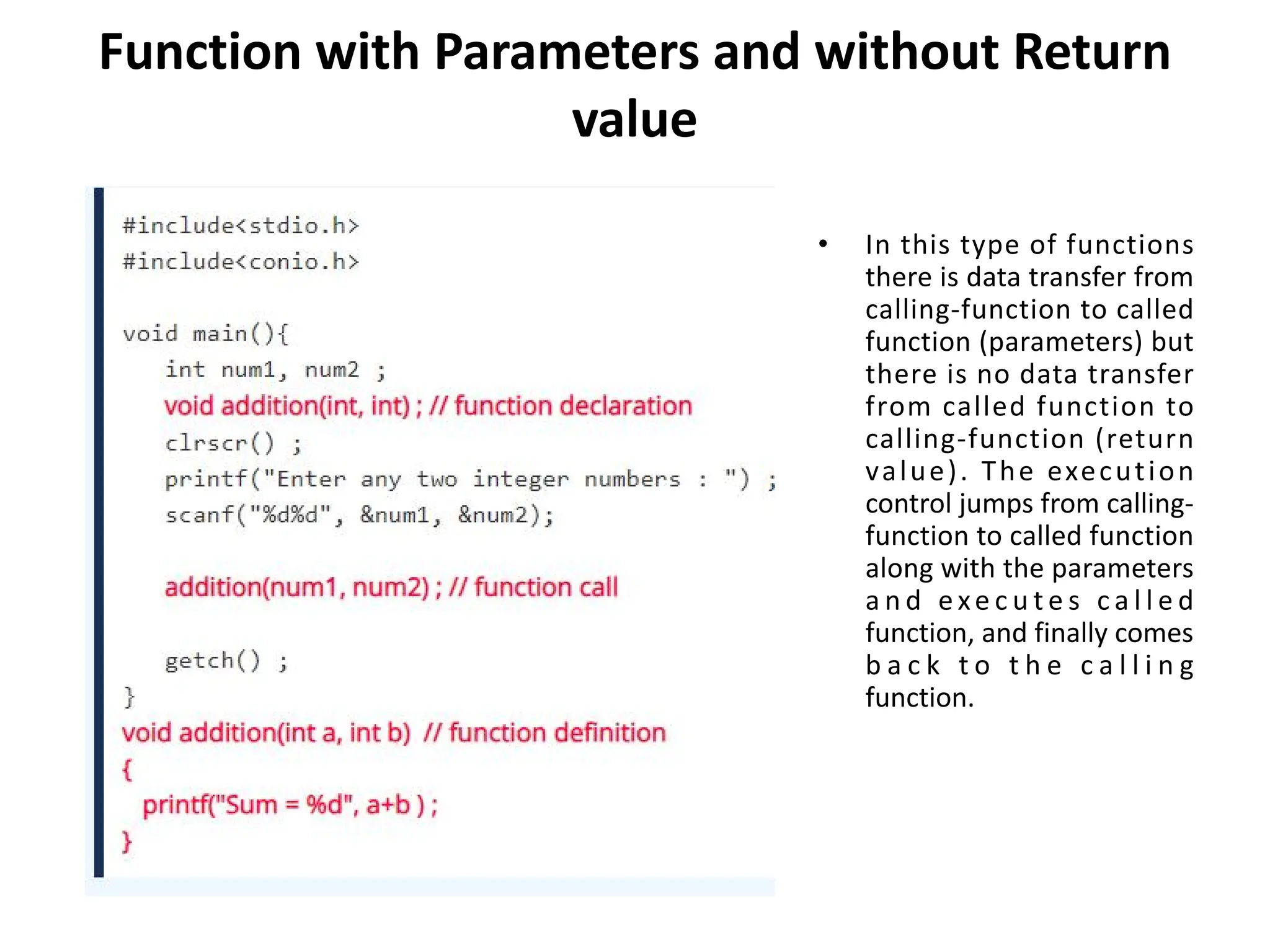
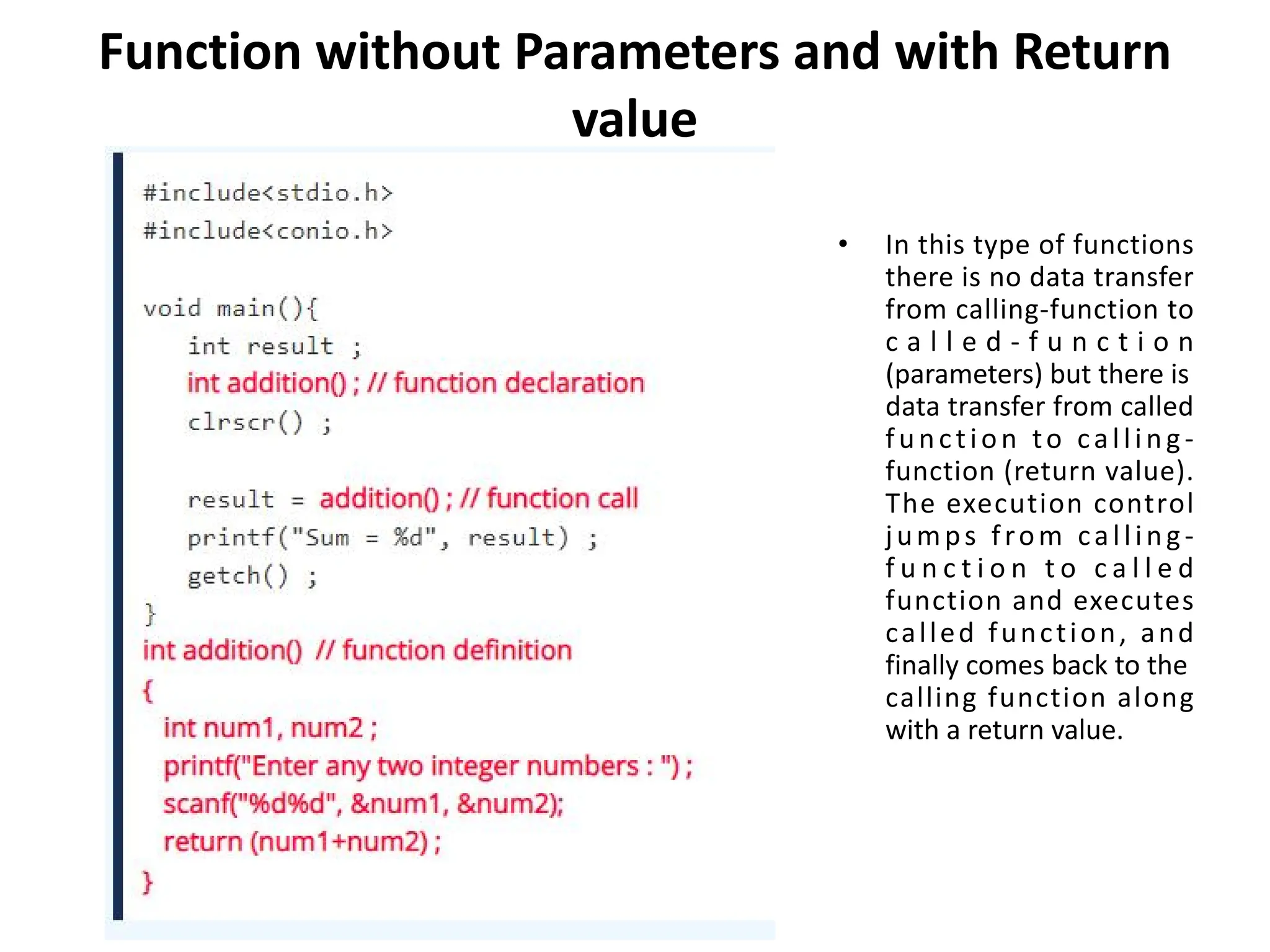
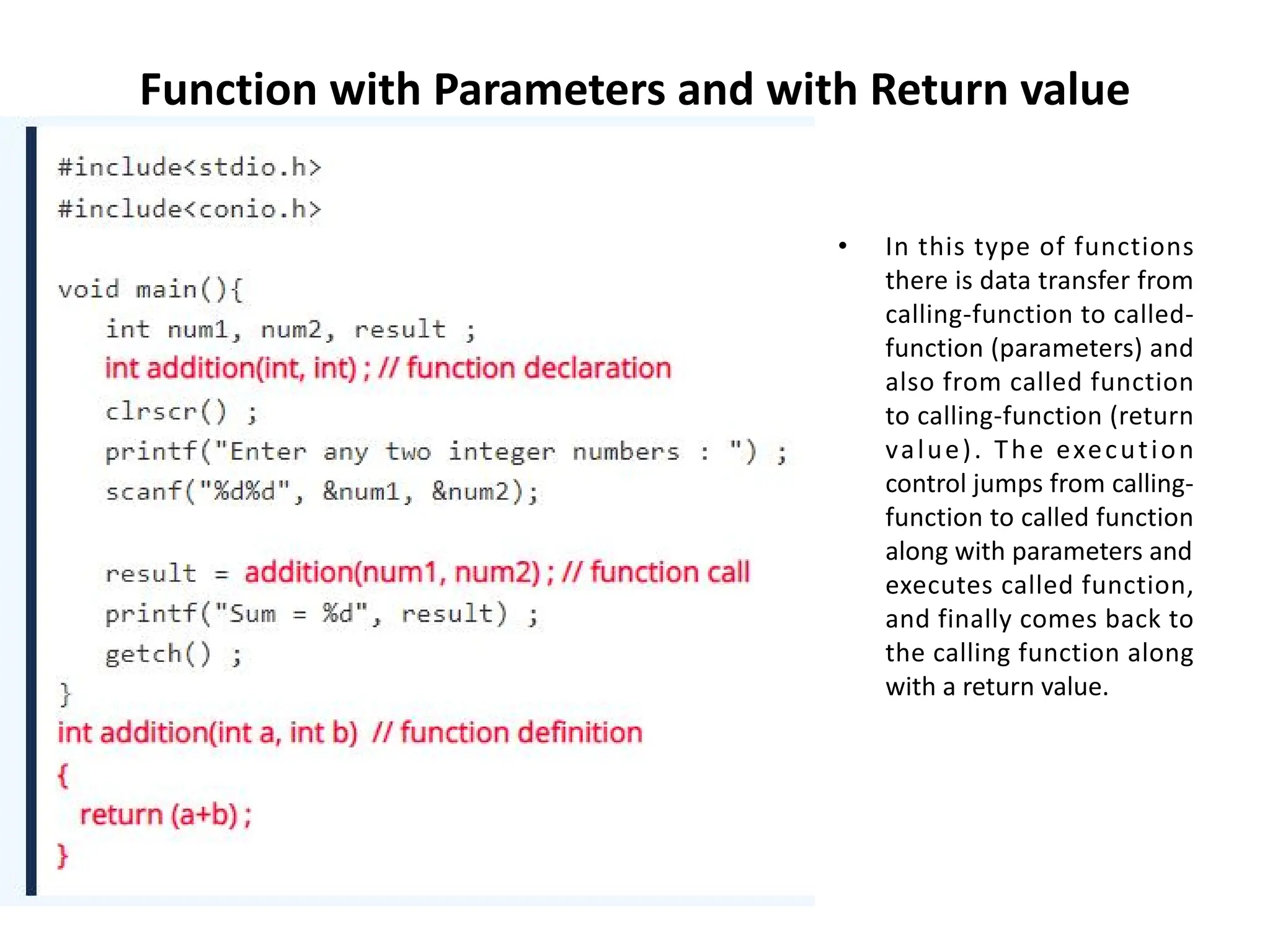
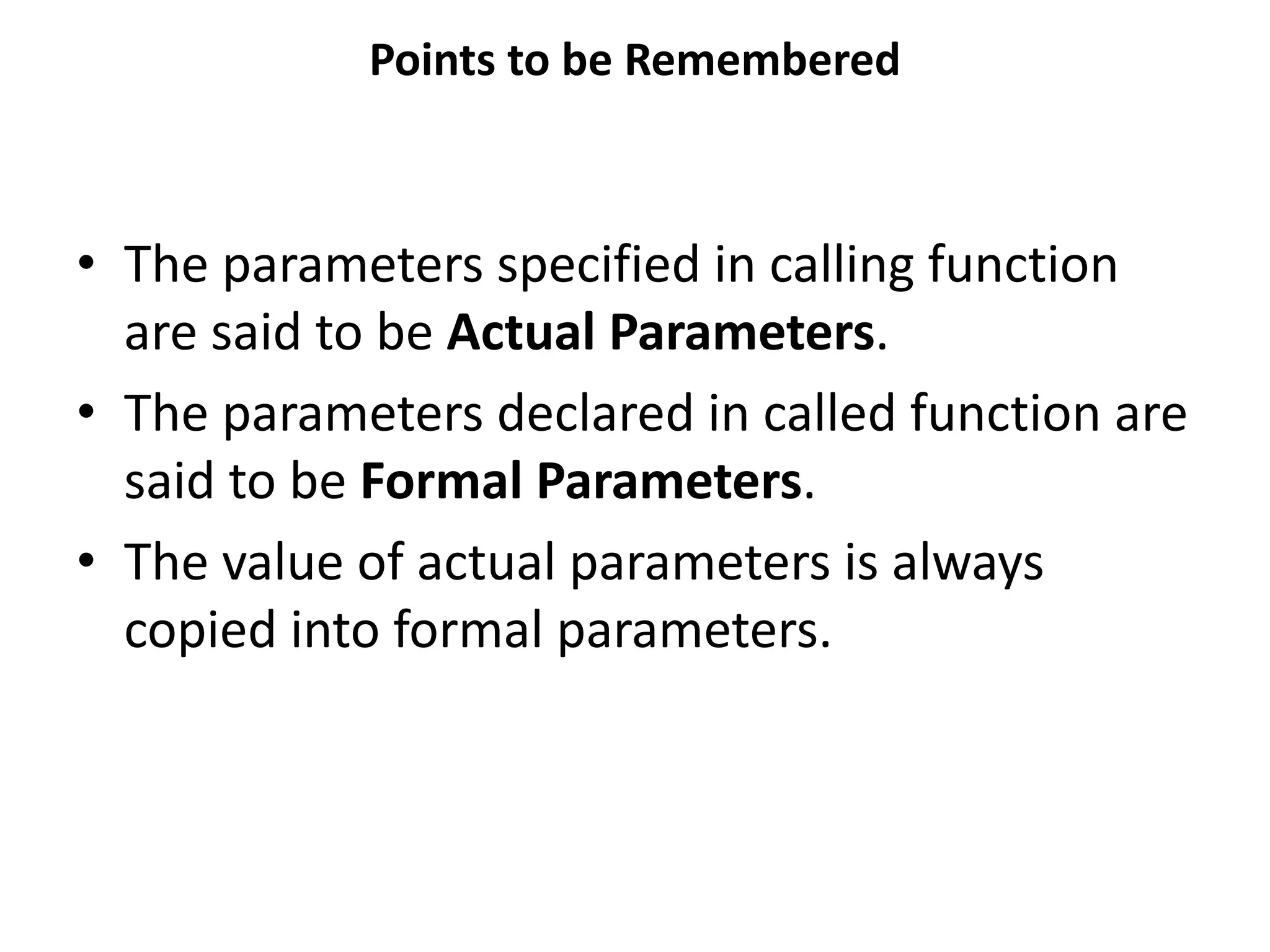
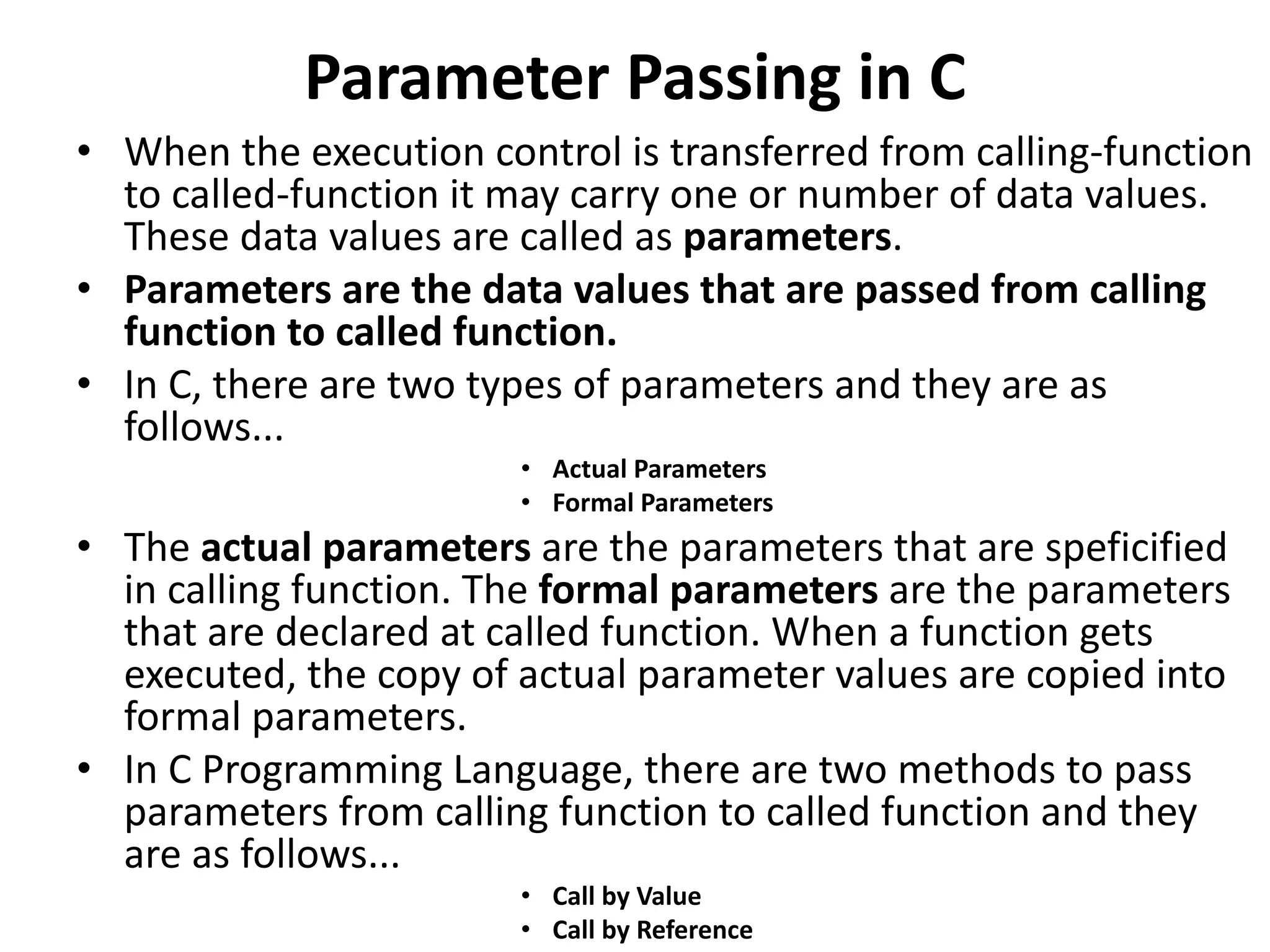
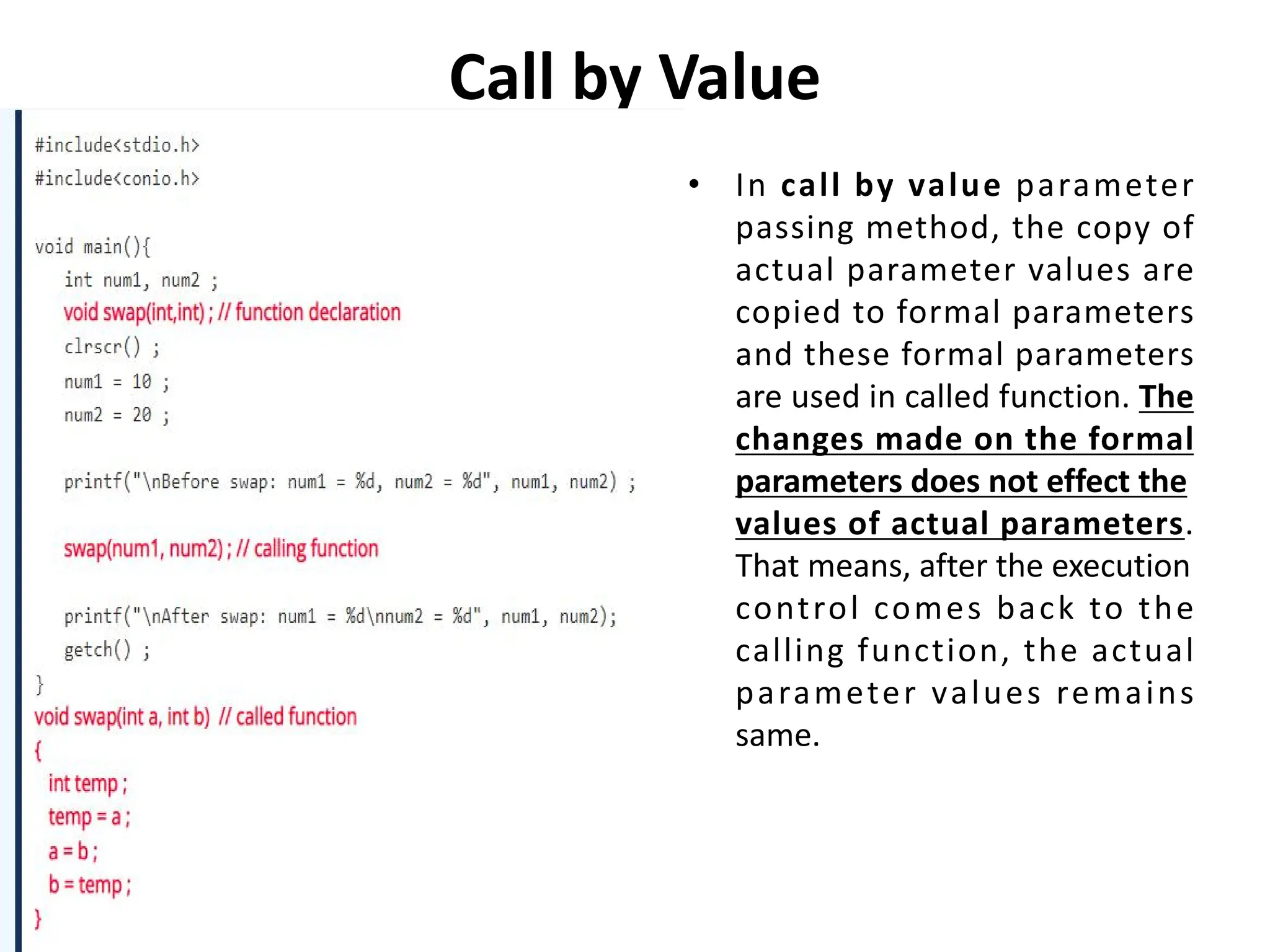
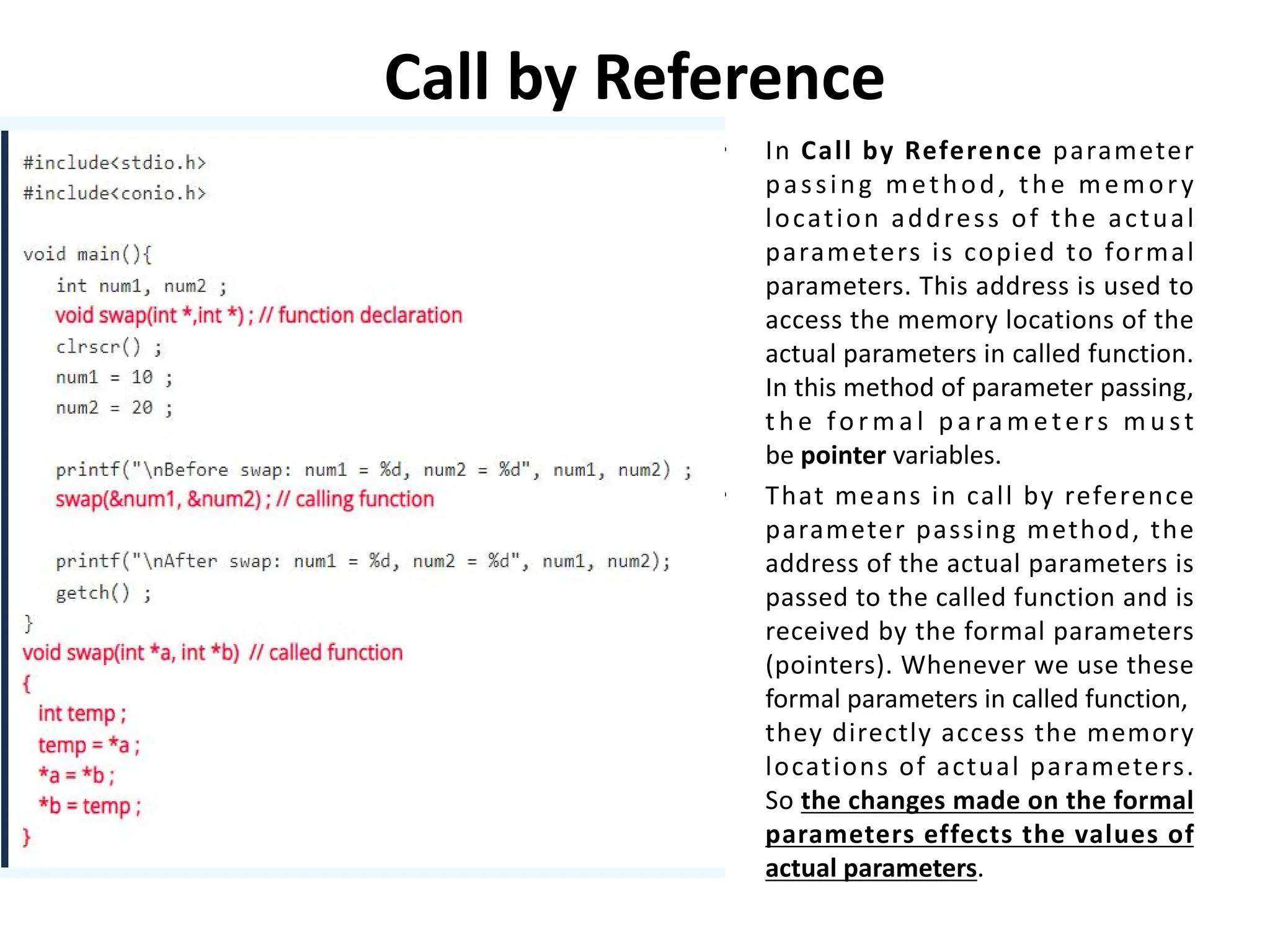
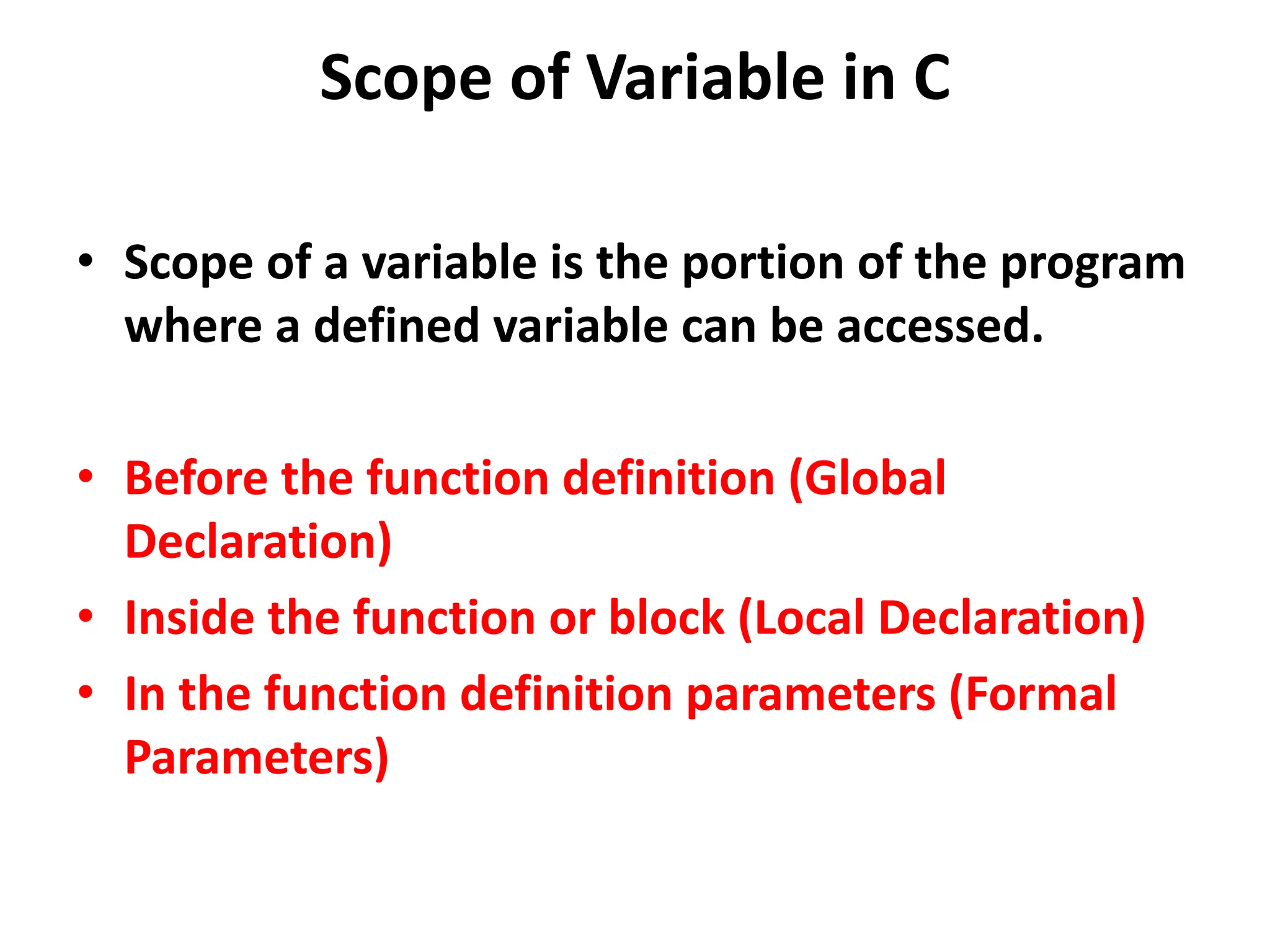
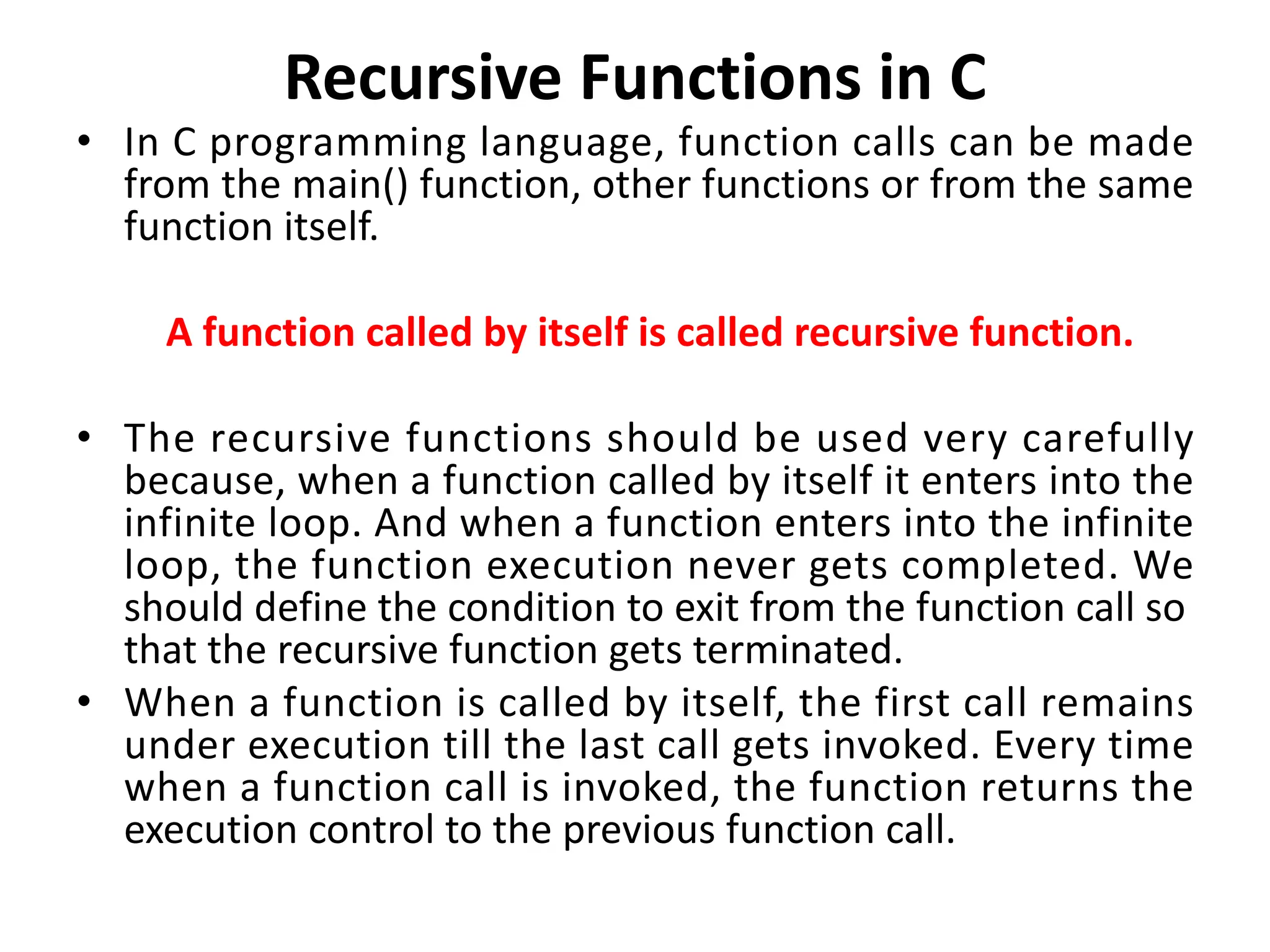
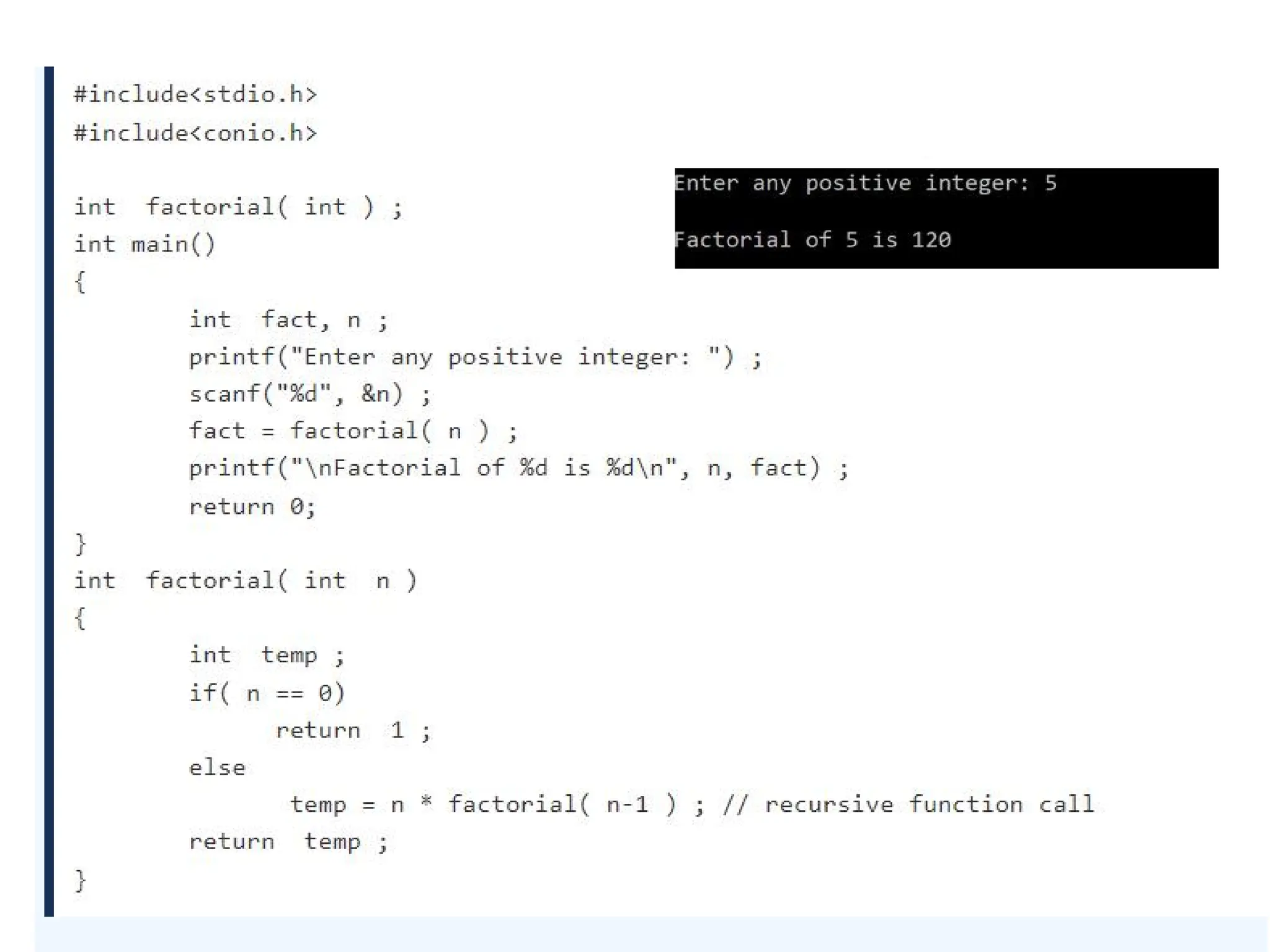
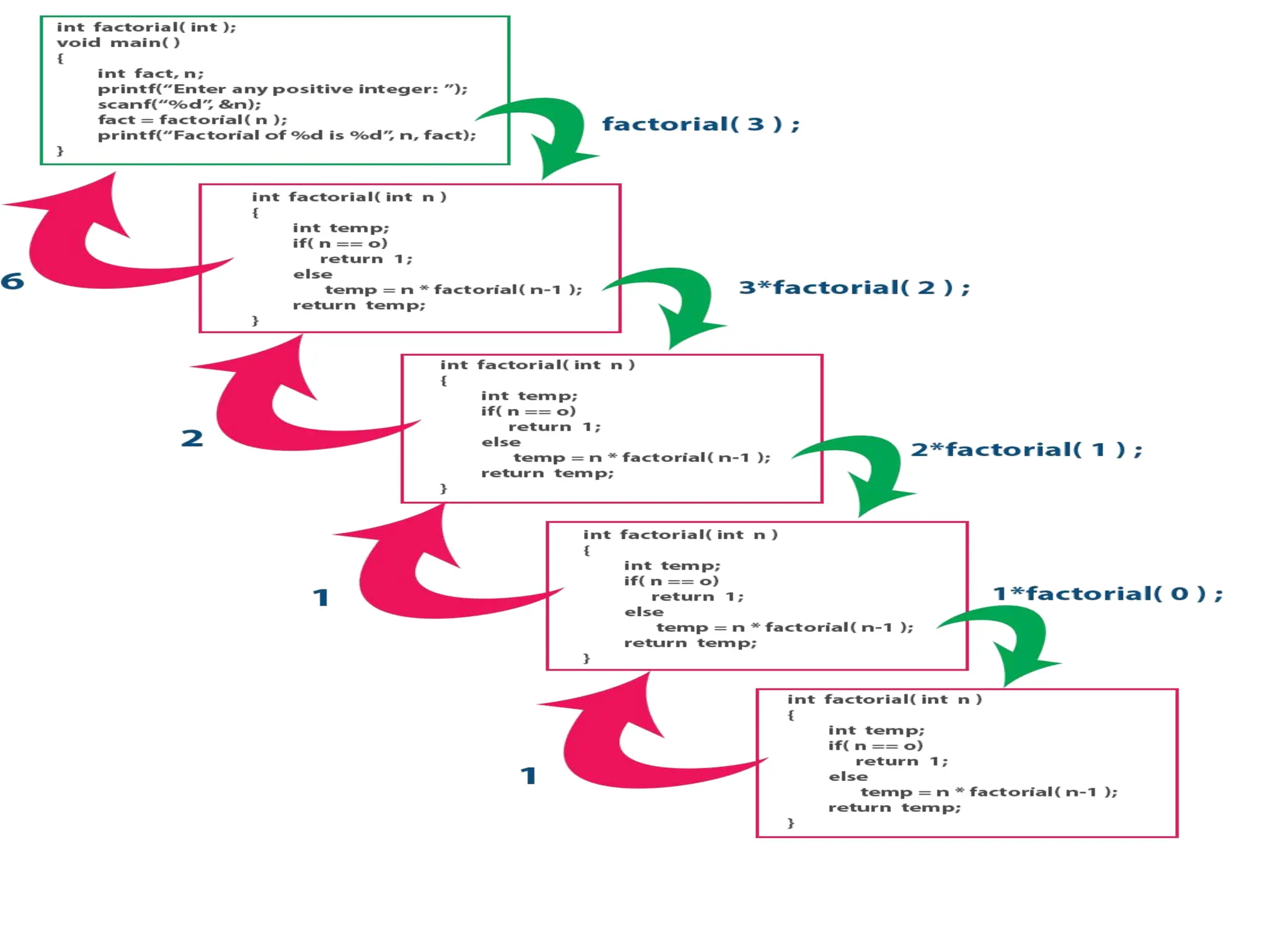
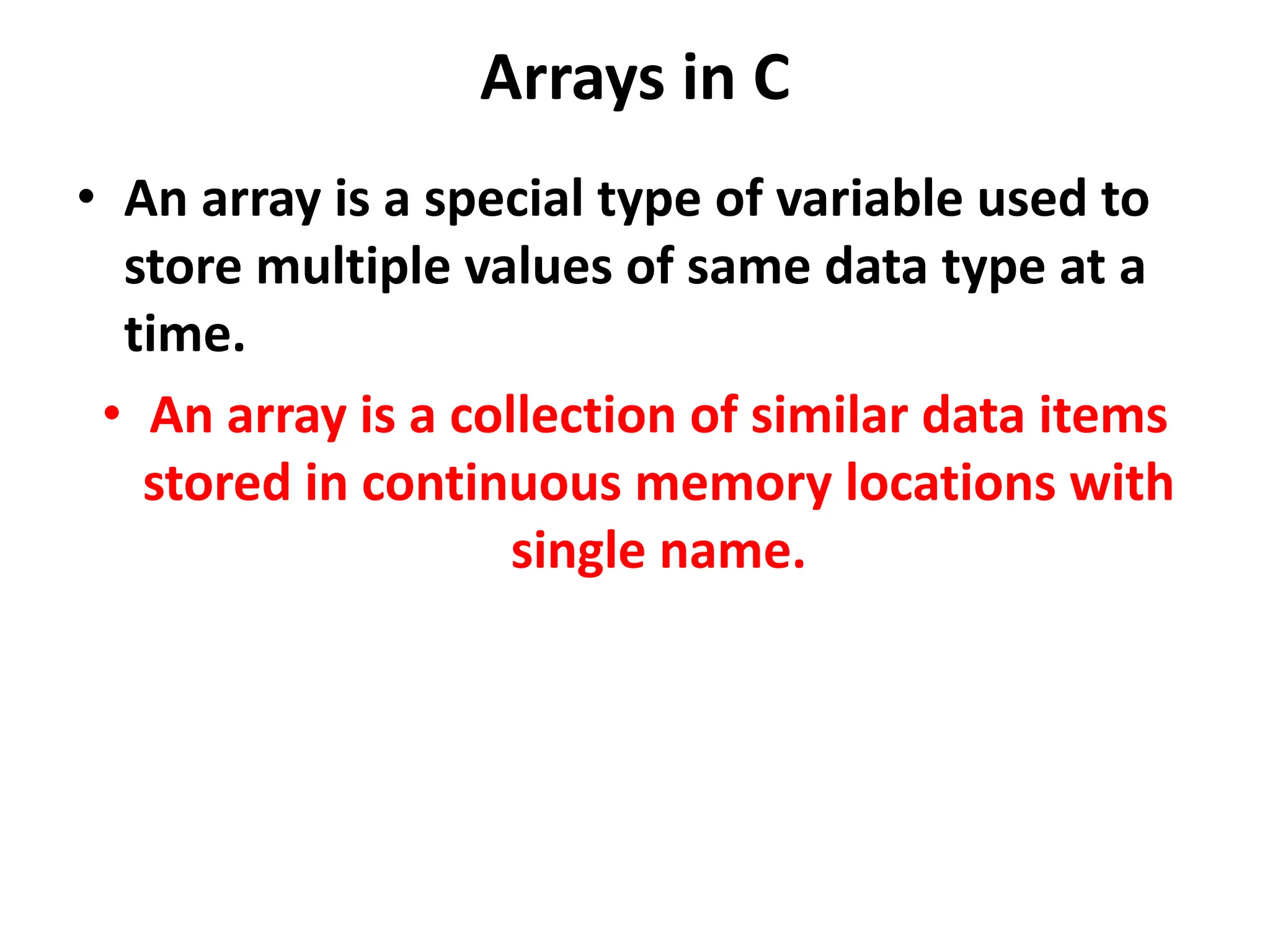
![Declaration of an Array • In C programming language, when we want to create an array we must know the datatype of values to be stored in that array and also the number of values to be stored in that array. We use the following general syntax to create an array... • datatype arrayName [ size ] ; • Syntax for creating an array with size and initial values • datatype arrayName [ size ] = {value1, value2, ...} ; • Syntax for creating an array without size and with initial values • datatype arrayName [ ] = {value1, value2, ...} ; • In the above syntax, the datatype specifies the type of values we store in that array and size specifies the maximum number of values that can be stored in that array.](https://image.slidesharecdn.com/unit-1ppt-240920141620-6890aa2b/75/EC2311-Data-Structures-and-C-Programming-114-2048.jpg)
![• Example Code •int a [3] ; • Here, the compiler allocates 6 bytes of contiguous memory locations with a single name 'a' and tells the compiler to store three different integer values (each in 2 bytes of memory) into that 6 bytes of memory. • In the above memory allocation, all the three memory locations have a common name 'a'. So accessing individual memory location is not possible directly. Hence compiler not only allocates the memory but also assigns a numerical reference value to every individual memory location of an array. This reference number is called "Index" or "subscript" or "indices".](https://image.slidesharecdn.com/unit-1ppt-240920141620-6890aa2b/75/EC2311-Data-Structures-and-C-Programming-115-2048.jpg)
![Accessing Individual Elements of an Array arrayName [ indexValue ] ;](https://image.slidesharecdn.com/unit-1ppt-240920141620-6890aa2b/75/EC2311-Data-Structures-and-C-Programming-116-2048.jpg)
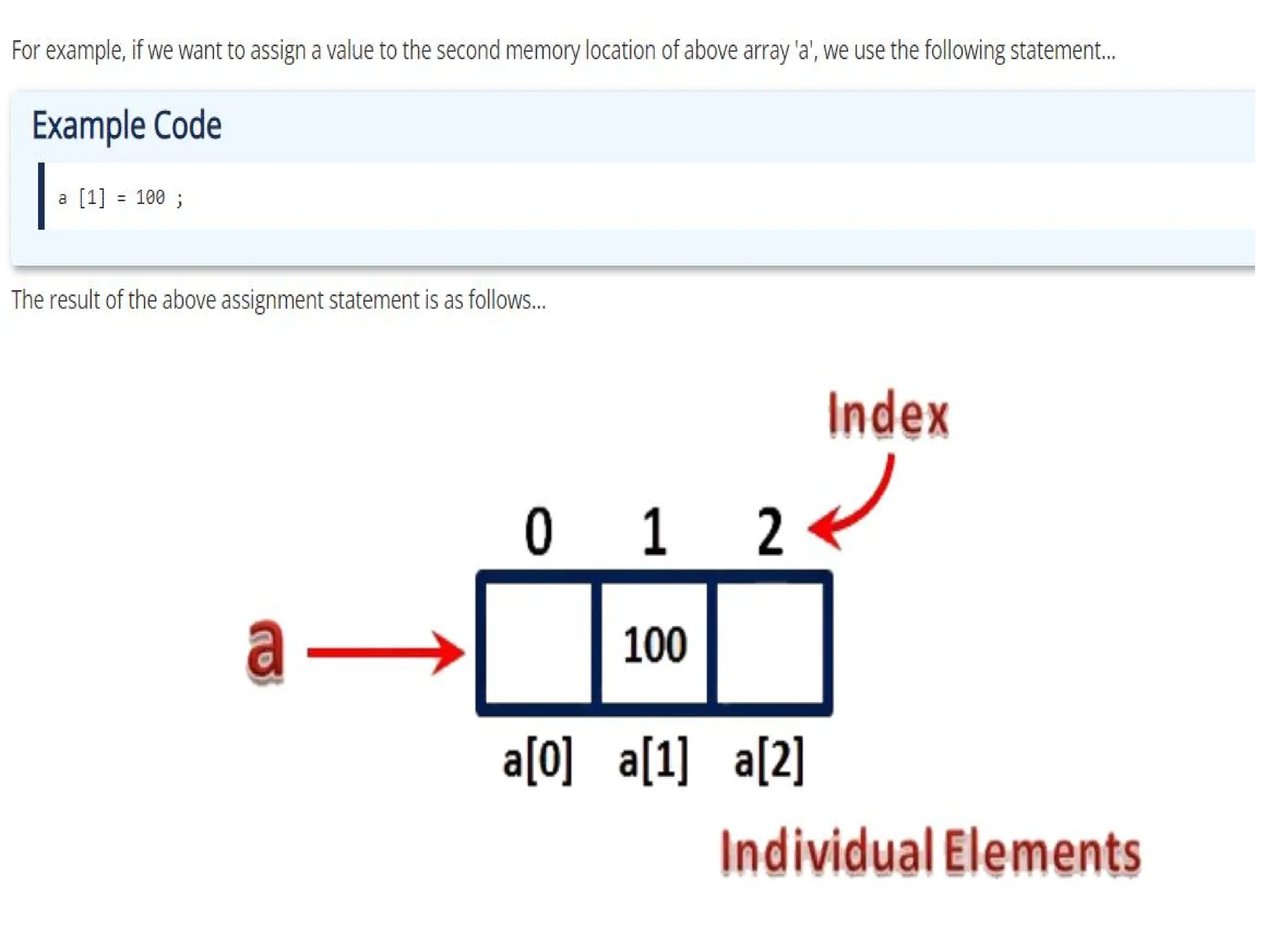
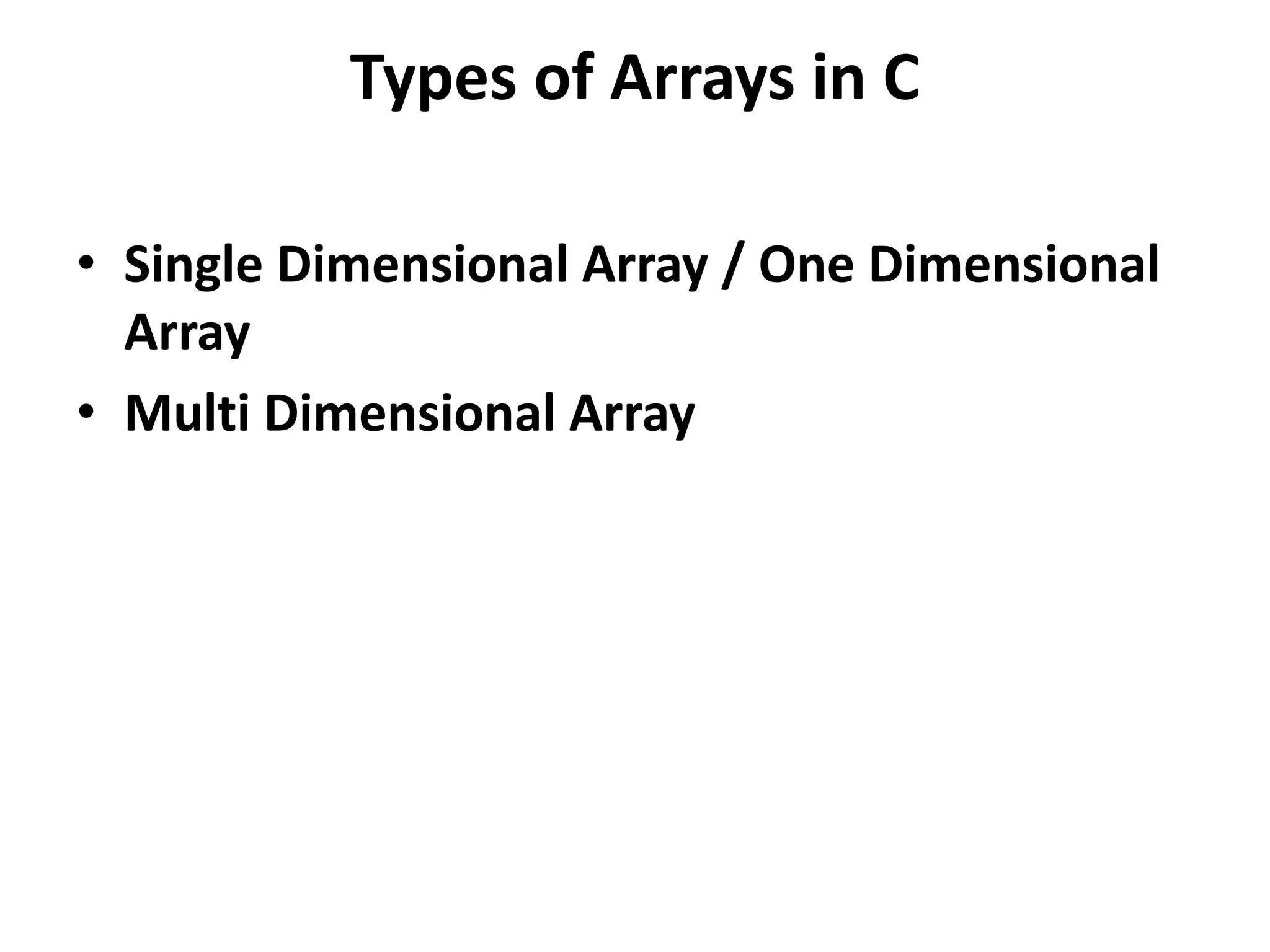
![Single Dimensional Array • single dimensional arrays are used to store list of values of same datatype. • In other words, single dimensional arrays are used to store a row of values. In single dimensional array, data is stored in linear form. • Single dimensional arrays are also called as one-dimensional arrays, Linear Arrays or simply 1-D Arrays. • Declaration of Single Dimensional Array • We use the following general syntax for declaring a single dimensional array... • datatype arrayName [ size ] ; • Example Code • int rollNumbers [60] ; • The above declaration of single dimensional array reserves 60 continuous memory locations of 2 bytes each with the name rollNumbers and tells the compiler to allow only integer values into those memory locations.](https://image.slidesharecdn.com/unit-1ppt-240920141620-6890aa2b/75/EC2311-Data-Structures-and-C-Programming-119-2048.jpg)
![Initialization of Single Dimensional Array • We use the following general syntax for declaring and initializing a single dimensional array with size and initial values. • datatype arrayName [ size ] = {value1, value2, ...} ; • Example Code • int marks [6] = { 89, 90, 76, 78, 98, 86 } ; • The above declaration of single dimensional array reserves 6 contiguous memory locations of 2 bytes each with the name marks and initializes with value 89 in first memory location, 90 in second memory location, 76 in third memory location, 78 in fourth memory location, 98 in fifth memory location and 86 in sixth memory location. • We can also use the following general syntax to intialize a single dimensional array without specifying size and with initial values... • datatype arrayName [ ] = {value1, value2, ...} ; • The array must be initialized if it is created without specifying any size. In this case, the size of the array is decided based on the number of values initialized.](https://image.slidesharecdn.com/unit-1ppt-240920141620-6890aa2b/75/EC2311-Data-Structures-and-C-Programming-120-2048.jpg)
![• Example Code int marks [] = { 89, 90, 76, 78, 98, 86 } ; char studentName [] = "btechsmartclass" ; • In the above example declaration, size of the array 'marks' is 6 and the size of the array 'studentName' is 16. This is because in case of character array, compiler stores one exttra character called 0 (NULL) at the end.](https://image.slidesharecdn.com/unit-1ppt-240920141620-6890aa2b/75/EC2311-Data-Structures-and-C-Programming-121-2048.jpg)
![Accessing Elements of Single Dimensional Array • In c programming language, to access the elements of single dimensional array we use array name followed by index value of the element that to be accessed. Here the index value must be enclosed in square braces. Index value of an element in an array is the reference number given to each element at the time of memory allocation. The index value of single dimensional array starts with zero (0) for first element and incremented by one for each element. The index value in an array is also called as subscript or indices. We use the following general syntax to access individual elements of single dimensional array... • arrayName [ indexValue ] • Example Code • marks [2] = 99 ; • In the above statement, the third element of 'marks' array is assinged with value '99'.](https://image.slidesharecdn.com/unit-1ppt-240920141620-6890aa2b/75/EC2311-Data-Structures-and-C-Programming-122-2048.jpg)
![Multi Dimensional Array • An array of arrays is called as multi dimensional array. In simple words, an array created with more than one dimension (size) is called as multi dimensional array. Multi dimensional array can be of two dimensional array or three dimensional array or four dimensional array or more... Most popular and commonly used multi dimensional array is two dimensional array. The 2-D arrays are used to store data in the form of table. We also use 2-D arrays to create mathematical matrices. • Declaration of Two Dimensional Array • We use the following general syntax for declaring a two dimensional array... – datatype arrayName [ rowSize ] [ columnSize ] ; • Example Code • int matrix_A [2][3] ; • The above declaration of two dimensional array reserves 6 continuous memory locations of 2 bytes each in the form of 2 rows and 3 columns.](https://image.slidesharecdn.com/unit-1ppt-240920141620-6890aa2b/75/EC2311-Data-Structures-and-C-Programming-123-2048.jpg)
![Initialization of Two Dimensional Array • We use the following general syntax for declaring and initializing a two dimensional array with specific number of rows and coloumns with initial values. • datatype arrayName [rows][colmns] = {{r1c1value, r1c2value, ...},{r2c1, r2c2,...}...} ; • Example Code • int matrix_A [2][3] = { {1, 2, 3},{4, 5, 6} } ; • The above declaration of two-dimensional array reserves 6 contiguous memory locations of 2 bytes each in the form of 2 rows and 3 columns. And the first row is initialized with values 1, 2 & 3 and second row is initialized with values 4, 5 & 6.](https://image.slidesharecdn.com/unit-1ppt-240920141620-6890aa2b/75/EC2311-Data-Structures-and-C-Programming-124-2048.jpg)
![Accessing Individual Elements of Two Dimensional Array • In a c programming language, to access elements of a two- dimensional array we use array name followed by row index value and column index value of the element that to be accessed. Here the row and column index values must be enclosed in separate square braces. In case of the two-dimensional array the compiler assigns separate index values for rows and columns. We use the following general syntax to access the individual elements of a two-dimensional array... • arrayName [ rowIndex ] [ columnIndex ] • Example Code • matrix_A [0][1] = 10 ; • In the above statement, the element with row index 0 and column index 1 of matrix_A array is assinged with value 10.](https://image.slidesharecdn.com/unit-1ppt-240920141620-6890aa2b/75/EC2311-Data-Structures-and-C-Programming-125-2048.jpg)
